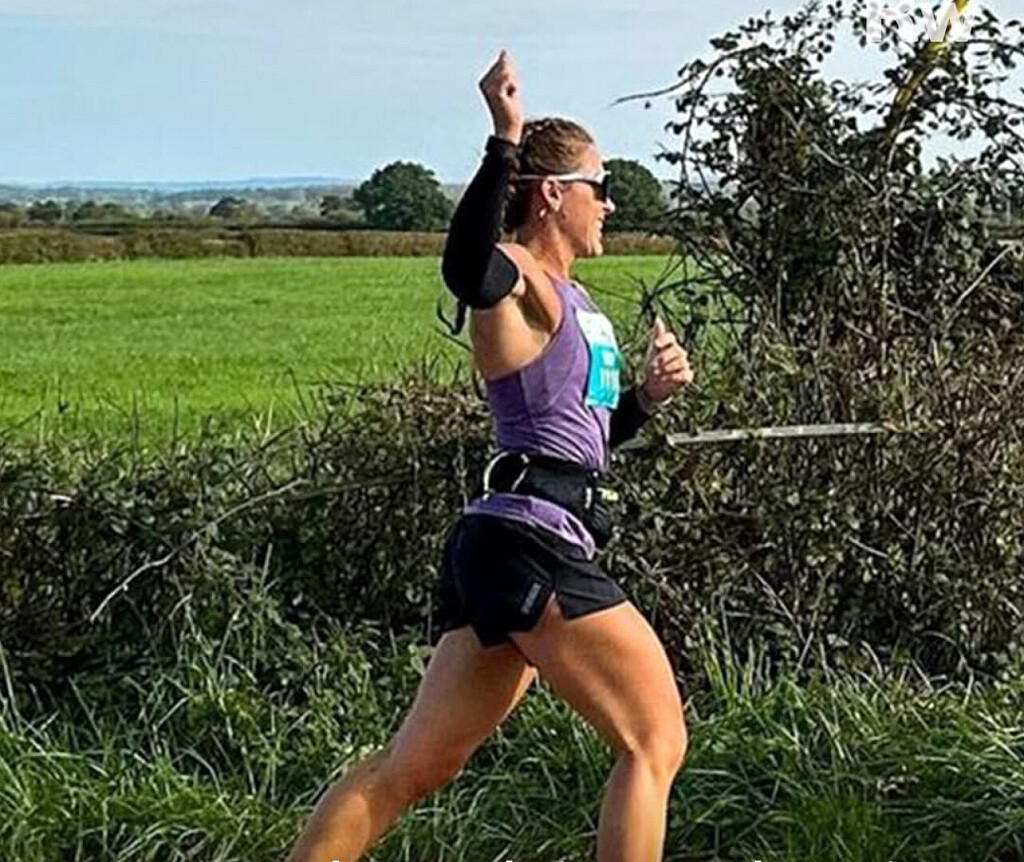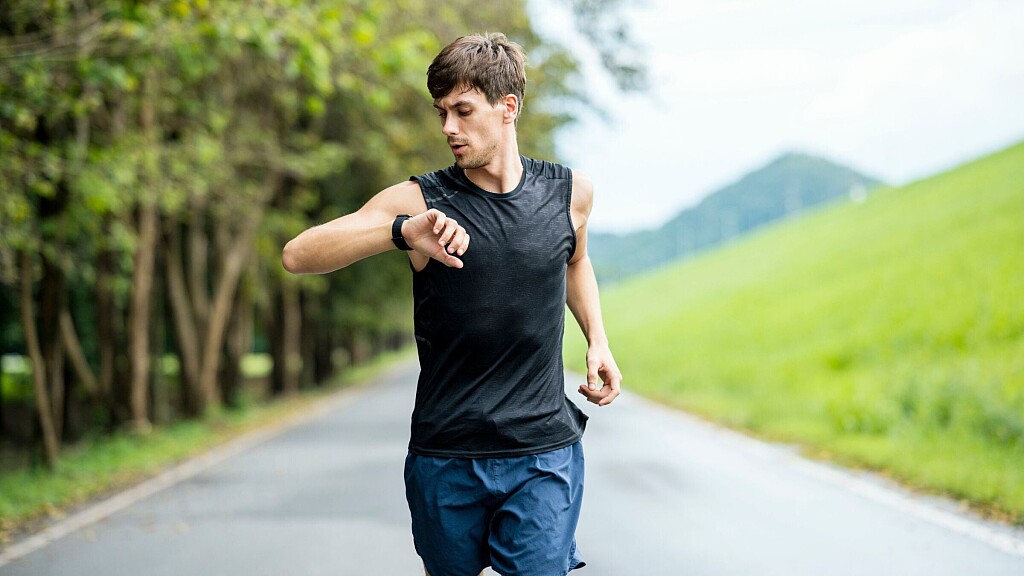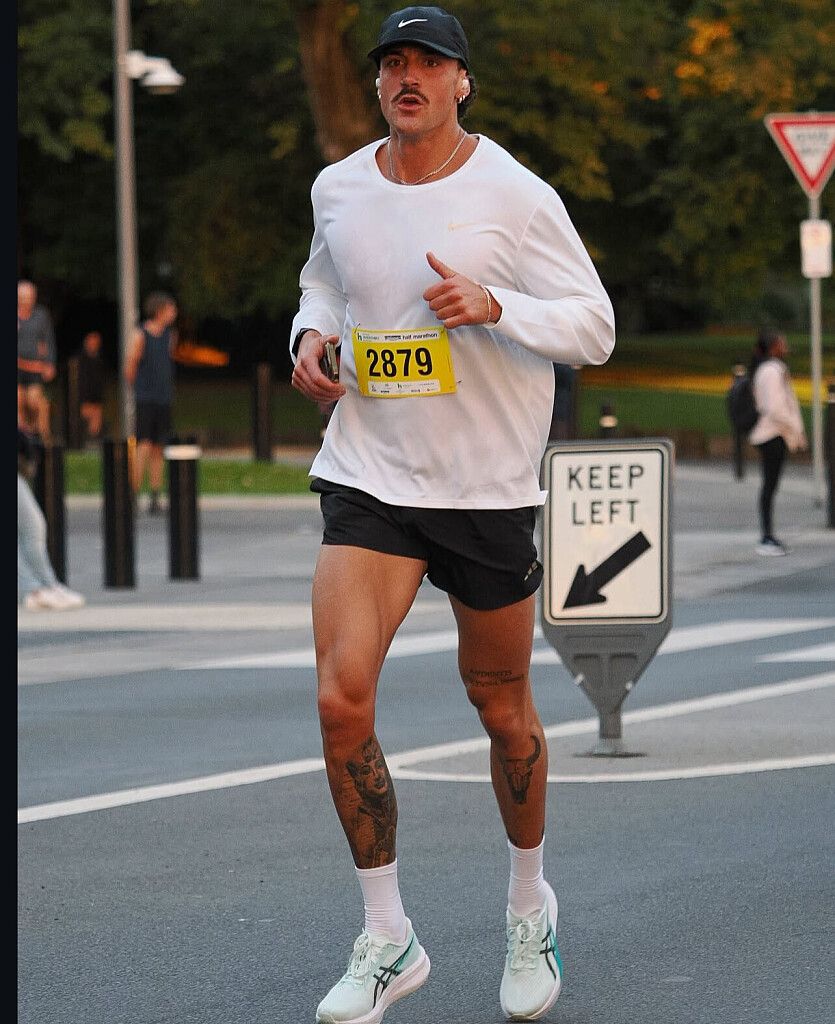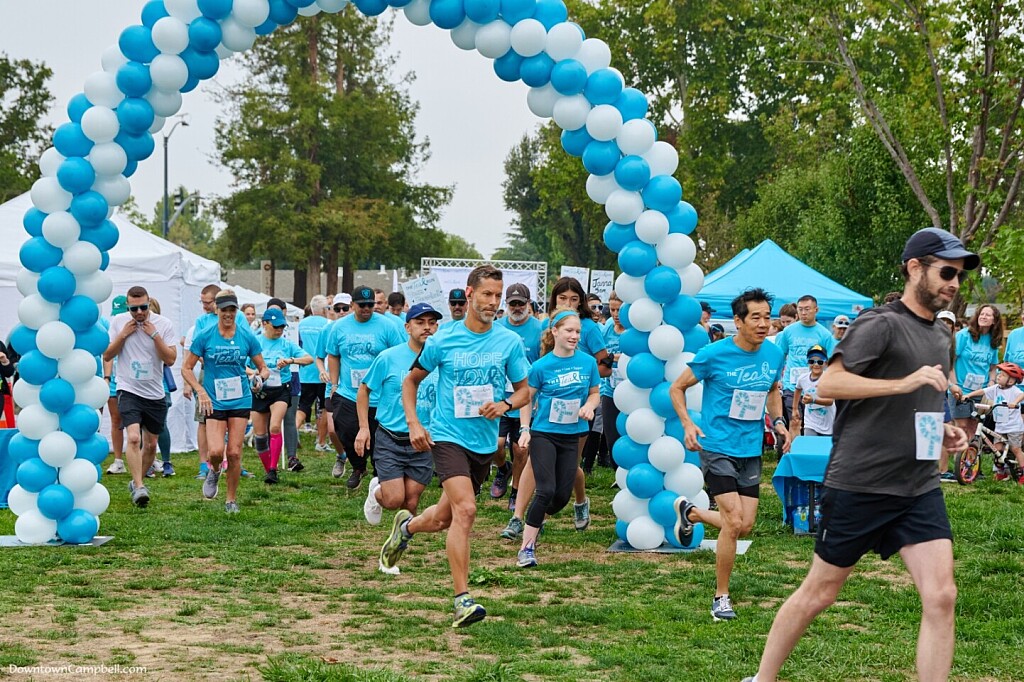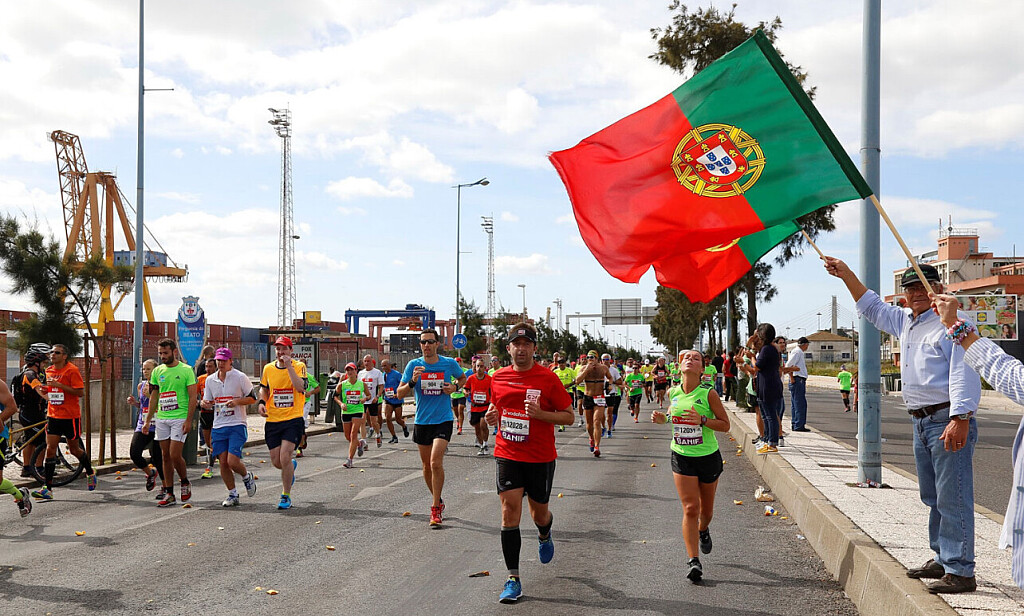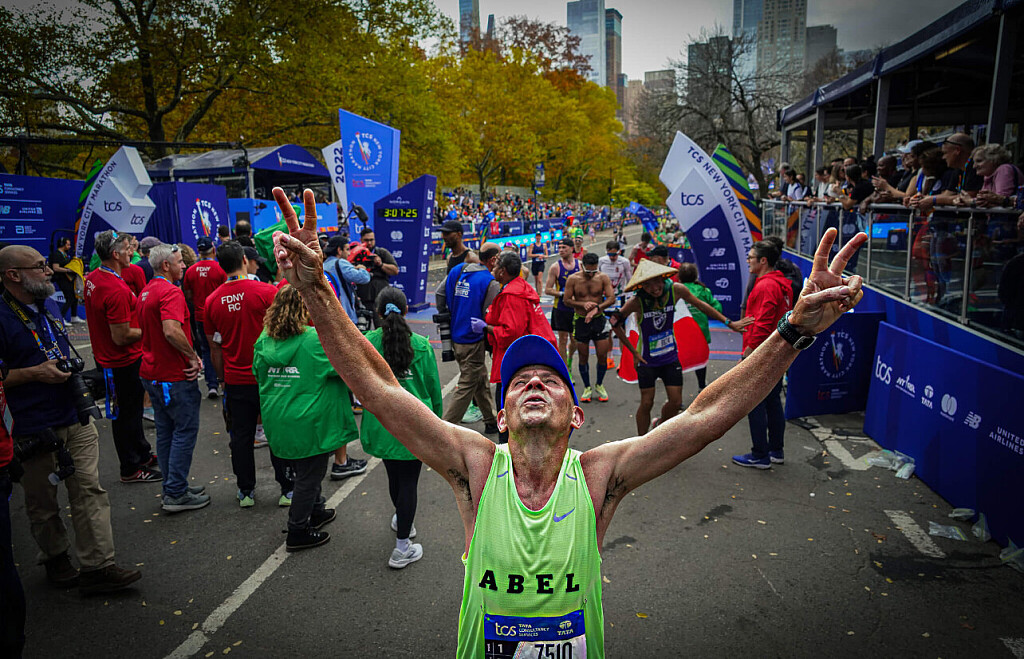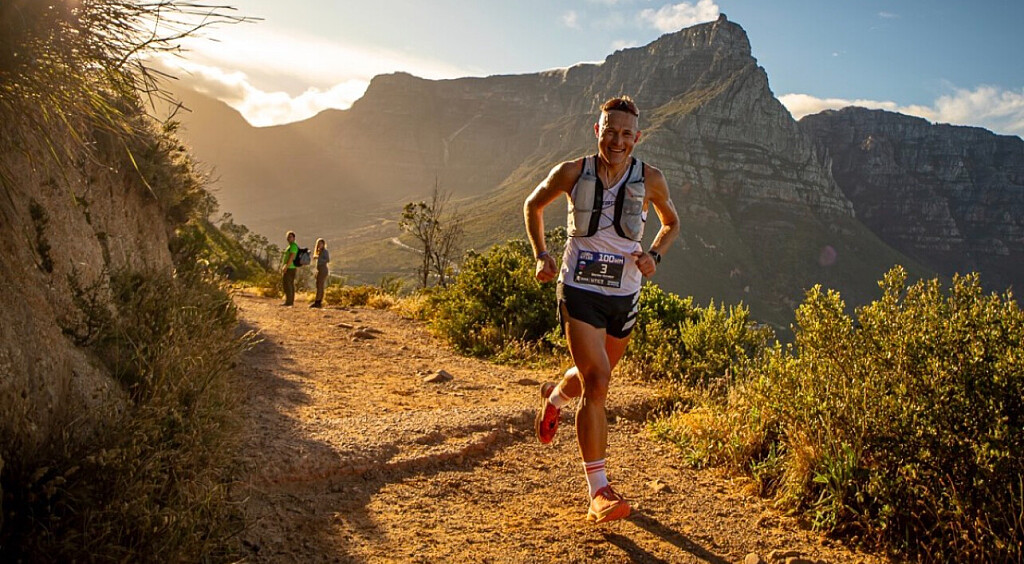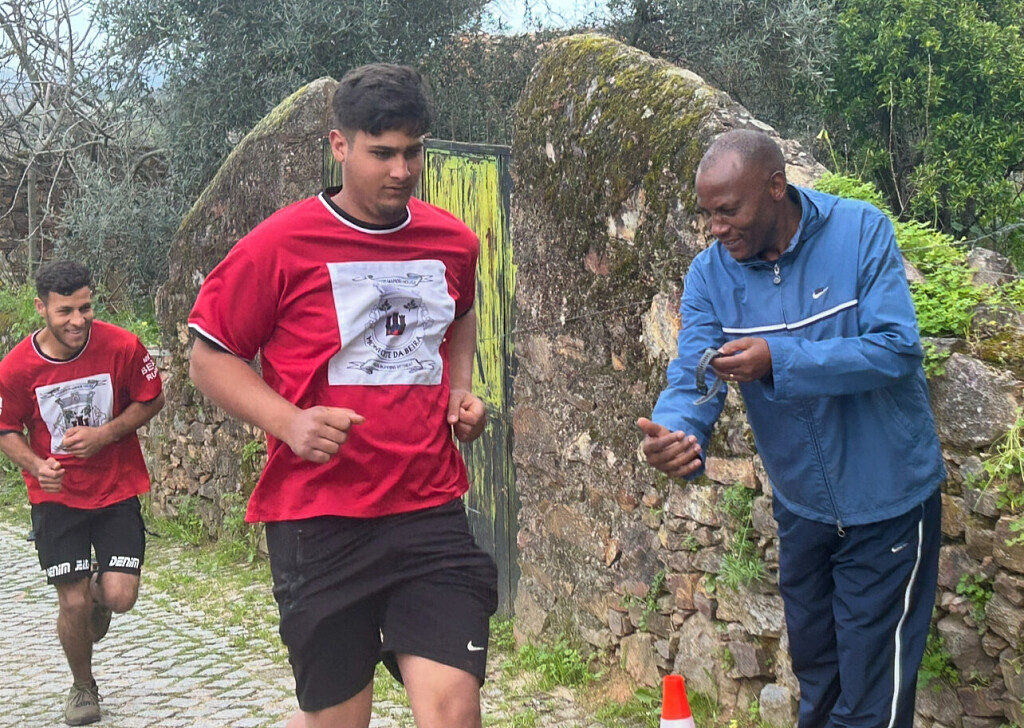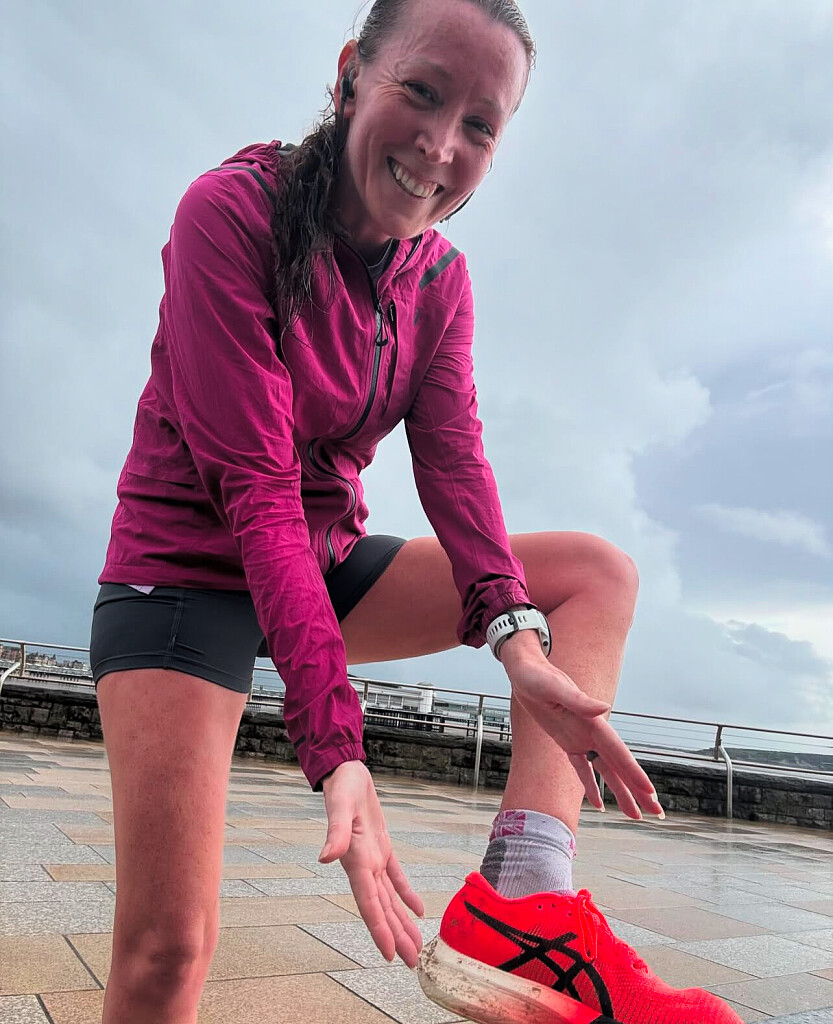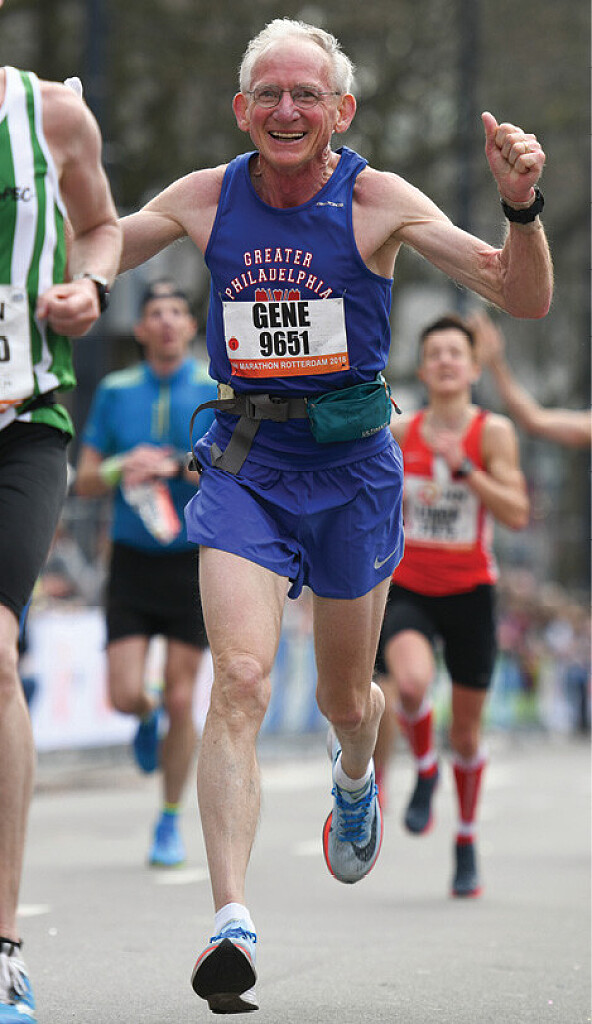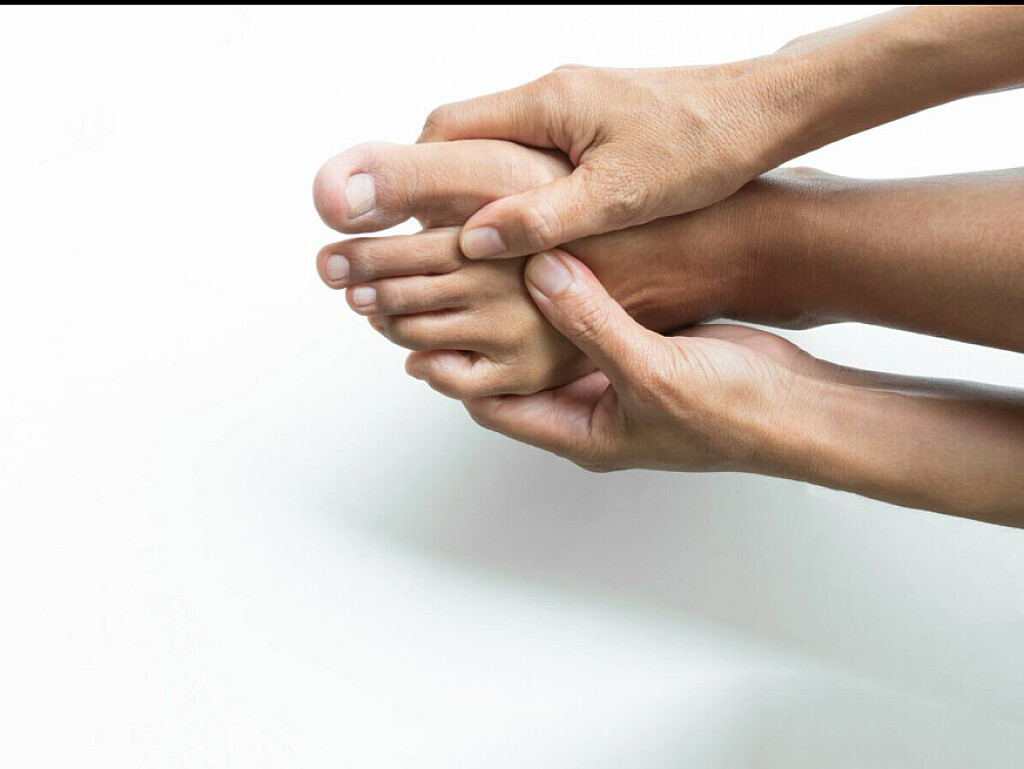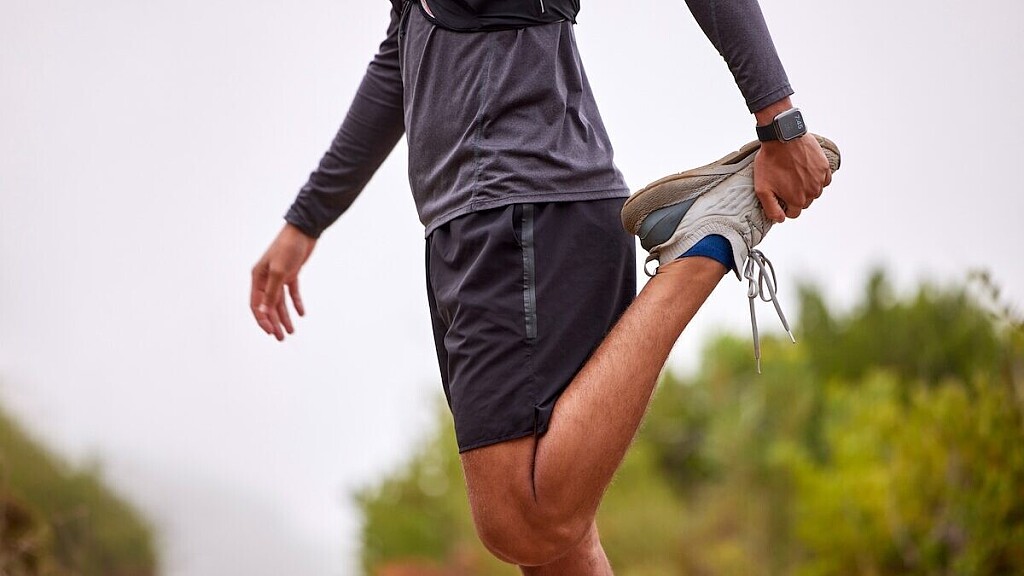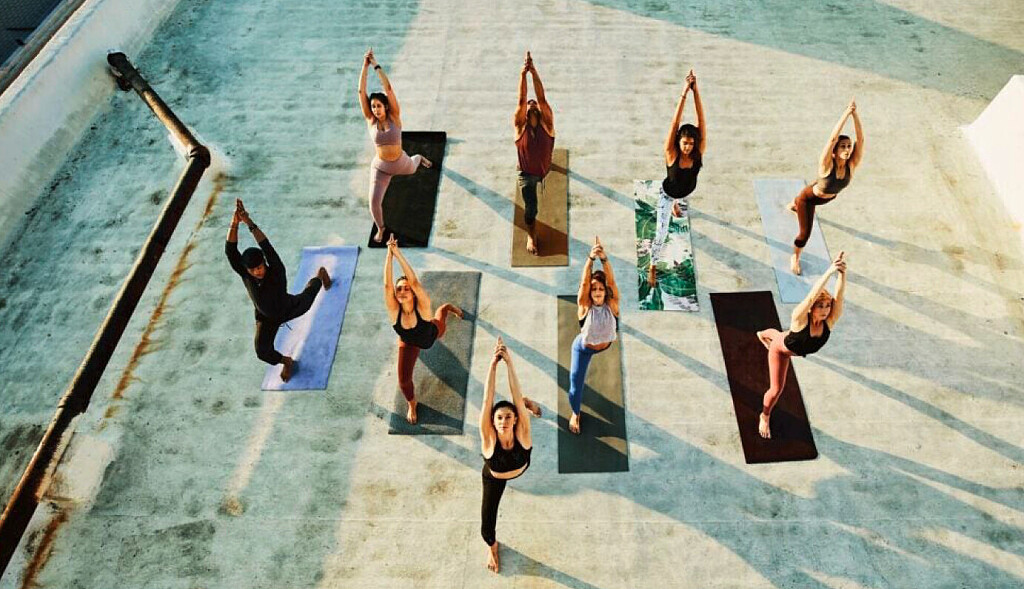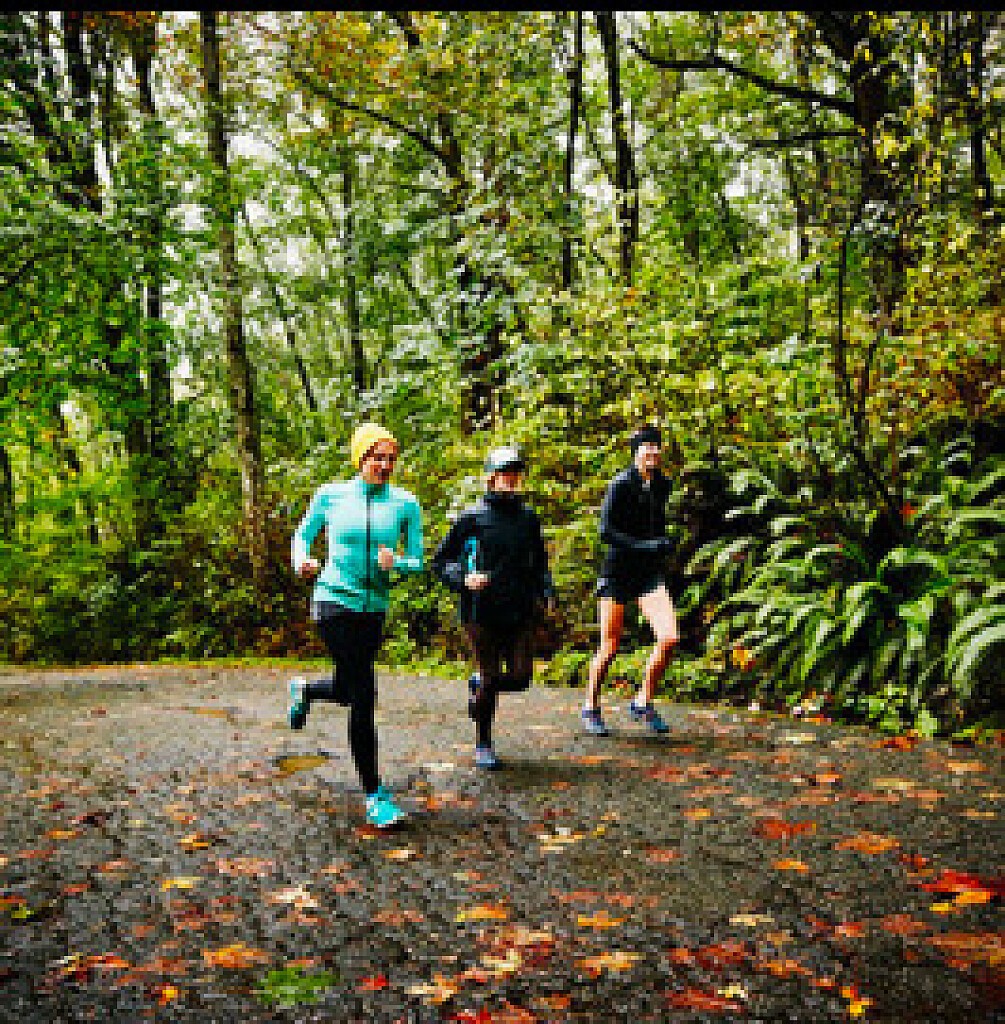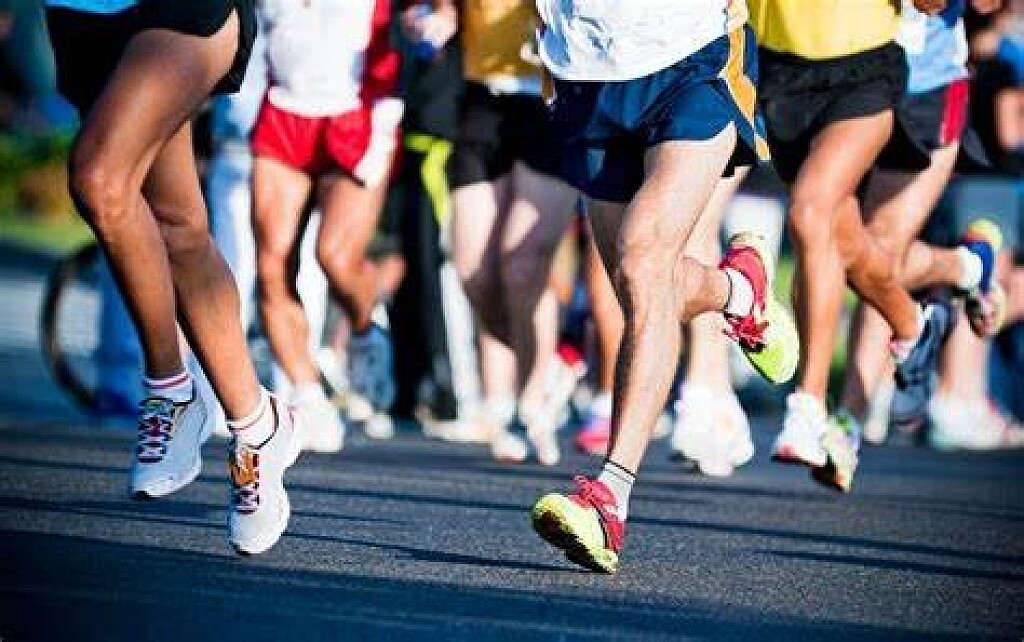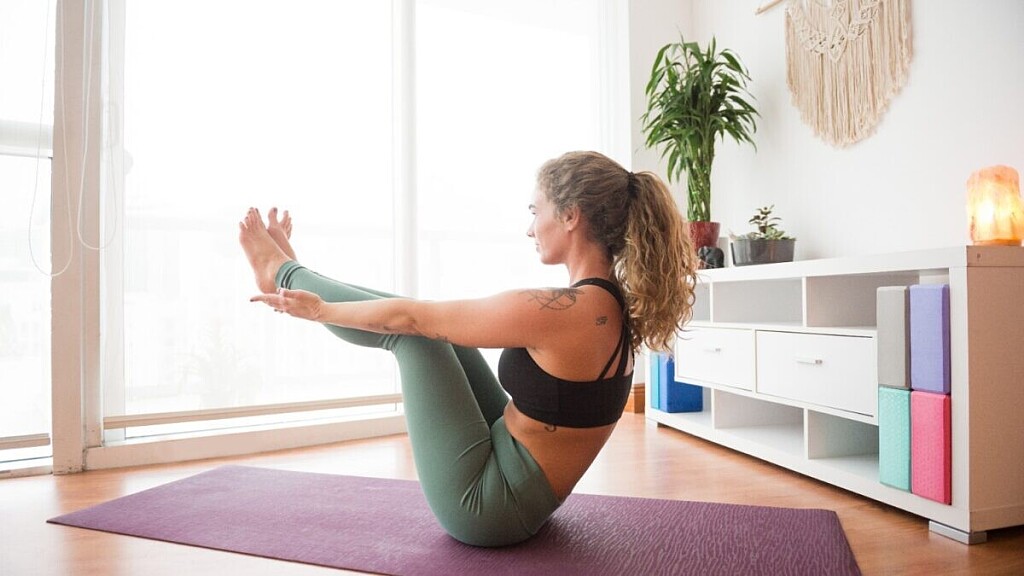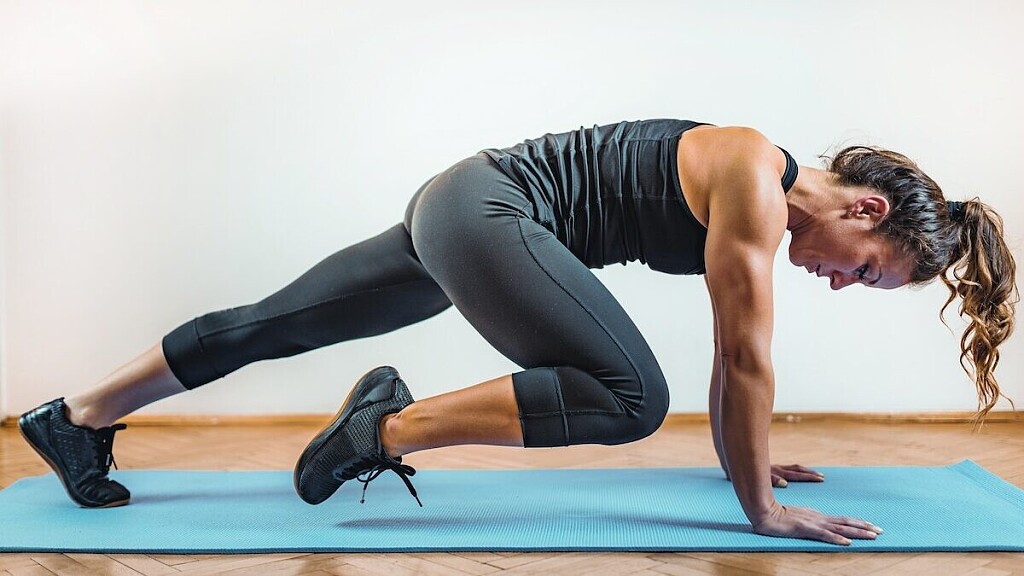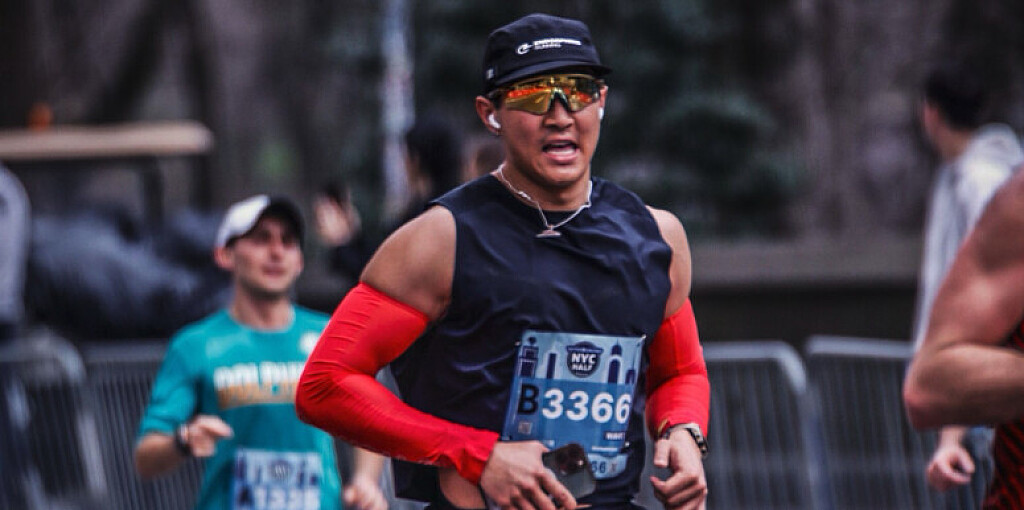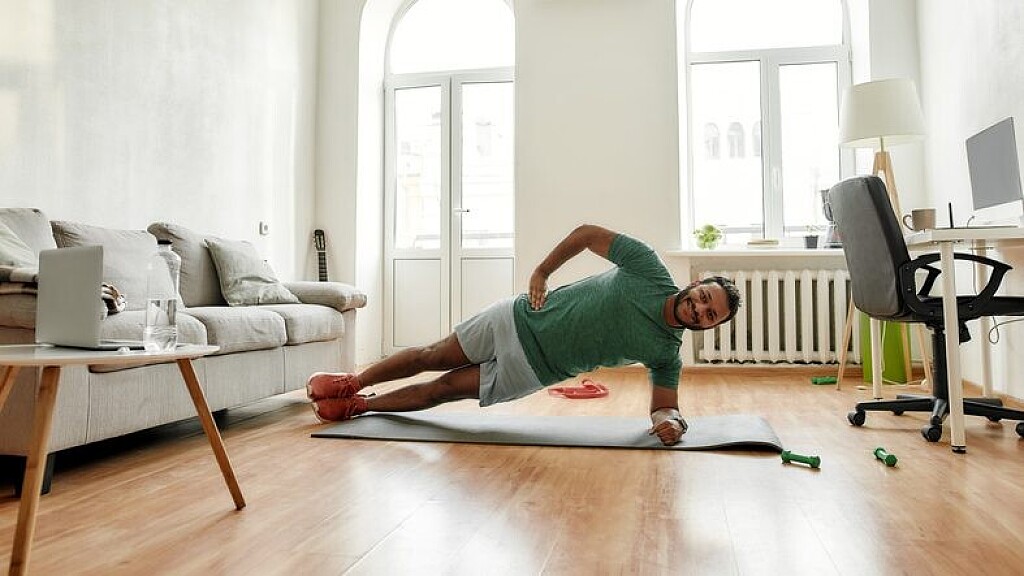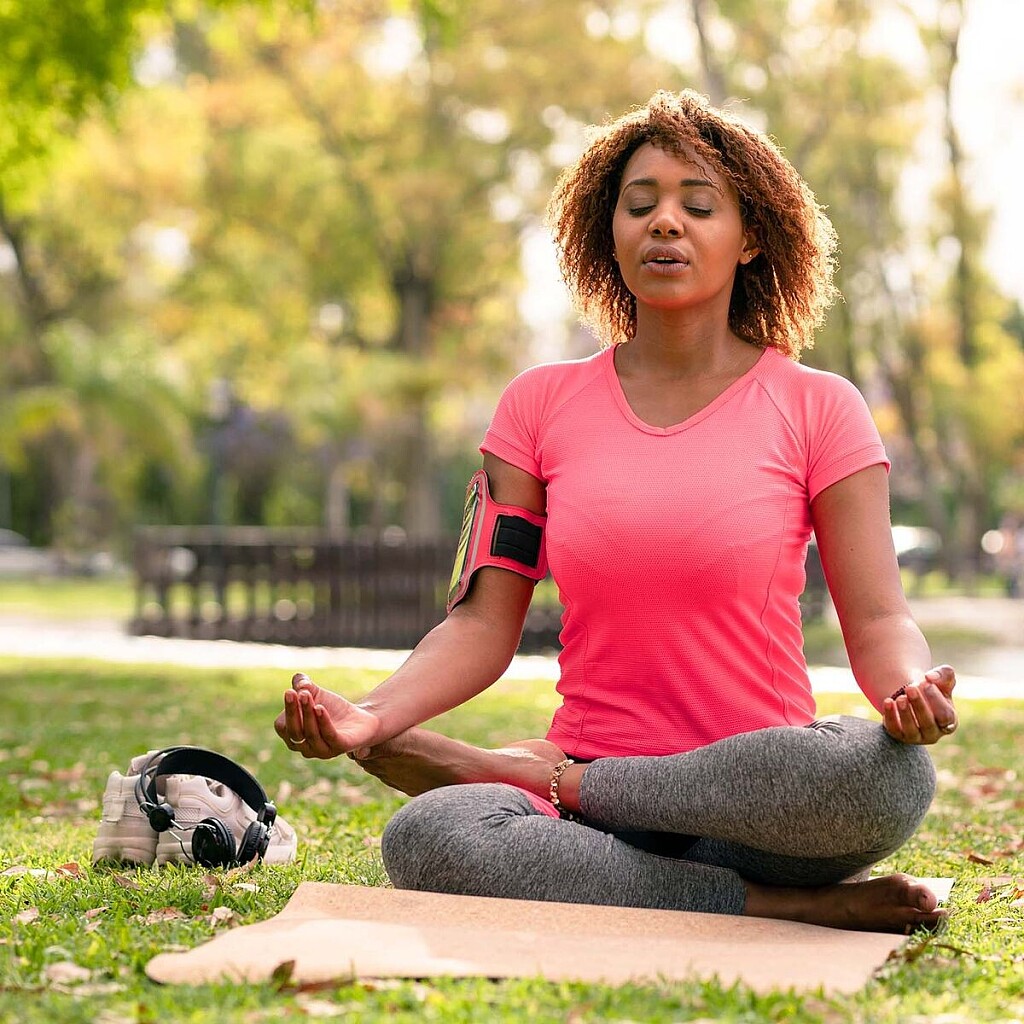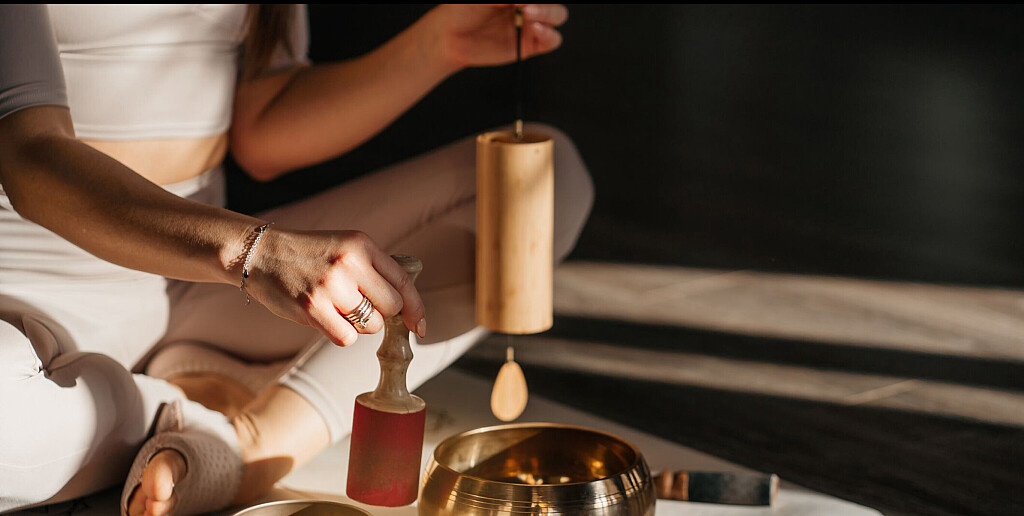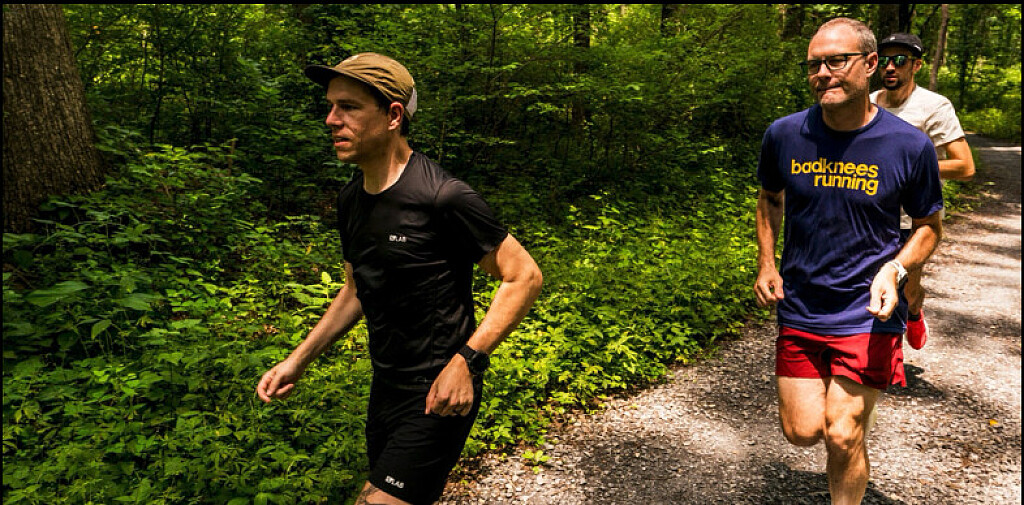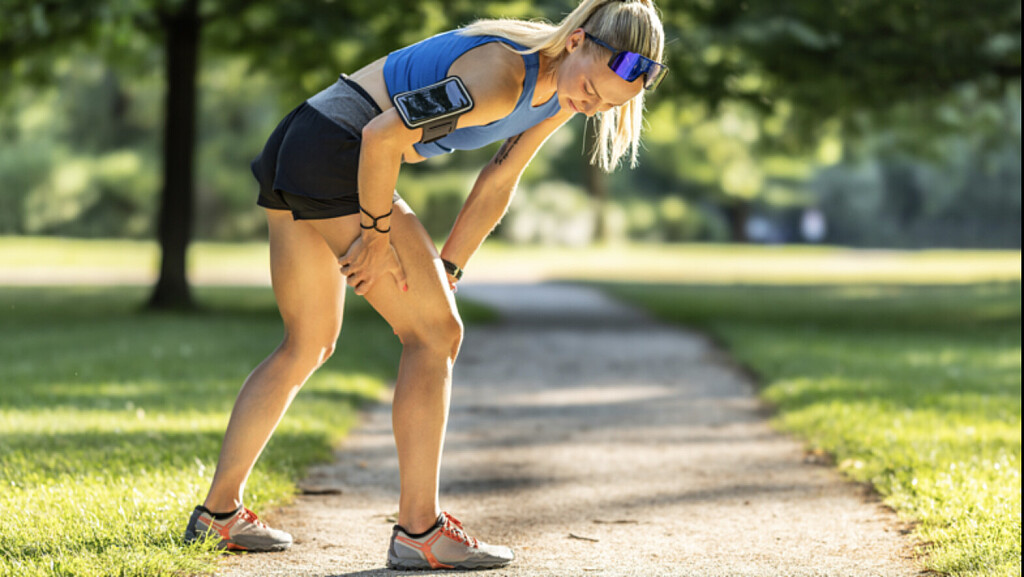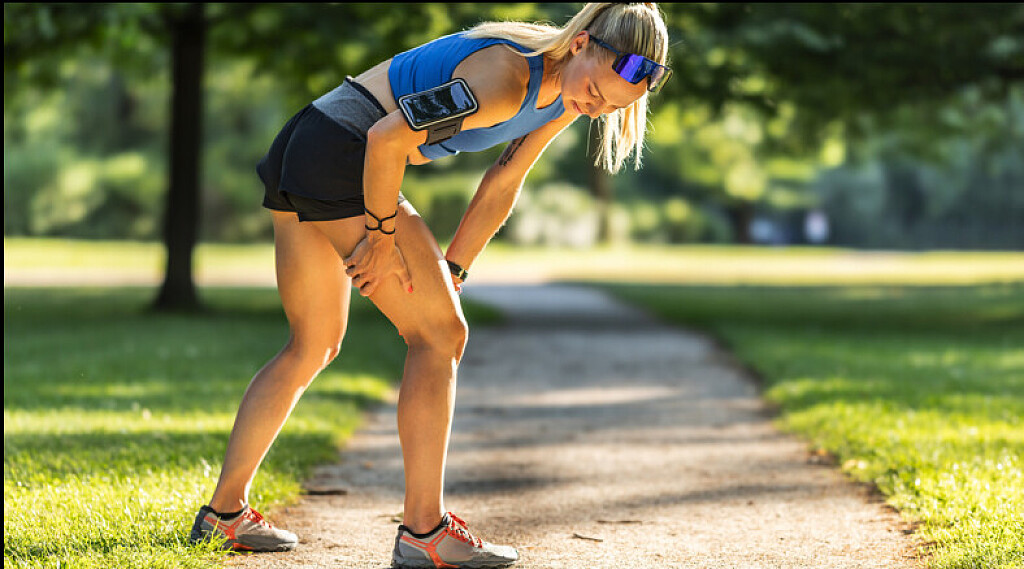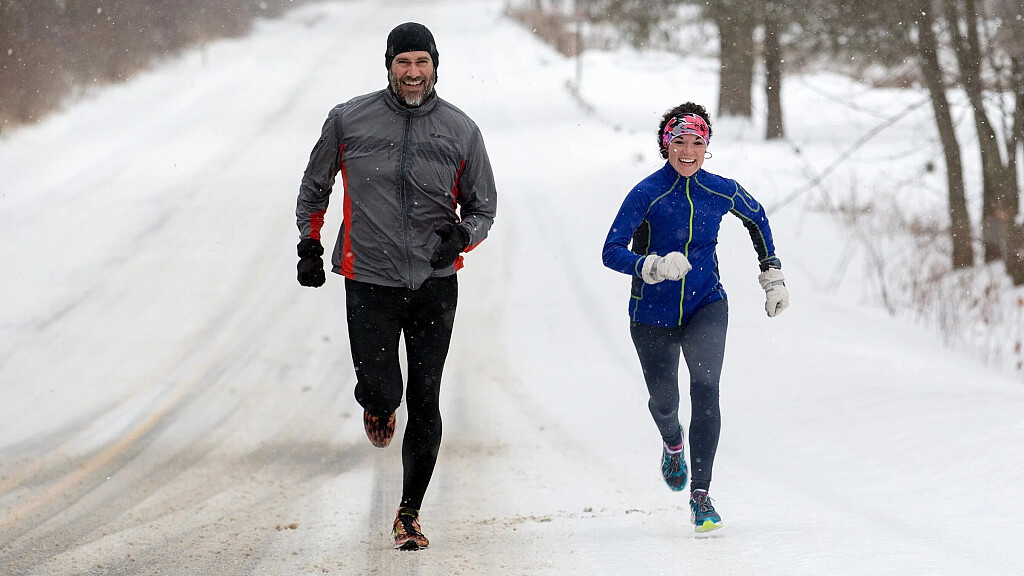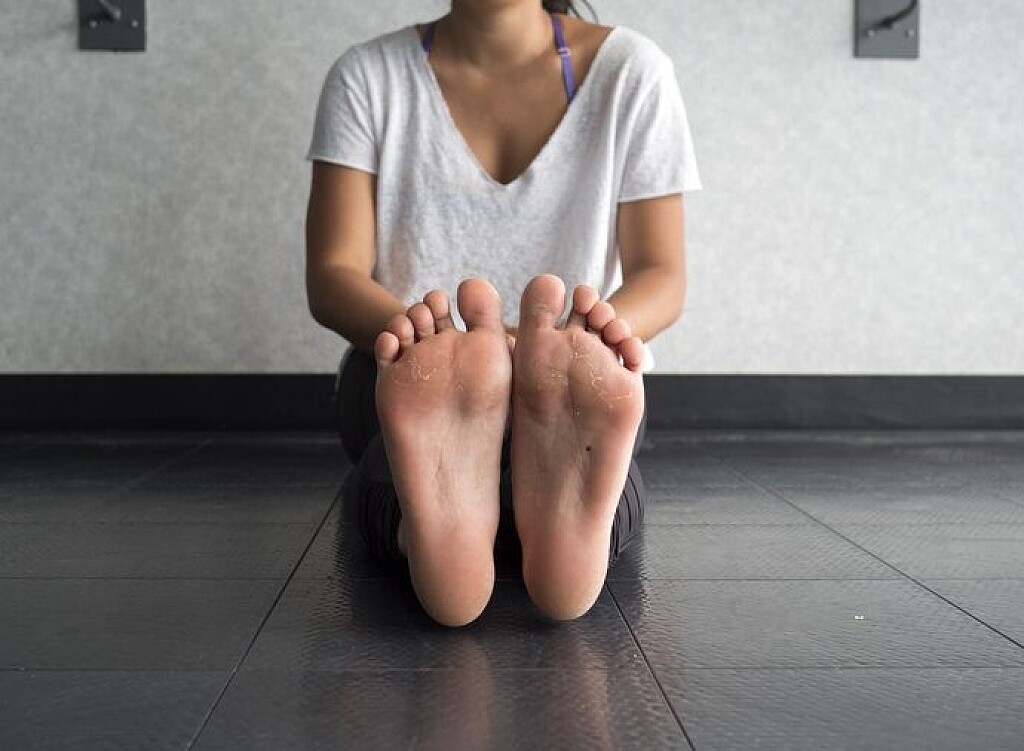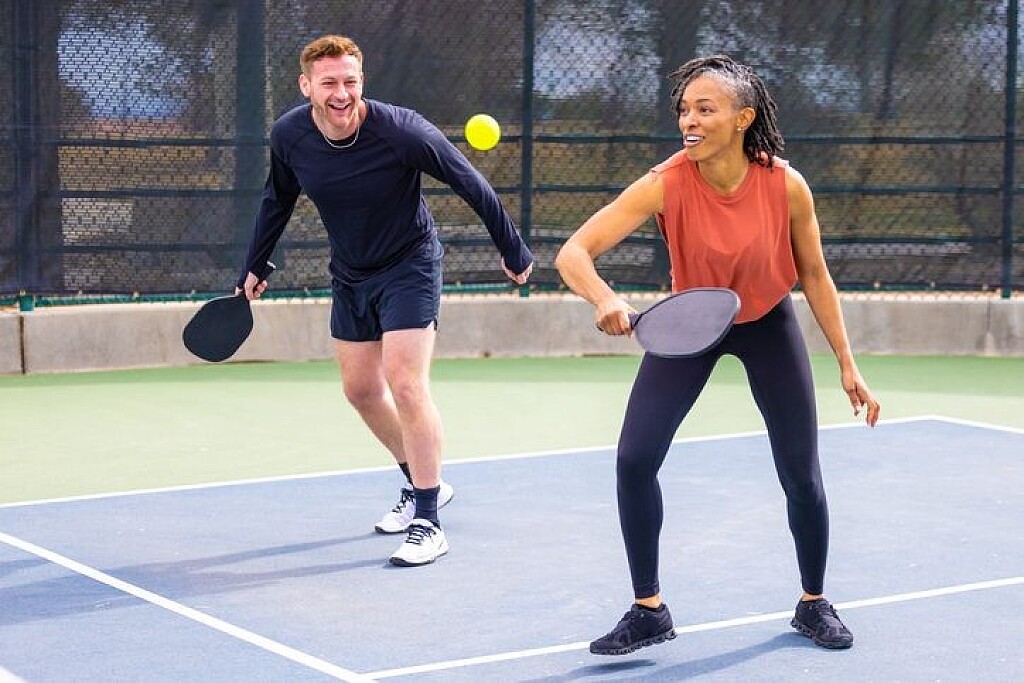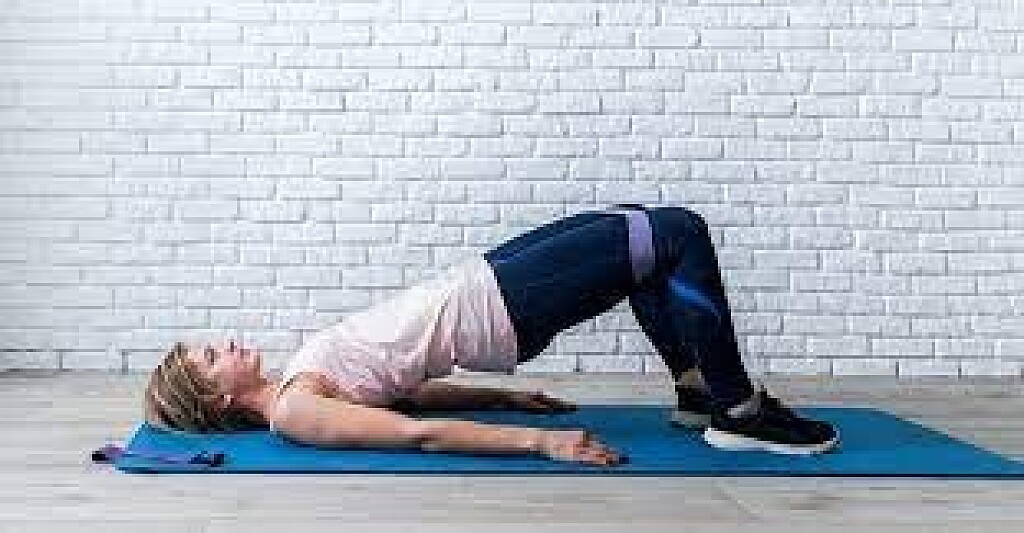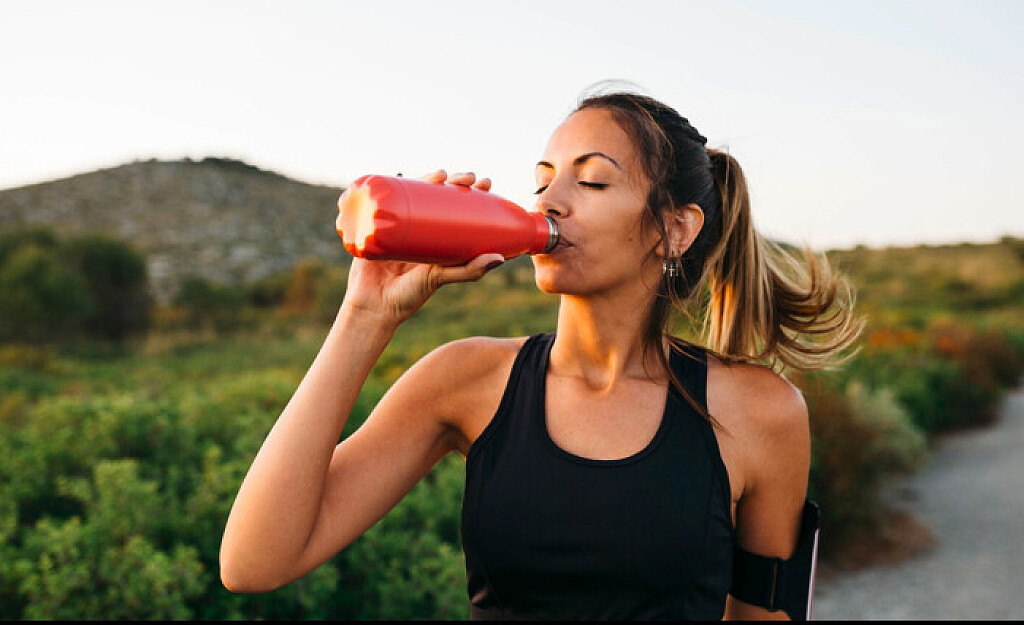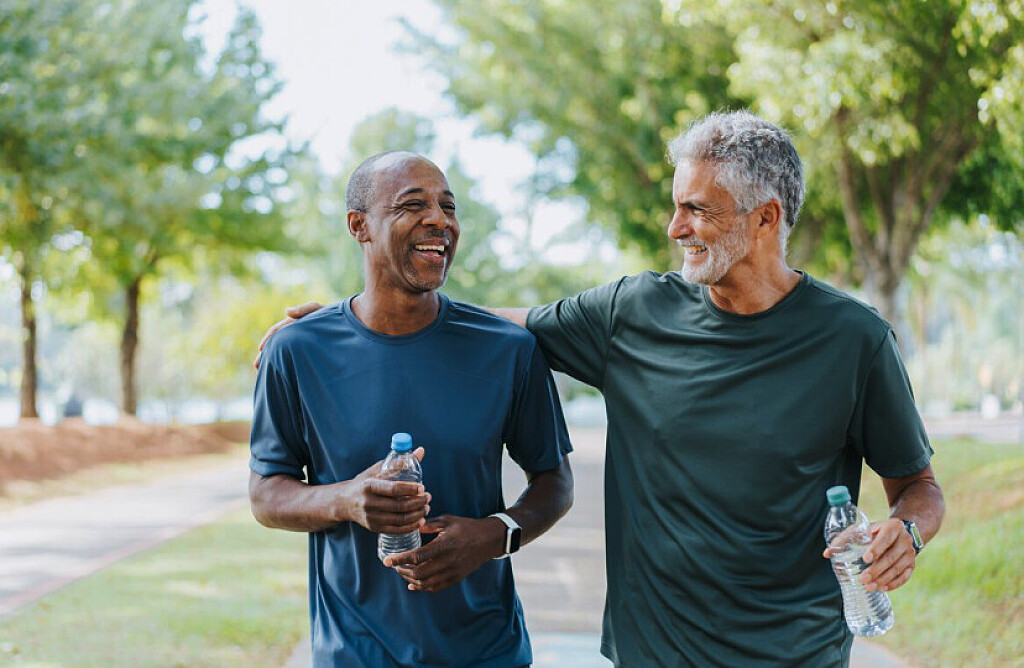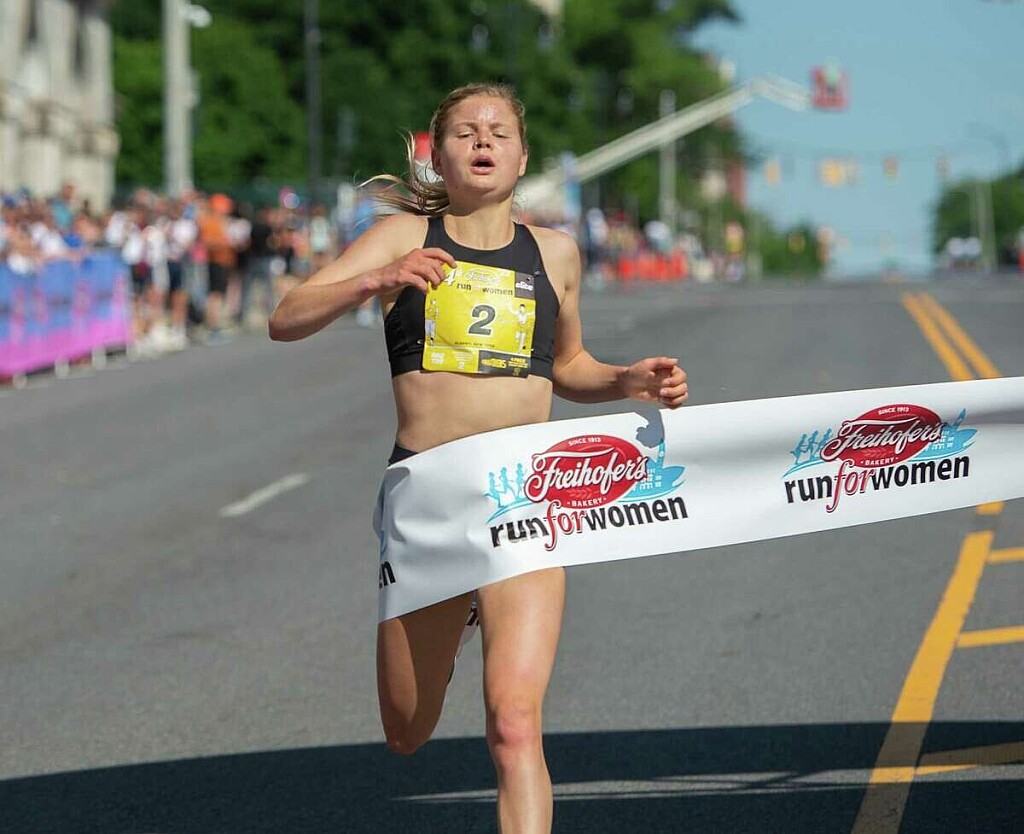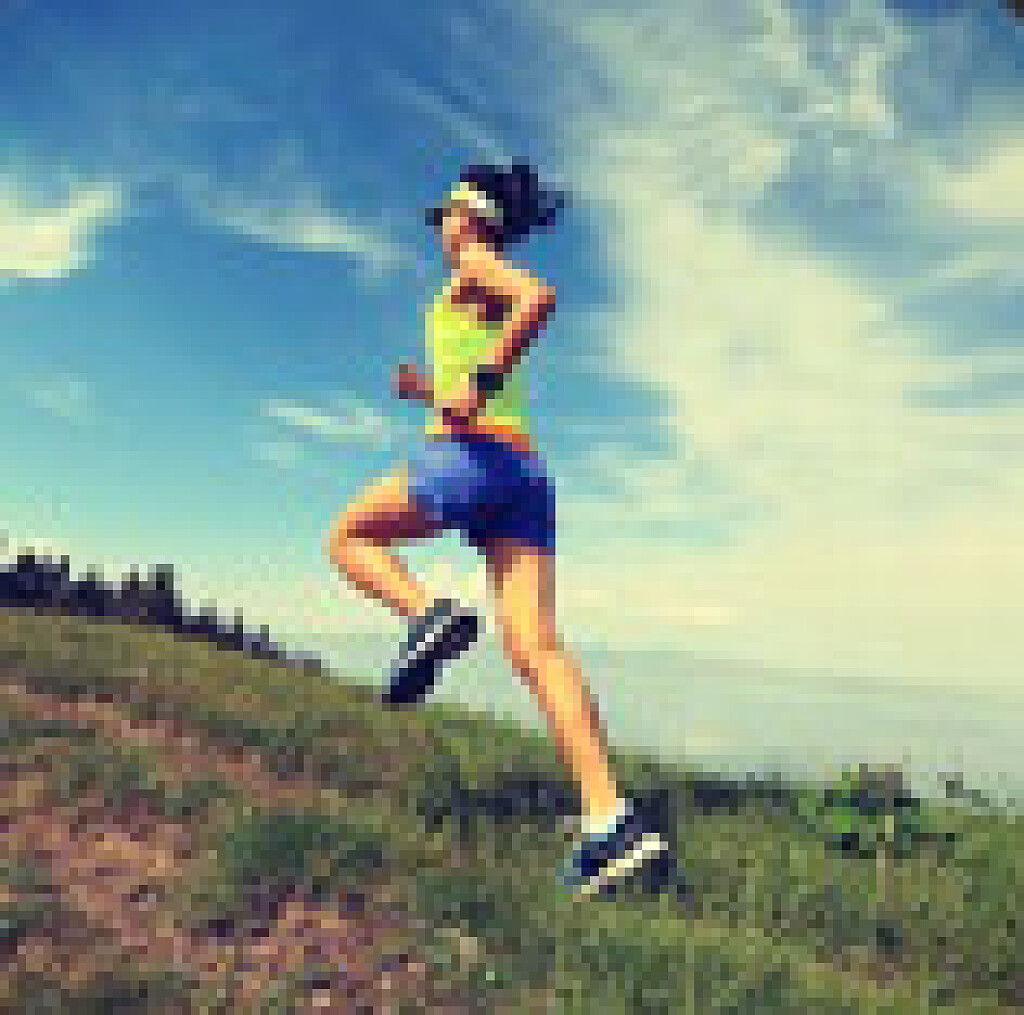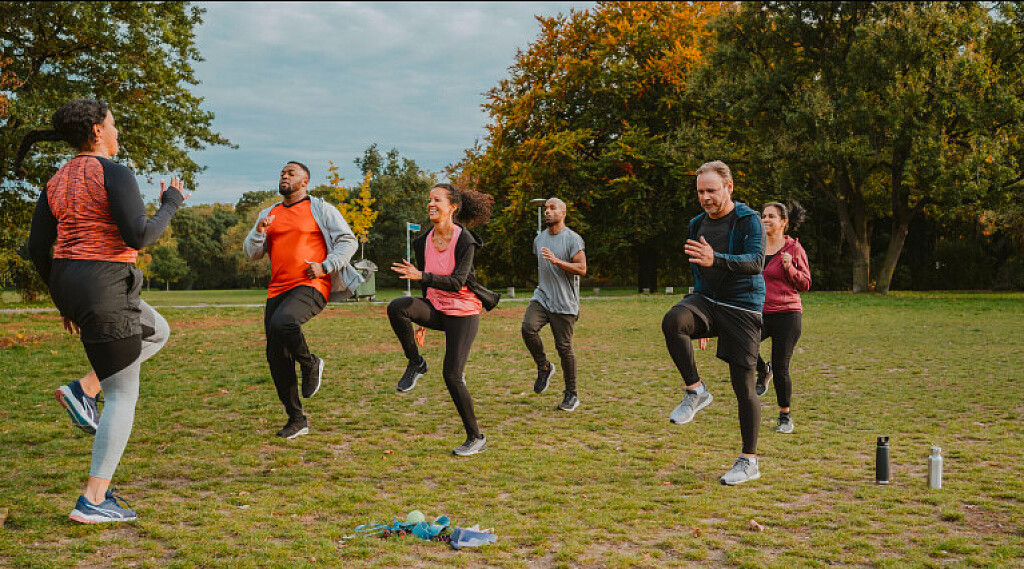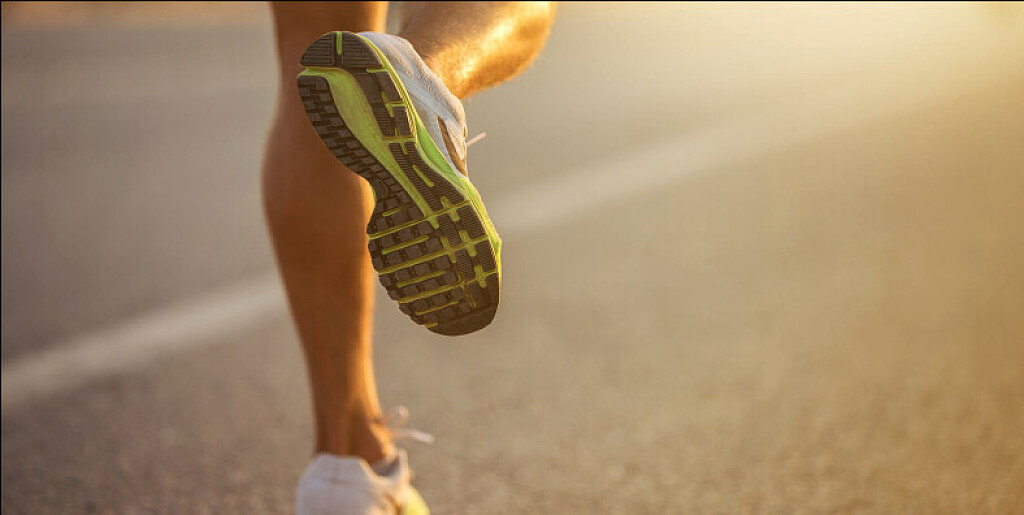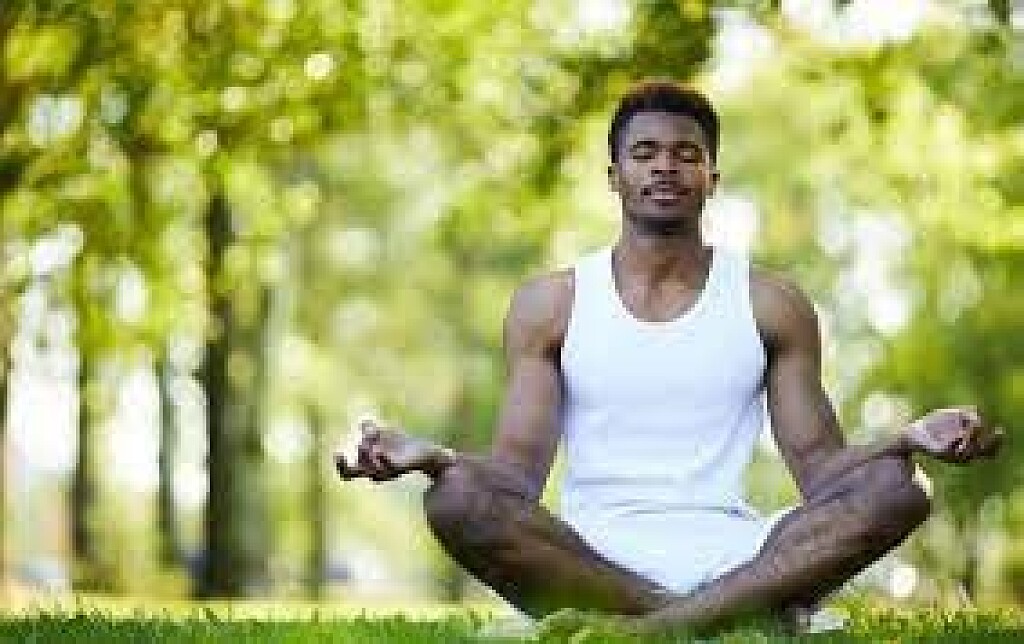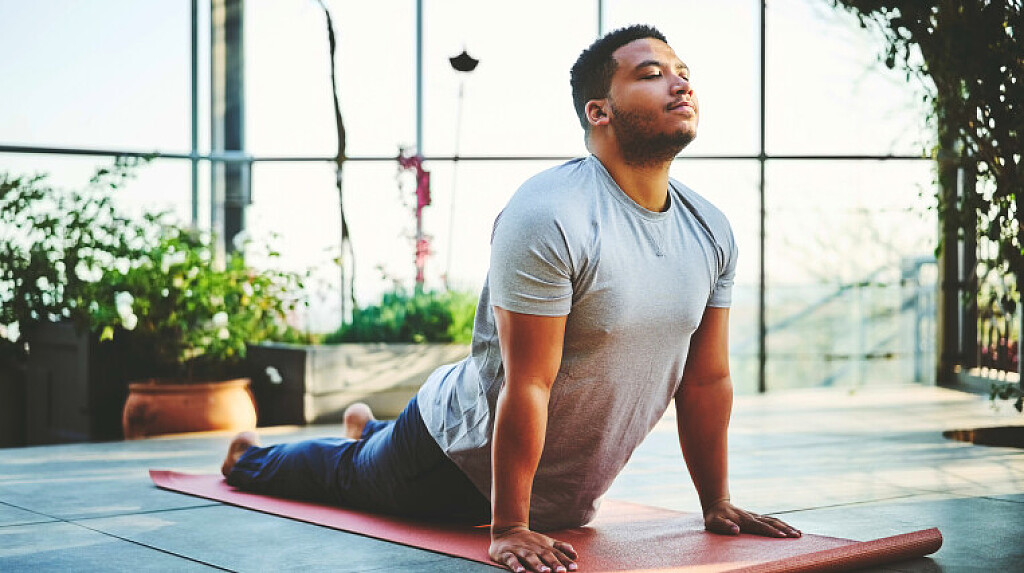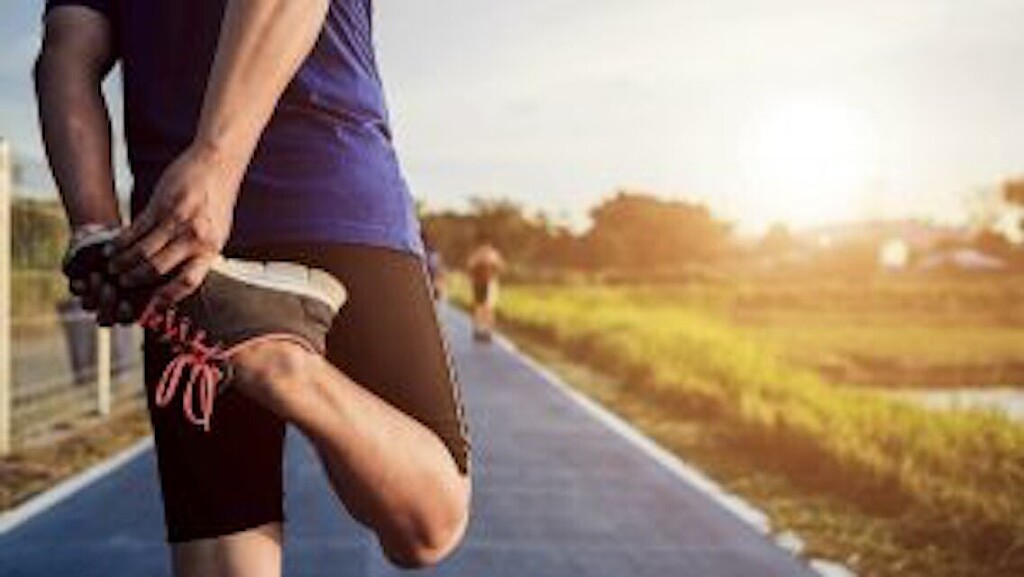Running News Daily
Running News Daily is edited by Bob Anderson. Send your news items to bob@mybestruns.com Advertising opportunities available. Train the Kenyan Way at KATA Kenya and Portugal owned and operated by Bob Anderson. Be sure to catch our movie A Long Run the movie KATA Running Camps and KATA Potato Farms - 31 now open in Kenya! https://kata.ke/
Index to Daily Posts · Sign Up For Updates · Run The World Feed
Articles tagged #Yoga
Today's Running News
The 30-Minute Window That Can Make or Break Your Running Progress
The 30-Minute Window That Can Make or Break Your Running Progress
Let’s talk about one of the most underrated habits that separates elite runners from the constantly injured: post-run recovery.
Most runners treat the workout as the main event—then just move on with their day. No cooldown, no mobility, no refueling. But what you do in the 30 minutes after your run is just as important as the miles you log.
When you finish a run, your body is in a high-alert state. Muscles are inflamed. Cortisol is elevated. Glycogen is depleted. This is your golden window—a chance to help your body adapt and bounce back stronger… or ignore it and slowly break down.
Here’s a recovery sequence that works:
1. Cool Down Properly
Don’t stop cold. Jog or walk for 5–10 minutes to gradually bring your heart rate down. It’s a small habit that significantly reduces next-day soreness and stiffness.
2. Rehydrate
Even if you didn’t feel hot, you lost fluid. Drink water—and if your run was longer than an hour or particularly sweaty, add electrolytes.
3. Refuel with Purpose
Within 30 minutes, have a mix of carbohydrates and protein. This replenishes glycogen stores and kick-starts muscle repair. A smoothie, banana with peanut butter, or a recovery shake are great options.
4. Mobility Work
You don’t need a 60-minute yoga class. Just 5–10 minutes of stretching or foam rolling helps your nervous system shift into recovery mode and reduces tightness.
Skipping recovery means accumulating stress and increasing injury risk. But prioritizing it helps you absorb training, recover faster, and stay in the game longer.
Running doesn’t end when your watch stops. That’s when real progress begins.
by Boris Baron
Login to leave a comment
The Science of Recovery Runs: Boost Performance with Strategic Downtime
Recovery runs are a crucial part of any serious runner's training plan, yet they're often misunderstood or overlooked. A well-executed recovery run can help your body repair and adapt to the demands of running, ultimately making you a stronger and more resilient athlete.
The Benefits of Recovery Runs
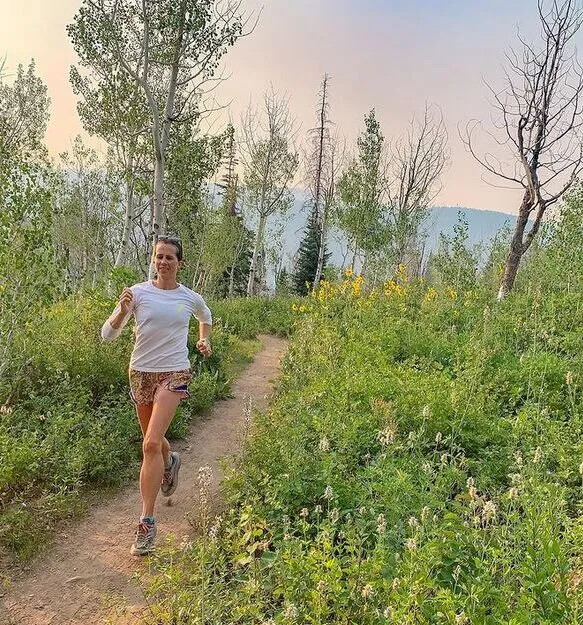
Recovery runs offer several benefits that can enhance your running performance:
Reduced muscle soreness: Gentle exercise promotes blood flow to fatigued muscles, reducing stiffness and soreness.
Enhanced lactate removal: Easy running helps clear lactate and other metabolic waste products from your muscles.
Improved circulation: Running promotes blood flow, aiding in the delivery of oxygen and nutrients to damaged tissues.
Mental rejuvenation: A short, easy run can clear your mind and reduce stress.
How to Execute a Recovery Run
To get the most out of your recovery runs, follow these guidelines:
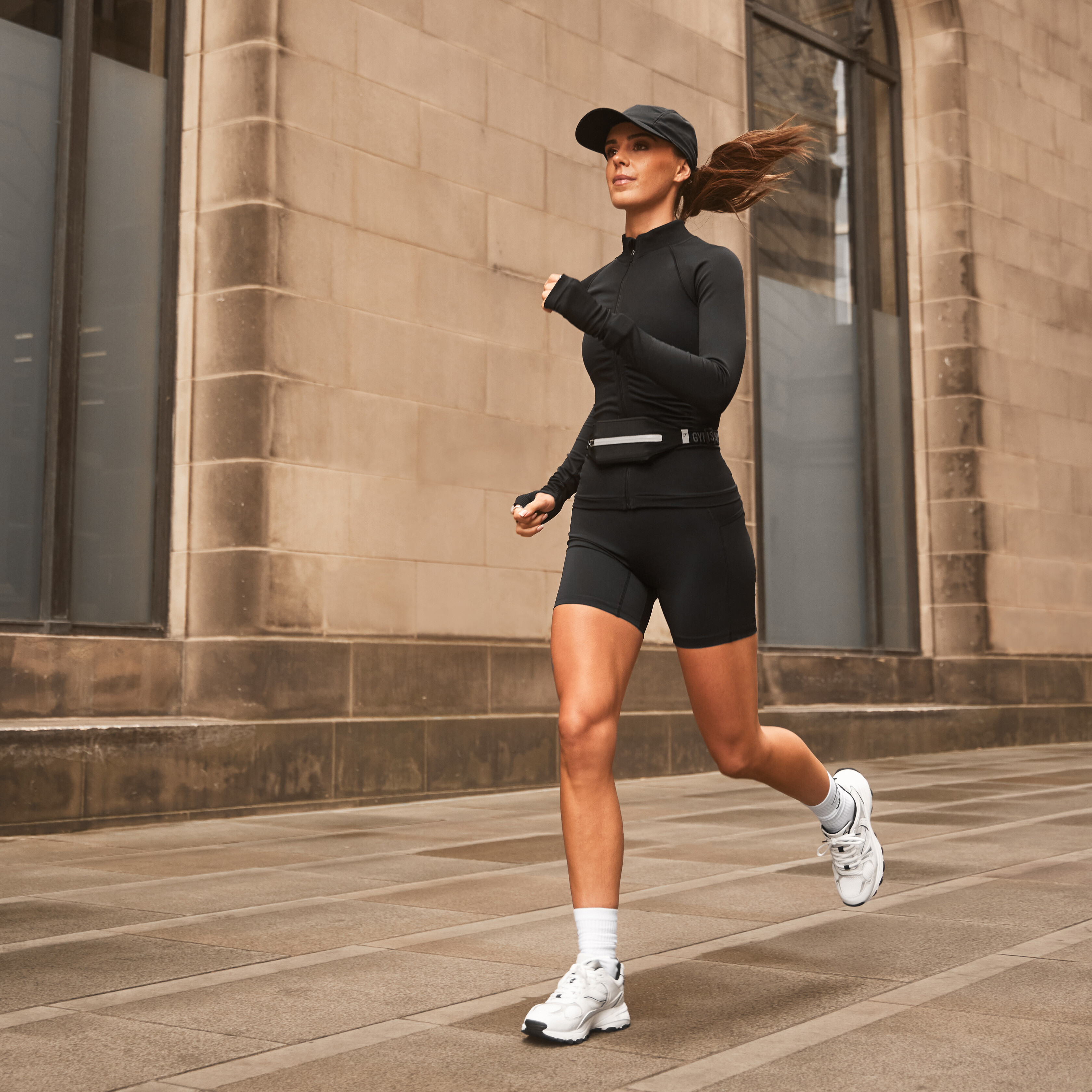
Keep it short: Aim for 20-30 minutes or 2-3 miles.
Keep it easy: Run at a conversational pace, about 30-60 seconds slower than your usual easy run pace.
Listen to your body: If you're feeling extremely fatigued or sore, consider an active recovery day (e.g., walking or yoga) instead.
Strategic Incorporation
Incorporate recovery runs into your training plan strategically:
After hard runs or races: Use a recovery run to help your body recover from intense efforts.
During periods of high mileage: Incorporate recovery runs to manage fatigue and prevent injury.
As a mental break: Use a recovery run to clear your mind and enjoy your surroundings.
Tips for Effective Recovery Runs
Mix up your route: Change your scenery to keep things interesting.
Incorporate gentle striding: Add short, gentle strides to loosen up your legs.
Run with a buddy: Invite a friend or join a running group to make the experience more enjoyable.
By incorporating recovery runs into your training plan, you can improve your overall performance, reduce your risk of injury, and enjoy the many physical and mental benefits of running.
by Sally Decker
Login to leave a comment
CAN YOU RUN A MARATHON WITHOUT TRAINING?
Despite what you might see on social media, we definitely do not recommend attempting a marathon without proper training.
Running 26.2 miles is a tremendous physical challenge, and attempting it unprepared not only risks injury but also makes the experience extremely difficult. Respect the distance and put in the necessary preparation.

TOP TIPS FOR MARATHON TRAINING
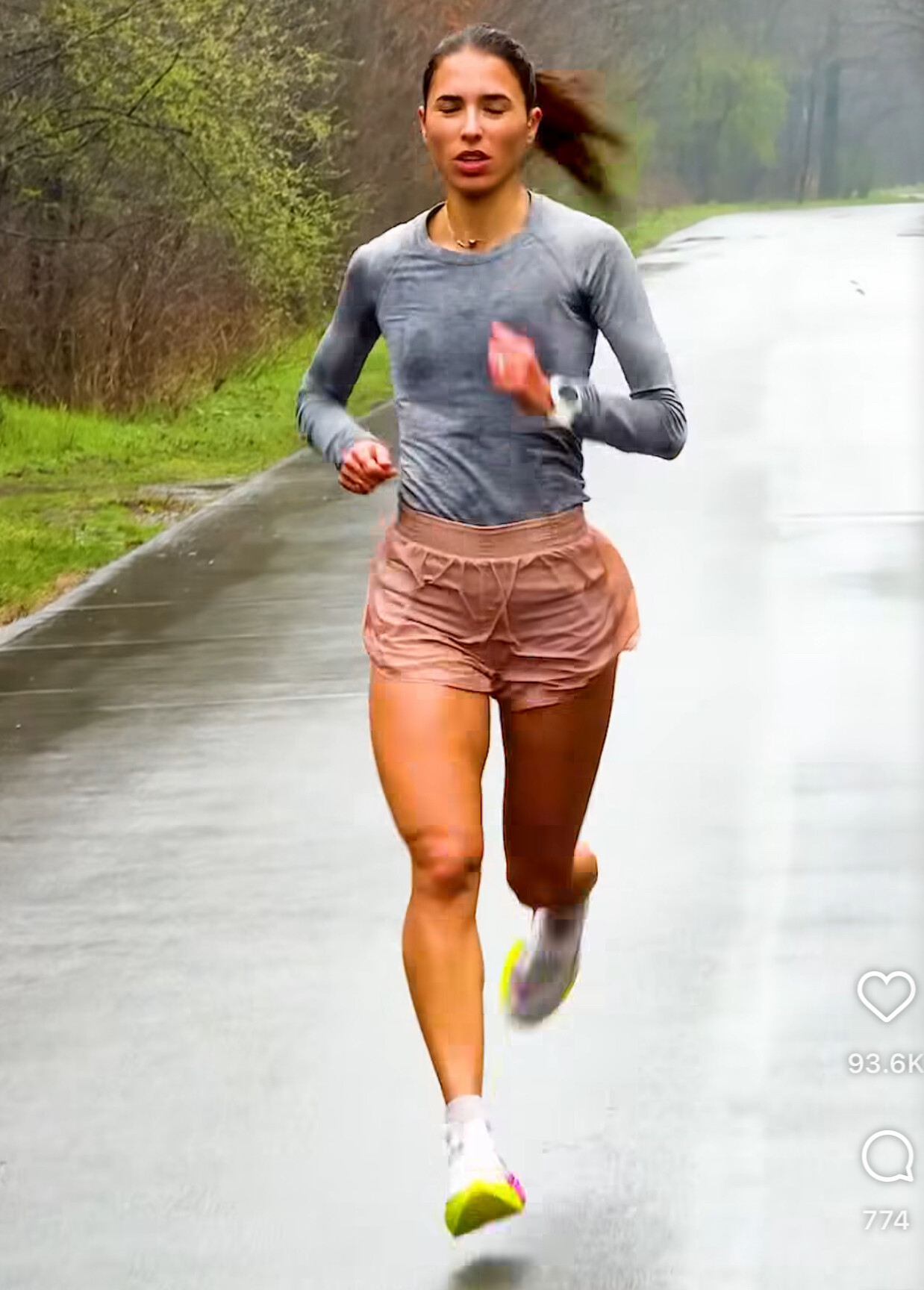
• Start Early: Begin your training as early as possible—ideally six months before race day. Don’t think of it as “marathon training” from day one. Break it into smaller training blocks. Building a strong base before starting a structured plan will help develop your fitness and strength, setting you up for success.
• Follow a Structured Plan: Use an app like Runna or work with a coach to create a training plan tailored to your goals. Structured plans provide consistency and can be adjusted if you encounter setbacks along the way.
• Consistency Is Key: Aim to run at least three times a week. Consistency is the foundation of marathon training. However, listen to your body—take extra rest days if you’re dealing with soreness or minor issues.
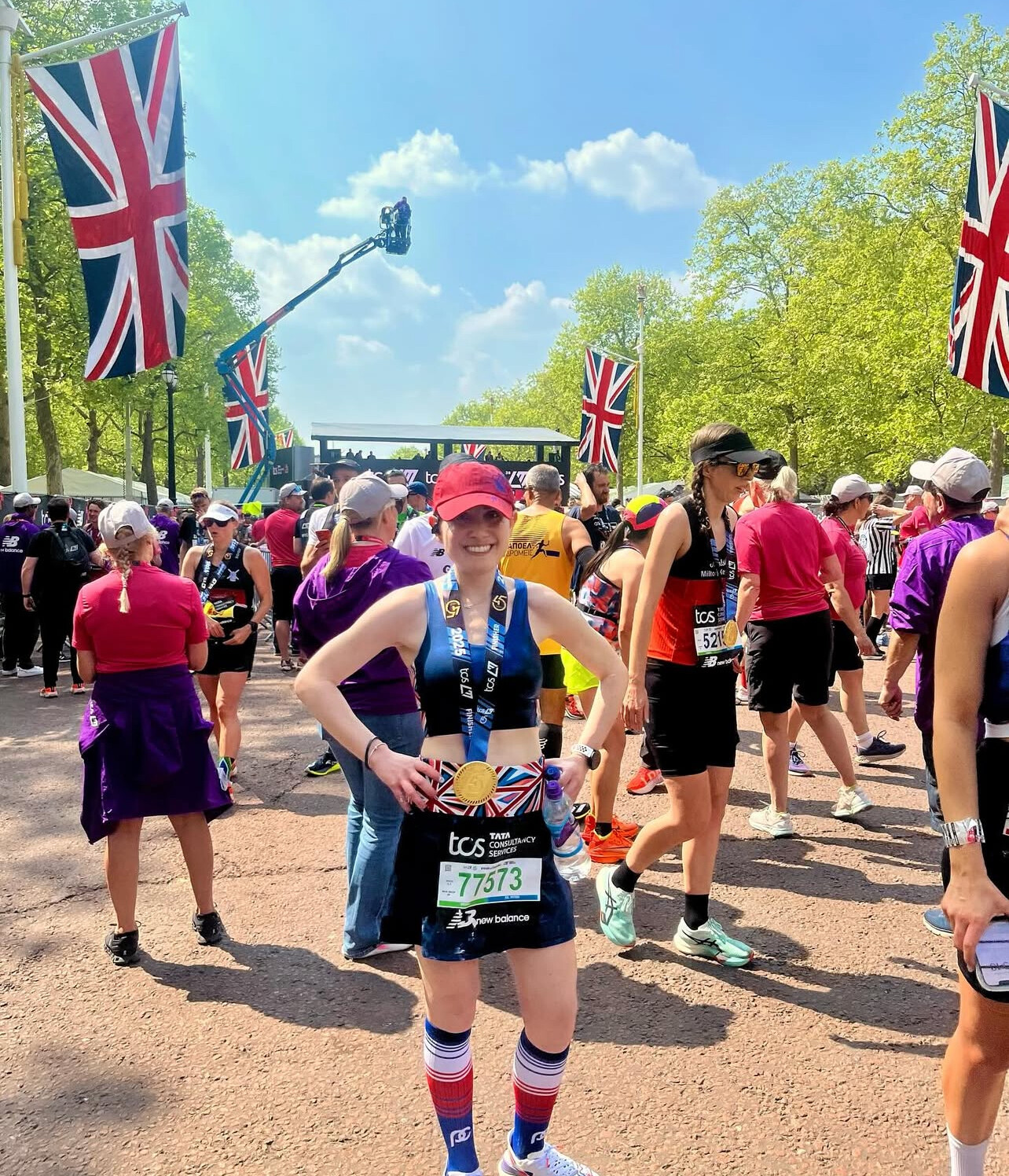
• Fuel and Hydrate Properly: Learn how to fuel and hydrate effectively before, during, and after runs. Focus on simple carbohydrates before a run and a mix of carbohydrates and protein afterward to aid recovery and replenish energy stores.
• Incorporate Cross-Training and Strength Work: Complement your running with cross-training activities like swimming, cycling, or elliptical sessions. Include one or two strength training sessions per week with exercises like squats, deadlifts, lunges, and core work.
• Prioritize Recovery: Recovery is as important as training. Use foam rolling, stretching, and yoga to aid recovery, and prioritize sleep—especially as training intensifies.
WHAT DOES A MARATHON TRAINING PLAN LOOK LIKE?
Our 16-week marathon training plan (available on our website) features four runs per week, carefully structured to help you build endurance and confidence. Here’s a look at what it entails:
Week 1:
• A 30-minute easy run
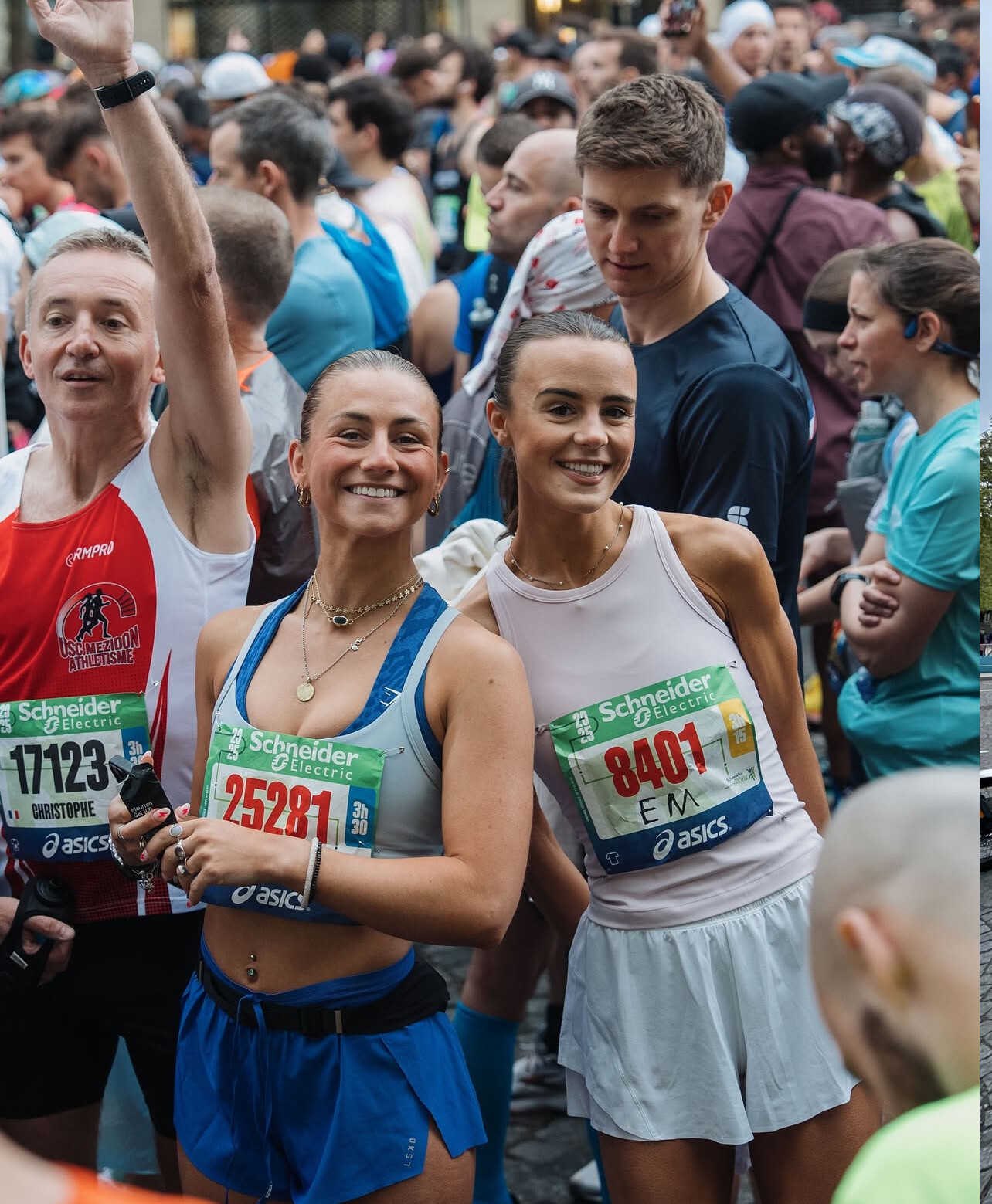
• A 5-mile (8 km) easy/steady run with strides
• An interval workout of 2 sets of 5 x 1-minute intervals
• A 60-minute long run
This structure is typical of most marathon training plans. If this feels too challenging, focus on gradually building up your mileage and consistency before starting the full plan.
As training progresses, long runs will increase in distance, and workouts will introduce marathon-specific pace work to prepare you for race day.
Peak Week:
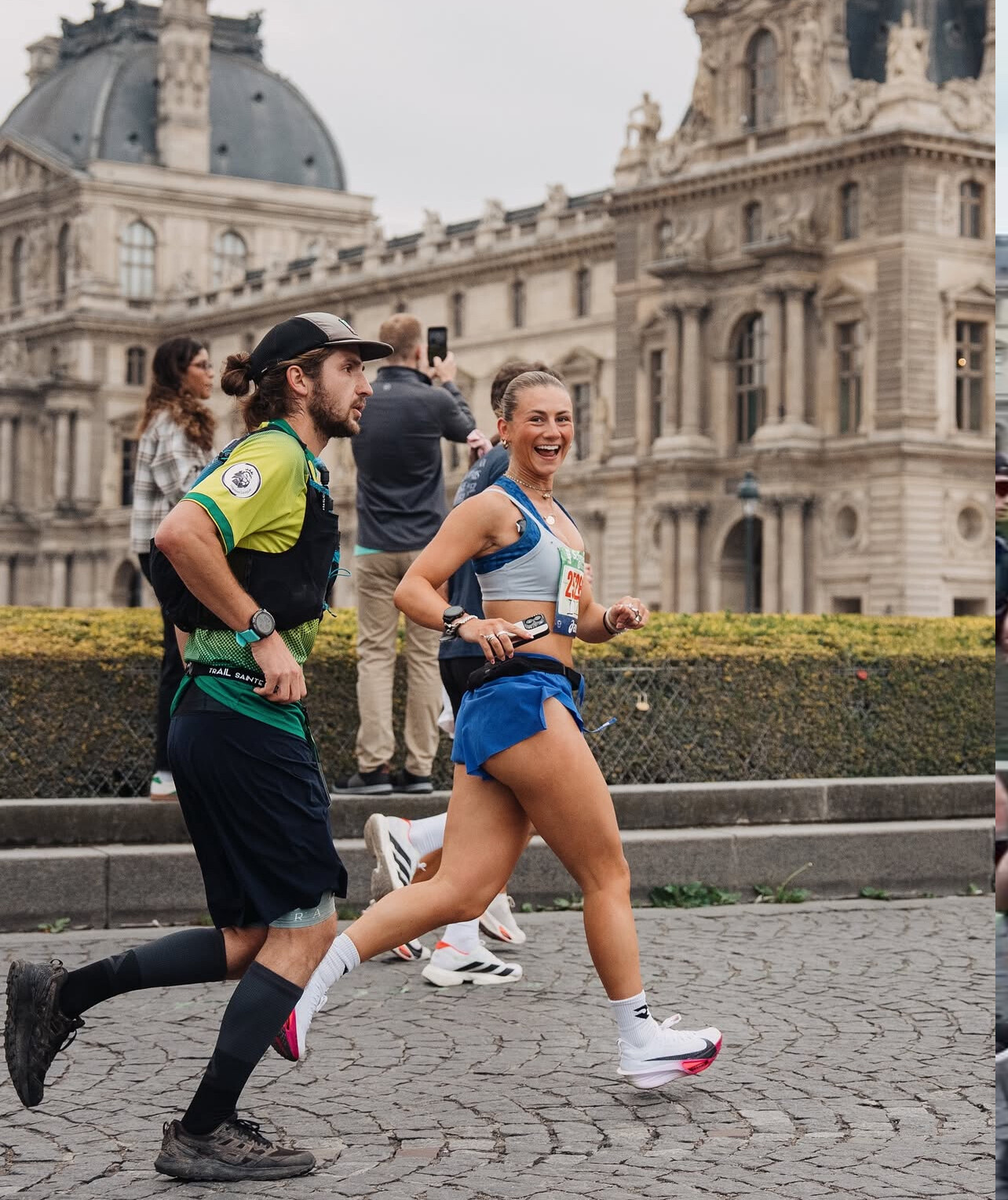
• A 30-minute easy run
• A 6-mile (10 km) easy/steady run with strides
• An interval workout of 2 sets of 10 x 1-minute intervals
• An 18.6-mile (30 km) long run
With the right plan, dedication, and consistency, you’ll be well-prepared to conquer 26.2 miles.
by Mark Dredge
Login to leave a comment
Why the 5K Experience Race Is Booming in 2025
After a period of decline, 5K races are back in a big way—but this time, they’re different. These aren’t just traditional time trials. In 2025, the 5K has evolved into a full-scale experience that blends fitness, community, and entertainment.
“We’ve reimagined what the 5K can be,” says race director Kevin Morris. “It’s about connection, movement, and fun. We’re seeing record interest again.”
Several trends are fueling the resurgence:
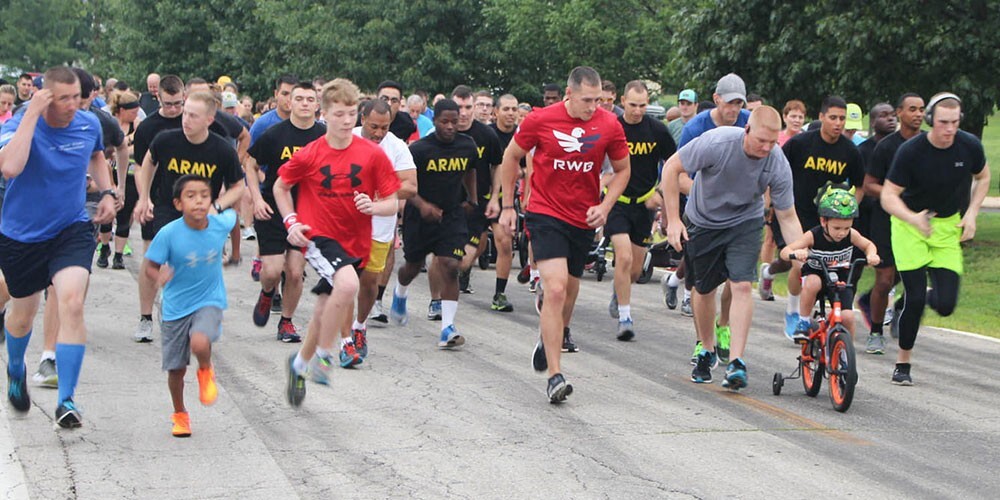
Enhanced race-day technology has transformed the participant experience. Many events now offer synced music playlists, GPS-guided pacing, live race tracking, and even augmented reality checkpoints that bring the course to life.
The format has also shifted to prioritize experience over performance. Post-race yoga, recovery lounges, artisanal food trucks, and wellness booths are becoming the norm. These events are about more than finish times—they’re about how you feel crossing the line.
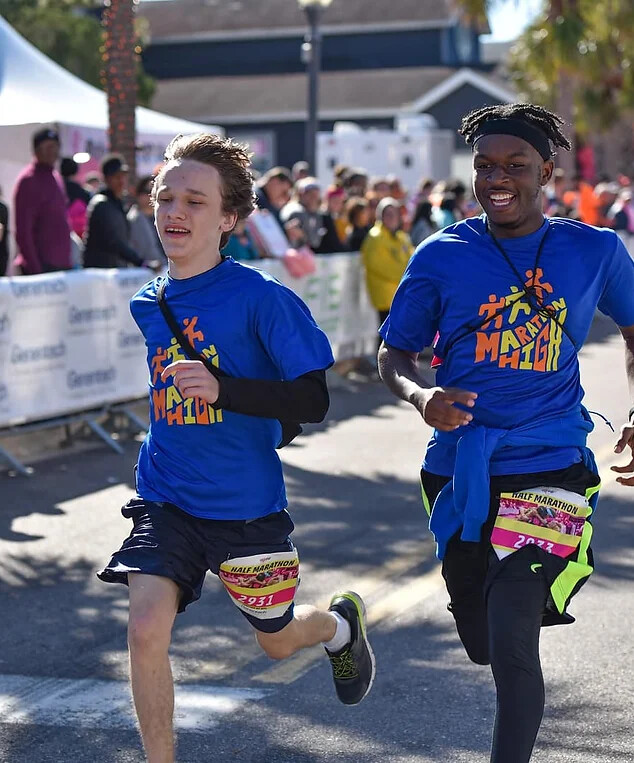
Corporate and charity involvement is at an all-time high. From supporting youth education to funding mental health programs, these races are drawing in new audiences while making a difference. Brands and non-profits alike see them as powerful platforms for impact and engagement.
Most importantly, people are showing up because they crave real-world connection. After years of virtual alternatives, there’s renewed appreciation for shared movement and in-person celebration.
And while these events often carry an entry fee—unlike traditional community fun runs—they remain inclusive. Walkers, joggers, and competitive runners all line up together, united by a common goal: to enjoy the journey.
The 5K in 2025 is no longer just a race. It’s a movement—one that’s reminding us why we fell in love with running in the first place.
by Boris Baron
Login to leave a comment
Running on Vacation - The Rise of Destination Races and Wellness Travel
Runners are no longer just chasing personal bests—they’re chasing passport stamps, too. Around the world, thousands of runners are combining their love of travel with their passion for racing, fueling a surge in destination races and wellness-focused running getaways.
From the historic cobblestone streets of Rome to the snowcapped trails of Patagonia, destination races have become bucket-list experiences. These events are about more than just performance—they offer culture, adventure, and a chance to see the world on foot.
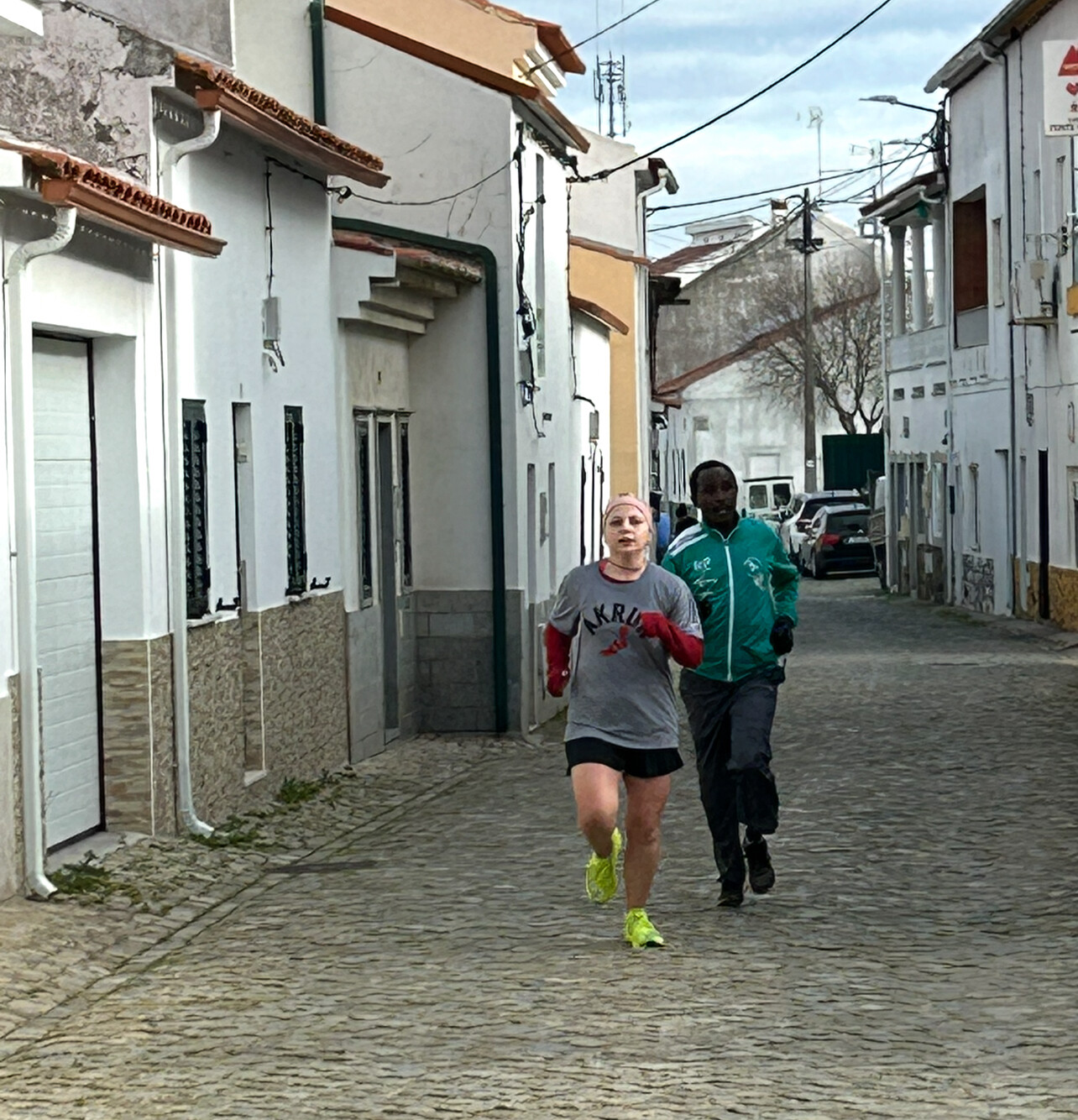
A Growing Global Trend

Race-cations are booming. Major marathons like Tokyo, Berlin, and Paris draw runners from dozens of countries each year, not only for the challenge but also for the immersive experience of racing through iconic cities. At the same time, trail and ultramarathons in remote locations—like the Patagonia International Marathon or the Jungfrau Marathon in Switzerland—offer a unique mix of endurance and awe-inspiring landscapes.
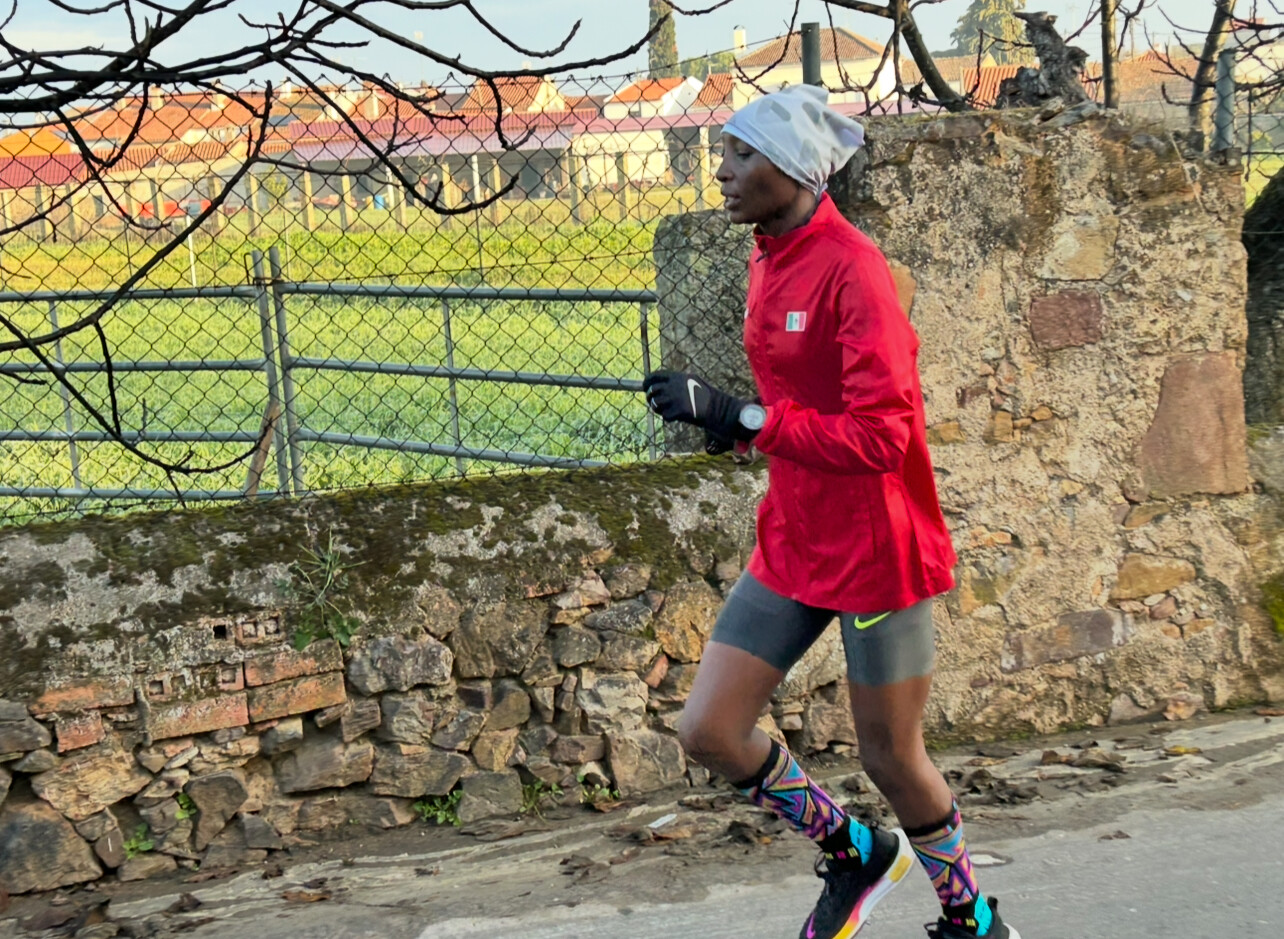
According to organizers, many participants plan these trips a year in advance, bringing along family and turning the event into a full vacation. Hotels, restaurants, and local tourism boards have taken note, often offering special packages around race weekends.

KATA Portugal and KATA Kenya: Tuning Up Abroad
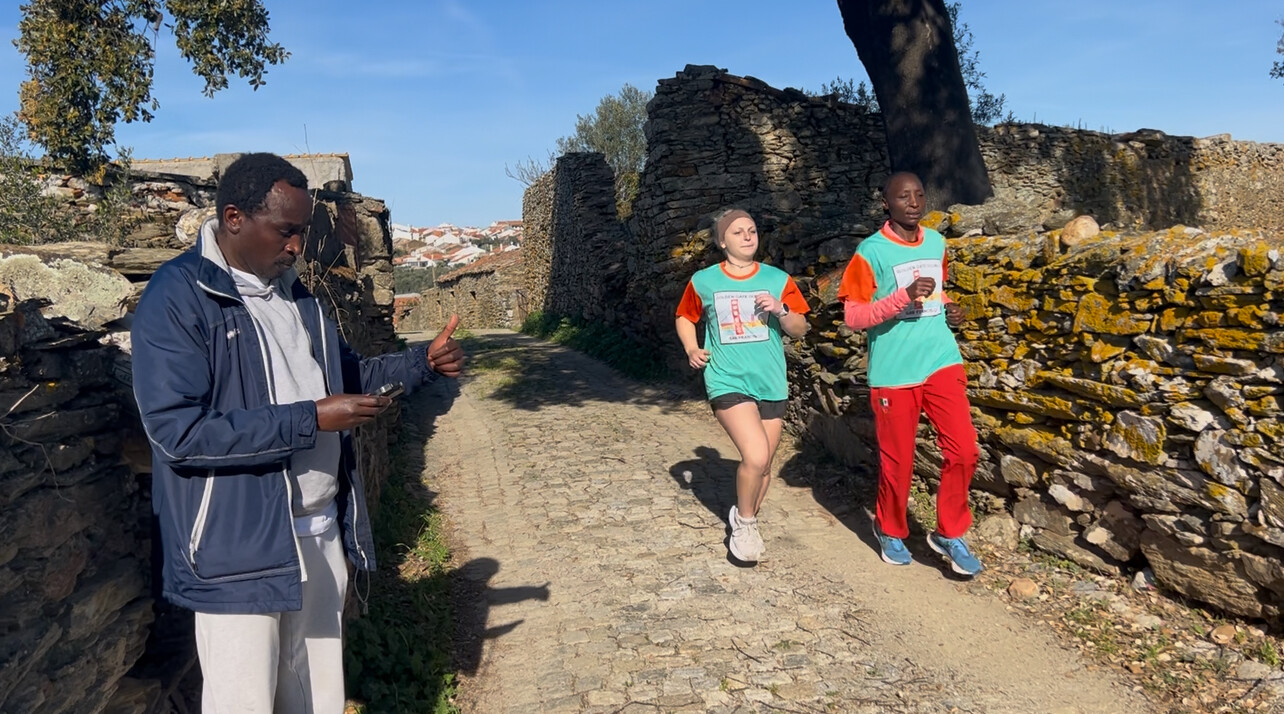
A growing number of runners are also adding a tune-up week to their itinerary—fine-tuning their fitness at dedicated training retreats before race day. Two of the most exciting options are KATA Portugal and KATA Kenya, both part of the Kenyan Athletics Training Academy network founded by running pioneer Bob Anderson.

KATA Portugal (photos 2-7), located in the scenic village of Monforte da Beira, offers personalized coaching, peaceful trails, home-cooked meals, and even massage and yoga—ideal before races like the Lisbon Marathon. Meanwhile, KATA Kenya (photo 8), based in the high-altitude town of Thika, provides a once-in-a-lifetime chance to train with world-class Kenyan athletes ahead of the Nairobi Marathon or other African events. Whether you’re a sub-3 marathoner or chasing your first finish, spending a week immersed in focused training can elevate the entire race-cation experience.
More Than a Medal
Wellness travel has also influenced the trend. Many destination races are now paired with yoga retreats, spa treatments, and recovery days in scenic locations. Runners can find themselves soaking in Icelandic hot springs after a half marathon or tasting wine in the Douro Valley after a 10K.
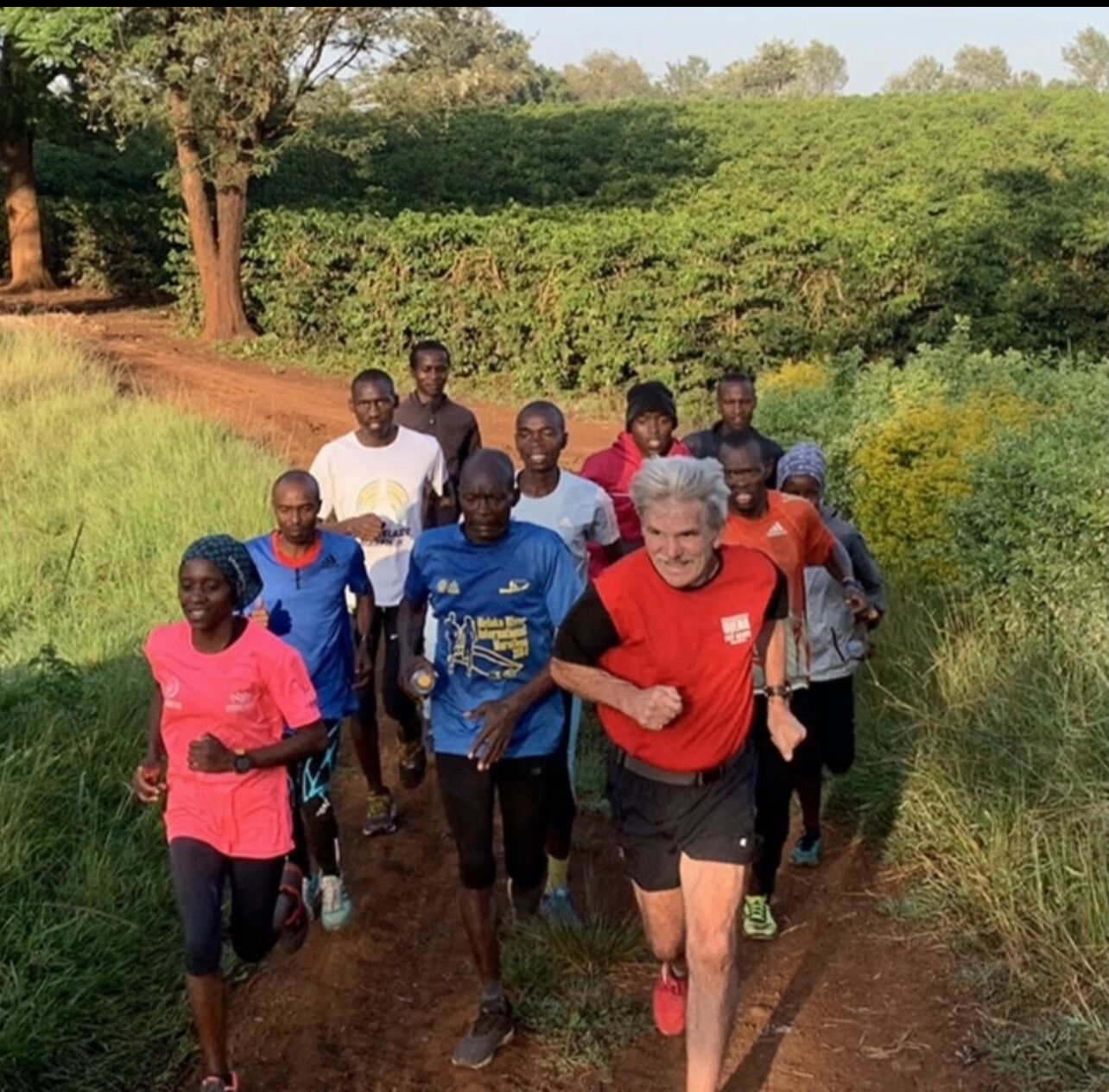
And the camaraderie is real. “There’s something unforgettable about running through a city or countryside you’ve never seen before with people who came from every corner of the globe,” says Sarah Kim, a five-time international marathoner. “You share the course, the culture, and the challenge.”
Tips for Planning a Race-Cation
• Pick Your Race Wisely: Choose an event that fits your fitness level and time zone adjustment. Be mindful of climate and elevation, too.
• Plan Around the Race: Arrive a few days early to acclimate, but schedule your sightseeing after the race. You’ll appreciate it more on rested legs.
• Pack Smart: Don’t rely on finding gear at your destination. Bring your trusted shoes, race-day fuel, and any recovery tools you use.
• Make It Memorable: Book a special meal, visit a famous landmark, or sign up for a local tour. Racing abroad is as much about the experience as it is about the finish line.
Looking Ahead
As international travel continues to rebound, destination races will likely play an even bigger role in the running world. For those who train hard year-round, what better reward than a race that ends with a view—and maybe a glass of local wine?
by Boris Baron
Login to leave a comment
Beyond the Finish Line: Navigating the Post-Race Emotional Landscape
Crossing the finish line of a race—be it a 5K, marathon, or ultra—is a moment of triumph. Yet, for many runners, the days following can bring unexpected feelings of emptiness or sadness. This phenomenon, known as the “post-race blues,” is a common experience that underscores the profound emotional journey of running.
Understanding the Post-Race Blues
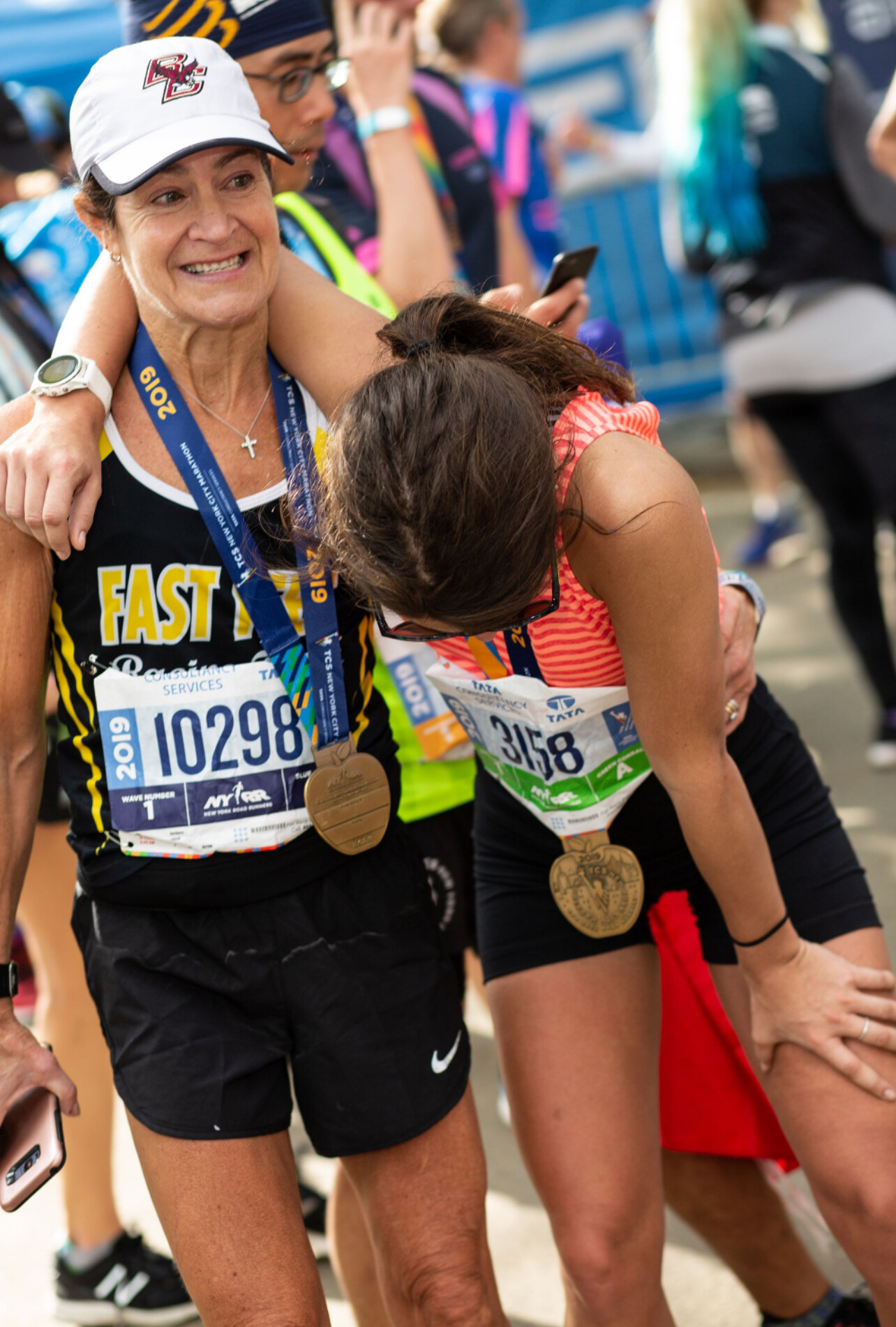
The post-race blues are not merely a figment of imagination; they have a physiological basis. During training and racing, the body releases endorphins and dopamine—chemicals associated with pleasure and reward. After the race, levels of these neurotransmitters can drop significantly, leading to feelings of lethargy or melancholy.
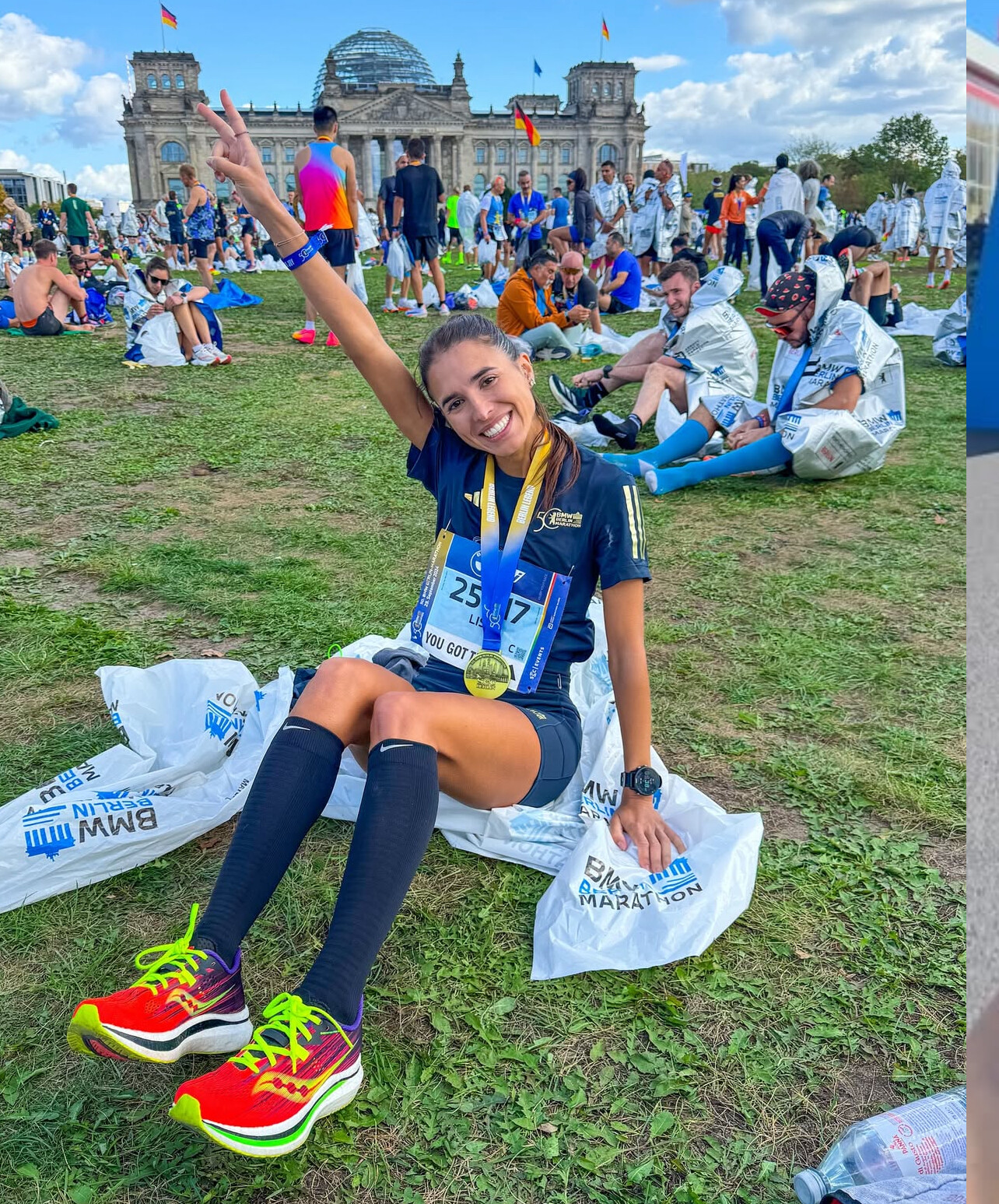
Dr. Beth McQuiston, a neurologist and medical director at Abbott, explains that finishing a race can feel like “pulling the plug on the neurotransmitter sink,” leaving runners feeling low after their body and brain are pulled out of the pattern they’ve adapted to .
Strategies to Cope and Thrive Post-Race
1. Acknowledge Your Feelings: Recognize that it’s normal to feel a mix of emotions after a race. Allow yourself to process these feelings without judgment.
2. Reflect on Your Achievement: Take time to appreciate what you’ve accomplished. Document your journey, share your experience with friends, or write a race recap.
3. Set New Goals: Establishing a new objective can provide direction and motivation. This doesn’t have to be another race; it could be improving your pace, exploring new trails, or incorporating cross-training.
4. Reconnect with Other Interests: Use this time to engage in hobbies or activities that may have taken a backseat during training.
5. Stay Active: While rest is essential, light activities like walking, yoga, or swimming can help maintain a sense of routine and boost mood.
6. Join a Community: Engaging with fellow runners or joining a running group can provide support and camaraderie.
7. Seek Professional Help if Needed: If feelings of sadness persist or intensify, consider consulting a mental health professional.
Embracing the Journey
Remember, the post-race blues are a testament to the passion and dedication you’ve invested in your running journey. By acknowledging these feelings and implementing coping strategies, you can transition smoothly into your next chapter, whether it’s setting a new goal or simply enjoying the run for its own sake.
by Boris Baron
Login to leave a comment
How Trail Races Are Redefining the Running Boom
In recent years, the global running community has seen a dramatic shift in where and how people race. While traditional road marathons still draw massive crowds, trail races—once considered a niche segment—are experiencing a surge in popularity. From rugged mountain paths to dense forests and desert crossings, more runners are lacing up to compete off-road, seeking challenge, solitude, and a deeper connection to nature.
The Rise of Trail Runnimg
Trail running has grown rapidly in the past decade, but its momentum accelerated after the COVID-19 pandemic, when road races were canceled and people turned to nature for both fitness and sanity. What started as necessity turned into passion for many, and race organizers took note. Events that once attracted a few hundred now sell out in minutes.
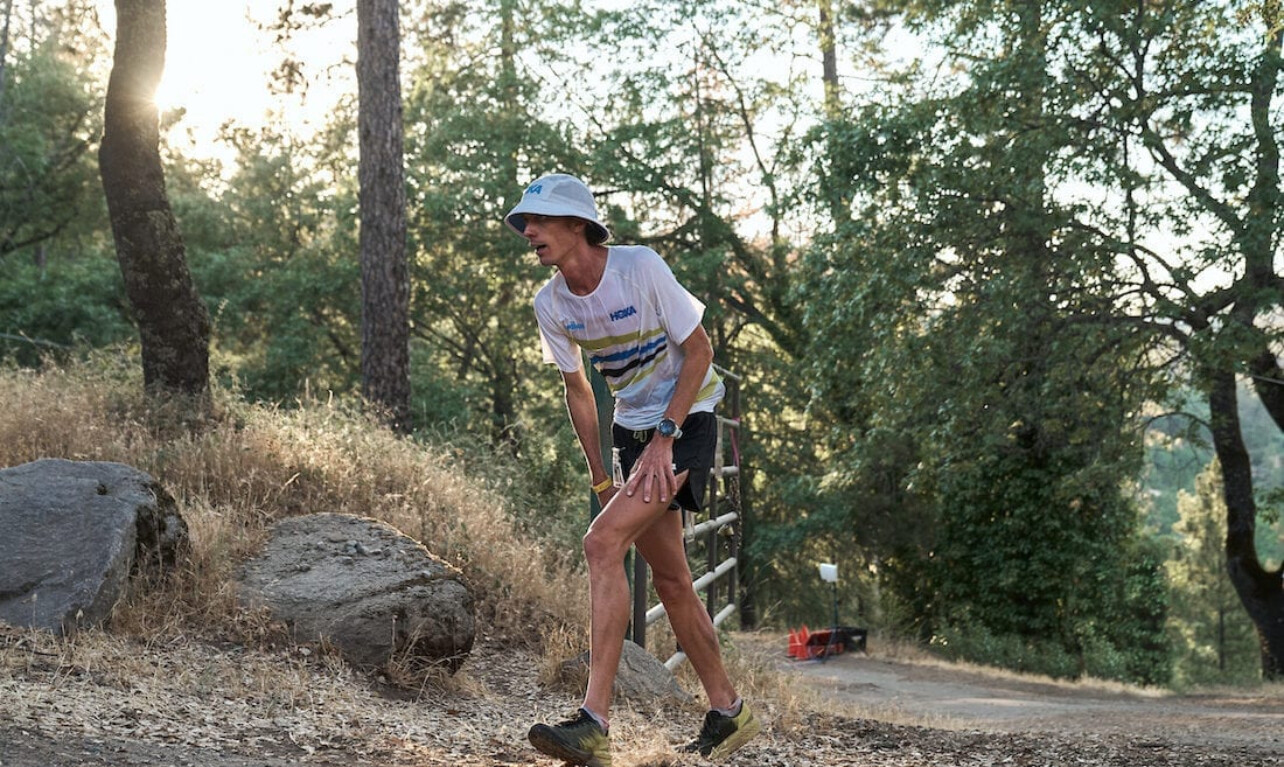
Today, races like the UTMB (Ultra-Trail du Mont-Blanc) in France, the Western States 100 in California, and the Ultra-Trail Cape Town in South Africa are globally recognized—drawing elites and amateur runners alike. These races offer not just distance and competition, but elevation, terrain variety, and breathtaking backdrops.
More Than a Race—A Journey
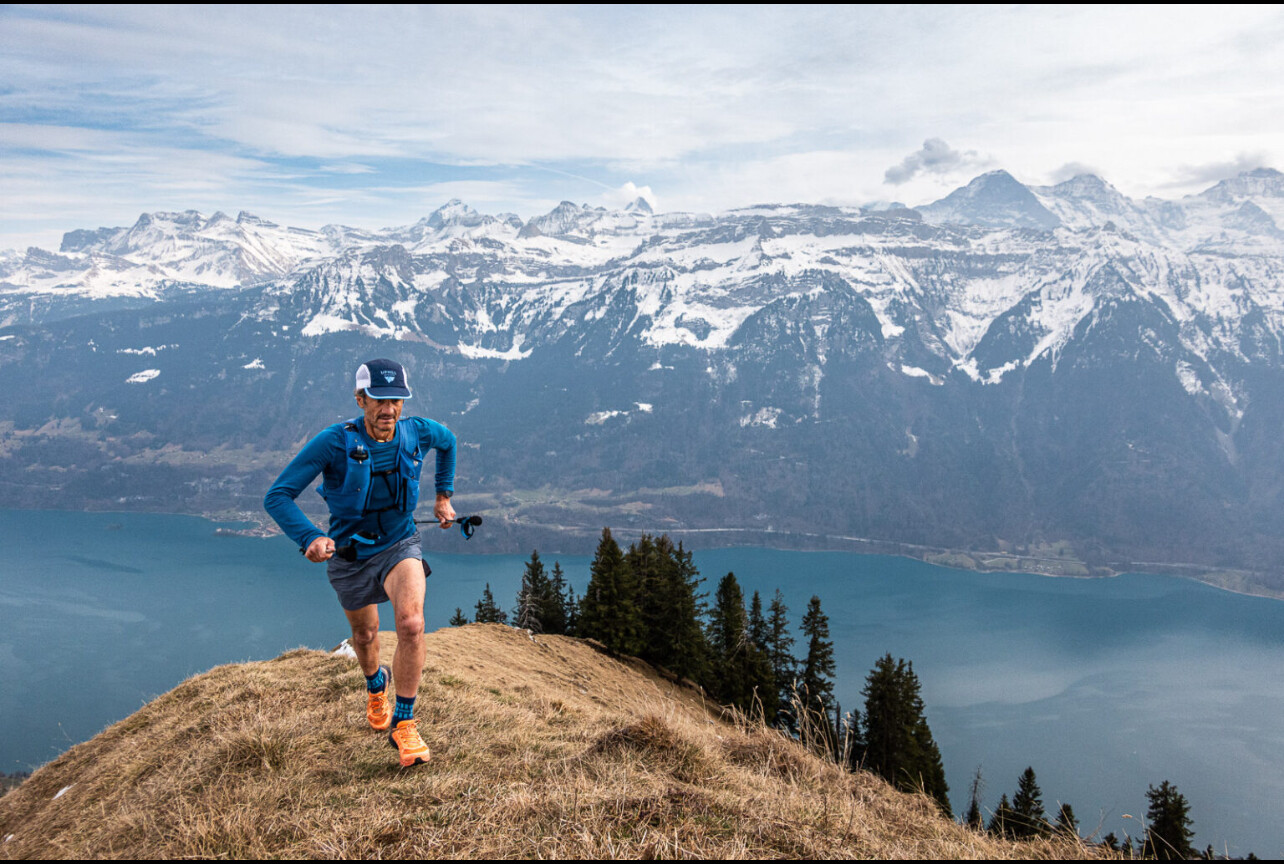
Unlike a typical 10K or marathon, trail races often require navigation, climbing, and mental fortitude. Weather and terrain can change quickly. Aid stations may be miles apart. But it’s exactly these demands that attract runners hungry for something deeper than just speed or medals.
“There’s something primal about running in the wilderness,” says 2023 UTMB finisher Sara Delgado. “It’s not just about pace—it’s about presence.”
Elite Trail Runners on the Rise
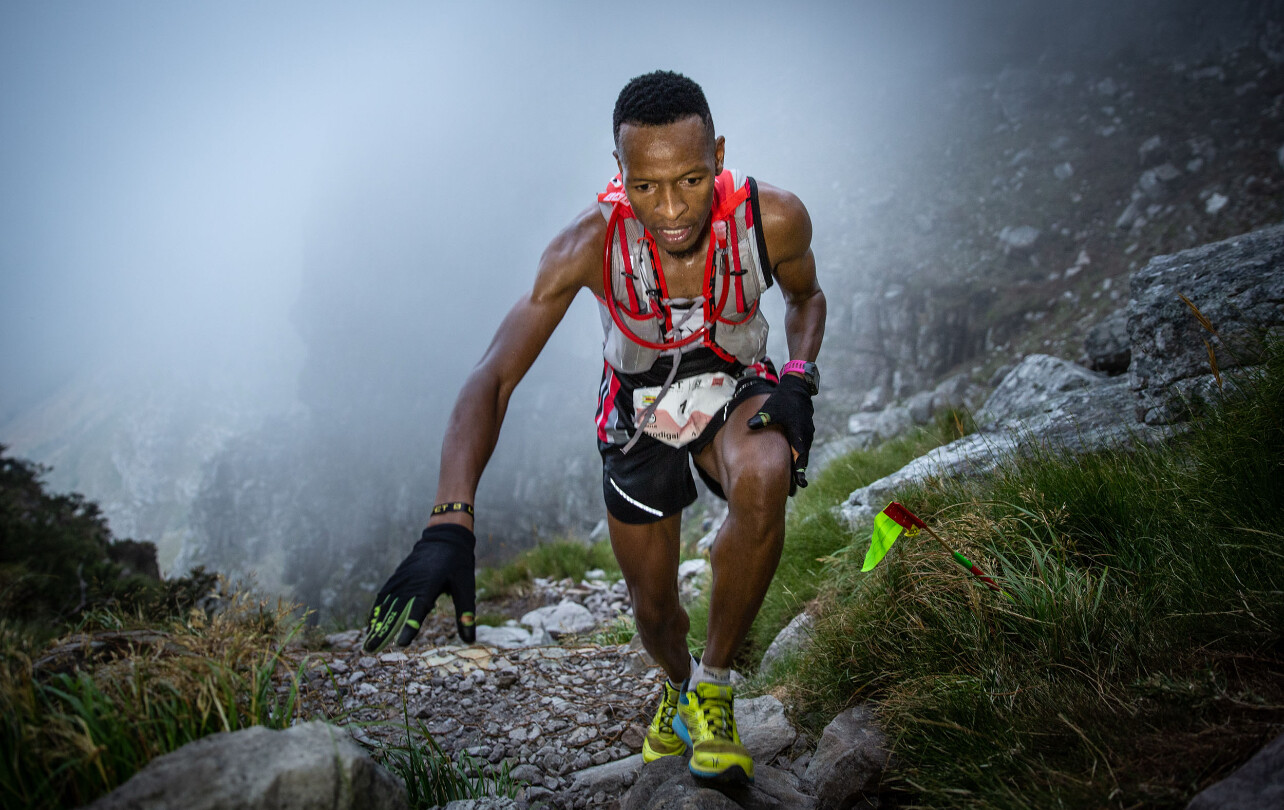
Top road racers are taking notice too. Marathoners like Jim Walmsley and Kilian Jornet have made trail dominance a core part of their legacy. Meanwhile, athletes like Courtney Dauwalter are redefining what endurance looks like, regularly winning 100-mile races overall—not just in the women’s field.
Sponsors have followed the talent. Major brands are investing in trail running gear, shoes, and media coverage, making the sport more visible and viable for elite athletes and growing its appeal for weekend warriors.
Global Appeal
From Portugal’s Douro Valley to the jungles of Costa Rica and the peaks of Japan’s Alps, trail races are being launched in every corner of the world. Many combine local culture with intense landscapes, turning these events into destination experiences.
Travel-based trail running adventures—3-day stage races, run-and-yoga retreats, and culinary trail tours—are also gaining traction. It’s no longer just a race, but a way to see the world, one footstep at a time.
What This Means for the Future
Trail running is redefining the running boom by offering what many road races cannot: quiet, challenge, authenticity, and unfiltered connection to the earth. As the sport continues to grow, it’s likely we’ll see more hybrid athletes, crossover races, and increased visibility across the media.
The road will always have its place, but for a growing number of runners, the real race begins where the pavement ends.
by Boris Baron
Login to leave a comment
Harry Styles From Global Pop Star to Marathon Runner
Harry Styles is best known for his chart-topping music, sold-out world tours, and effortless charisma. But in addition to his accolades in entertainment, Styles has now established himself as a legitimate marathon runner. His recent performance at the 2025 Tokyo Marathon, where he finished in an impressive 3 hours, 24 minutes, and 7 seconds, has sparked widespread attention in the running community.
The Musician-Turned-Marathoner
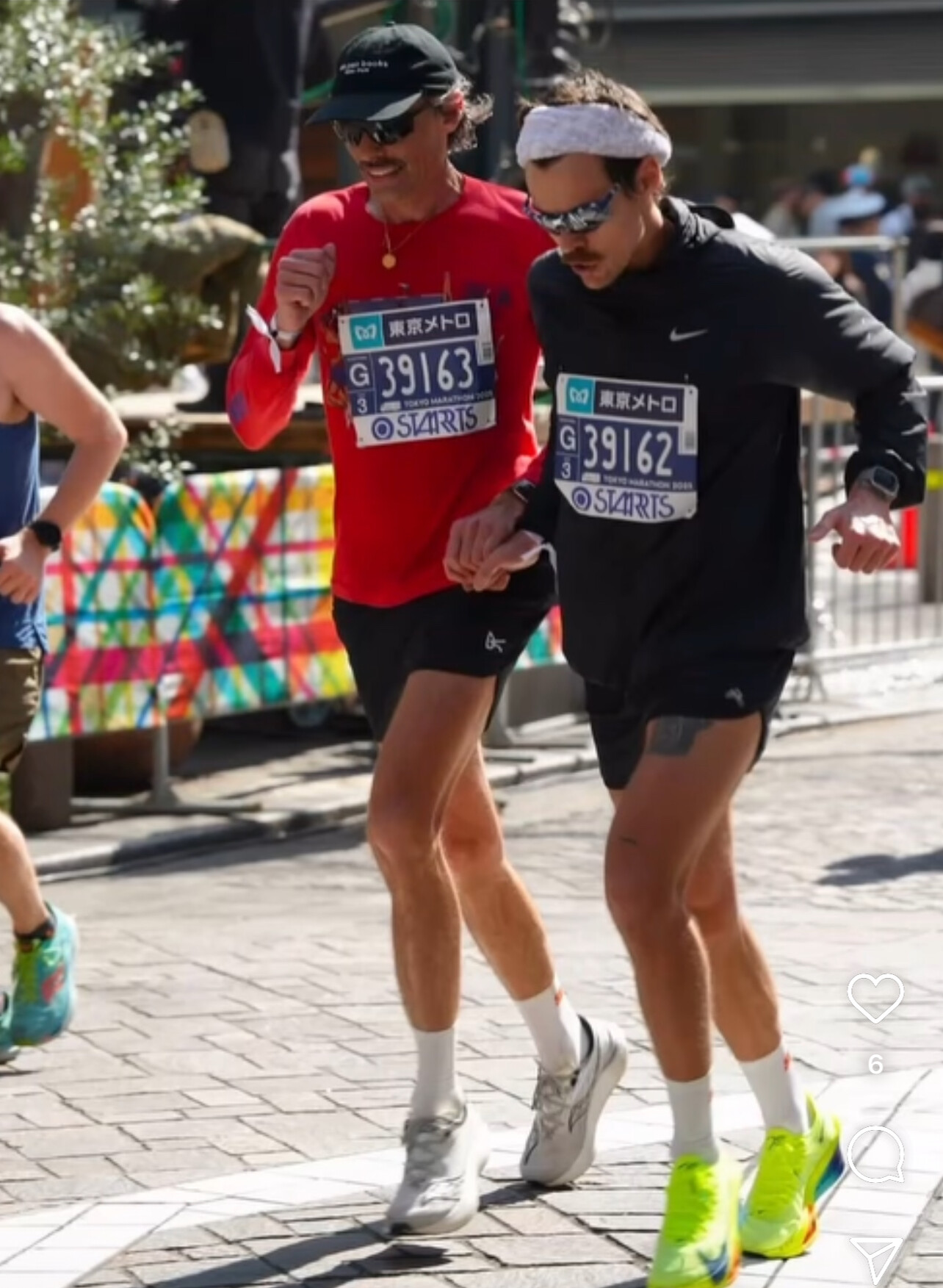
While many celebrities dabble in fitness, Harry Styles' commitment to distance running is far from casual. The 30-year-old singer-songwriter, formerly of One Direction, has always been known for his energetic stage presence and relentless touring schedule, both of which require significant stamina. But his disciplined approach to marathon training reveals a new layer of dedication beyond the spotlight.

At the Tokyo Marathon on March 2, 2025, Styles placed 6,010th out of over 26,000 runners, finishing ahead of more than 20,000 competitors. His pace of 7:47 per mile was remarkably steady, with near-identical splits for the first and second halves of the race—1:42:03 and 1:42:04, respectively. This consistency is a hallmark of experienced marathoners, proving Styles' preparation and race strategy were well-executed.

How Did He Train?

While Styles has yet to publicly detail his full training regimen, sources close to the musician have hinted at his intense dedication. Reports suggest he followed a structured training plan, incorporating long runs, speed work, and cross-training. Given his history of staying active and embracing challenges, it’s no surprise that Styles approached marathon running with the same level of focus he applies to his music career.

What Shoes Did He Wear?
Runners always want to know about gear choices, and Styles opted for the Nike Alphafly 3, one of the most advanced marathon racing shoes on the market. The carbon-plated, energy-returning design of the Alphafly series has helped many elite runners achieve fast times, and Styles’ choice indicates he’s serious about performance.
Harry’s Background in Fitness

Long before tackling 26.2 miles, Styles was no stranger to an active lifestyle. His concerts, which involve hours of movement and high-energy performances, have kept him in excellent shape. During his One Direction days, Styles often spoke about playing football (soccer) and enjoying hikes, but running a full marathon is a leap into an entirely new level of endurance.
Styles has also embraced wellness trends, including yoga and meditation, as part of his holistic approach to health. Running seems to fit seamlessly into his lifestyle, giving him both a physical and mental outlet amid the chaos of global fame.
Will He Run More Marathons?

With a sub-3:30 marathon debut, the big question now is what’s next for Harry Styles as a runner? Many fans and experts believe this won’t be his last race. Given his steady pacing and strong finish, he has the potential to go even faster in future marathons. Could a sub-3-hour marathon be in his future? Time will tell.
Harry Styles is more than just a music icon—he’s now part of the global running community. His impressive debut at the Tokyo Marathon has not only inspired his fans but also demonstrated that elite-level entertainment careers and serious marathon training can go hand in hand. Whether he’s breaking records on the stage or on the racecourse, one thing is certain.
Harry Styles is in it for the long run.
What do you think about Harry’s marathon performance? Should he try for a Boston Qualifier next? Share your thoughts on My Best Runs!
Login to leave a comment
I am very impressed by this performance. Not only did he finish a marathon but he ran at 7:47 per mile pace. - Bob Anderson 3/8 8:18 am |
Part Two: Training the Kenyan Way—Jimmy Muindi’s Coaching Success and Impact at KATA Portugal
In Part One, we explored Jimmy Muindi’s remarkable journey from a young barefoot runner to an elite marathoner, winning the Honolulu Marathon six times and running a personal best of 2:05:24. Now, in Part Two, we dive into his success as a coach, both in Kenya and now at KATA Portugal.
Muindi has been deeply involved in training athletes back home for many years. After his own marathon wins, he set up a youth training camp in Ngong, on the outskirts of Nairobi, where he began mentoring promising runners. One of his most famous protégés is Patrick Makau.
Around 2005, Muindi—then fresh off his Rotterdam Marathon victory—heard about a talented young runner from his home area. He sought out Makau, offered guidance and encouragement, and after Makau finished high school, Muindi brought him into his camp in Ngong and trained him for two years.
Under Muindi’s tutelage, Makau developed from a schoolboy star into a world-class road racer, even winning a 25K race in Berlin as his first international competition. The pinnacle of their mentor-student relationship came in 2011, when Patrick Makau broke the marathon world record in Berlin, a testament to the solid foundation and focus Muindi helped instill early on. This example highlights Muindi’s overall impact—he has a keen eye for talent and the ability to nurture it to the highest level.
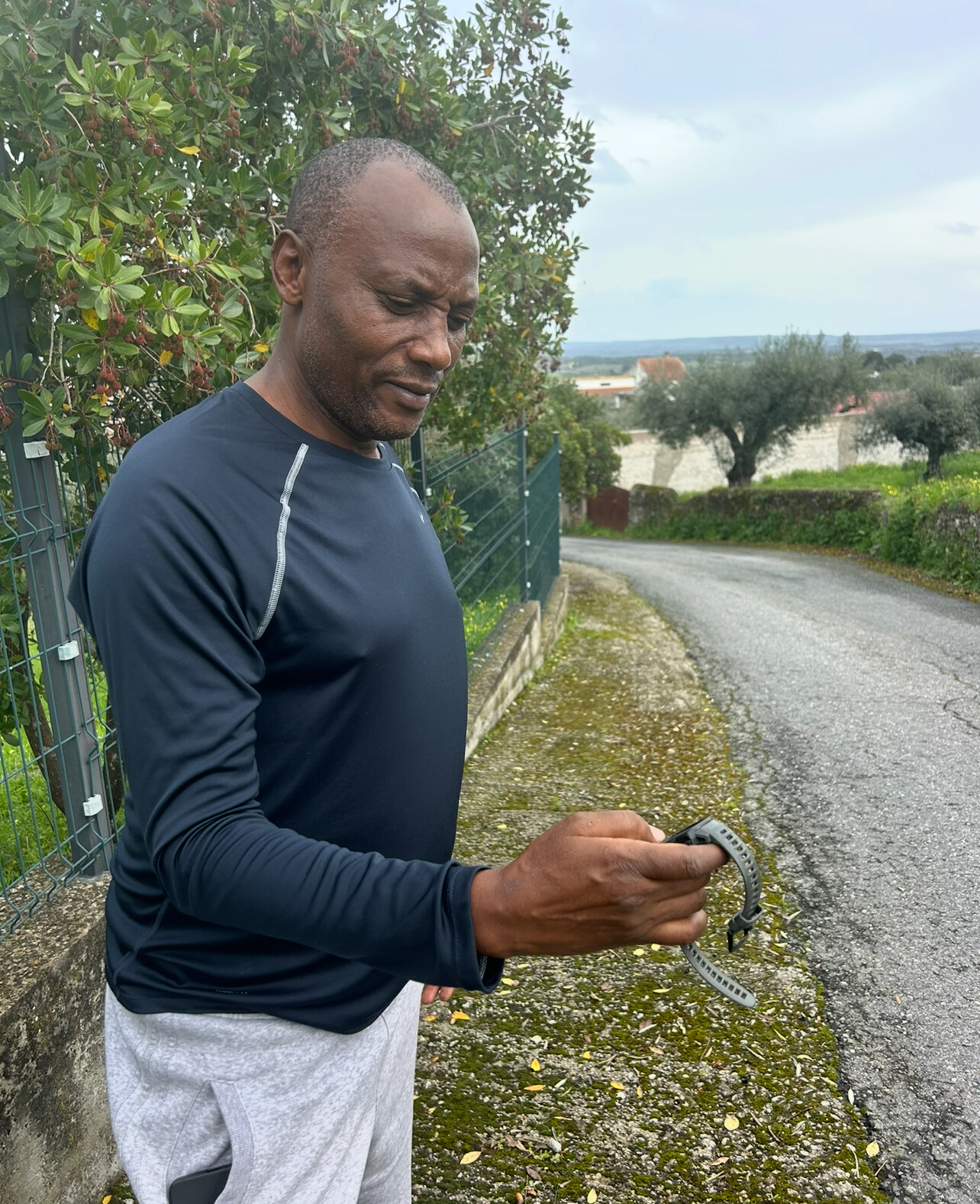
Muindi’s coaching reach doesn’t stop with Makau. Over the years, he has worked with and inspired many Kenyan athletes, as well as athletes from South Africa and Zimbabwe. He even coached and paced his younger brother, Nicholas Muindi, who himself became a 2:15 marathon runner. Training side by side with Jimmy, Nicholas and others like teammate Eric Nzioki benefited from Jimmy’s experience and training methods.
In Kenya’s running culture, group training and mentorship are key, and Muindi has been at the heart of such groups—whether informally bringing up younger runners in his home region or mentoring elite athletes at training camps. Dozens of runners have shown marked improvement under his guidance.
It’s common to hear of a runner joining a group with modest personal bests and, after months of hard training, cutting down their times significantly. This kind of progress speaks to Muindi’s effective coaching style and the training environment he helps cultivate. His approach is very much about training the Kenyan way, a philosophy he exemplifies.
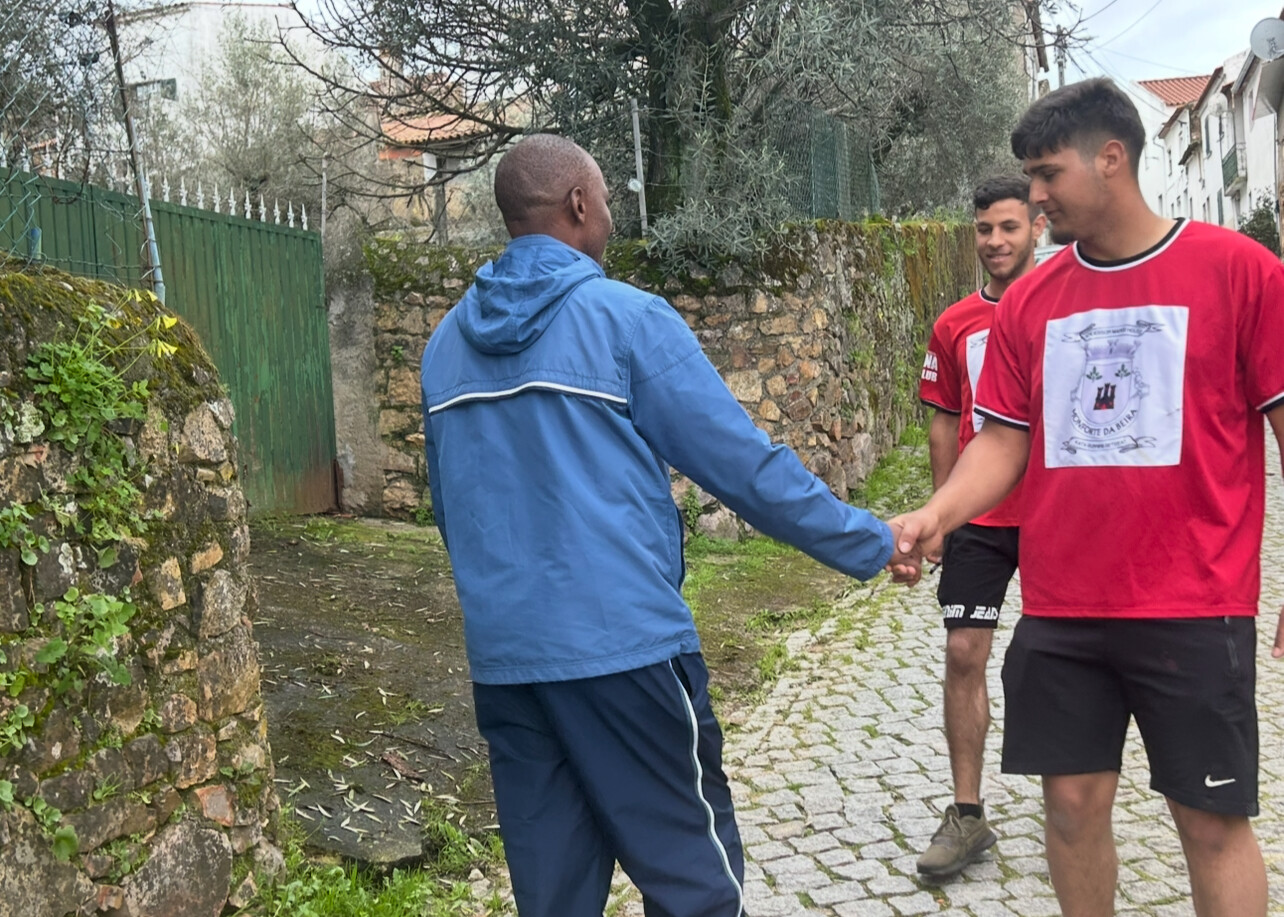
The Muindi Coaching Method: Training the Kenyan Way
What is Muindi’s coaching philosophy and method? In large part, it mirrors the proven Kenyan training principles that brought him success in his own career.
Muindi emphasizes high-mileage, high-quality training weeks. His athletes run twice a day, six days a week—a harder workout in the morning and an easy run in the evening—allowing for both intensity and active recovery.
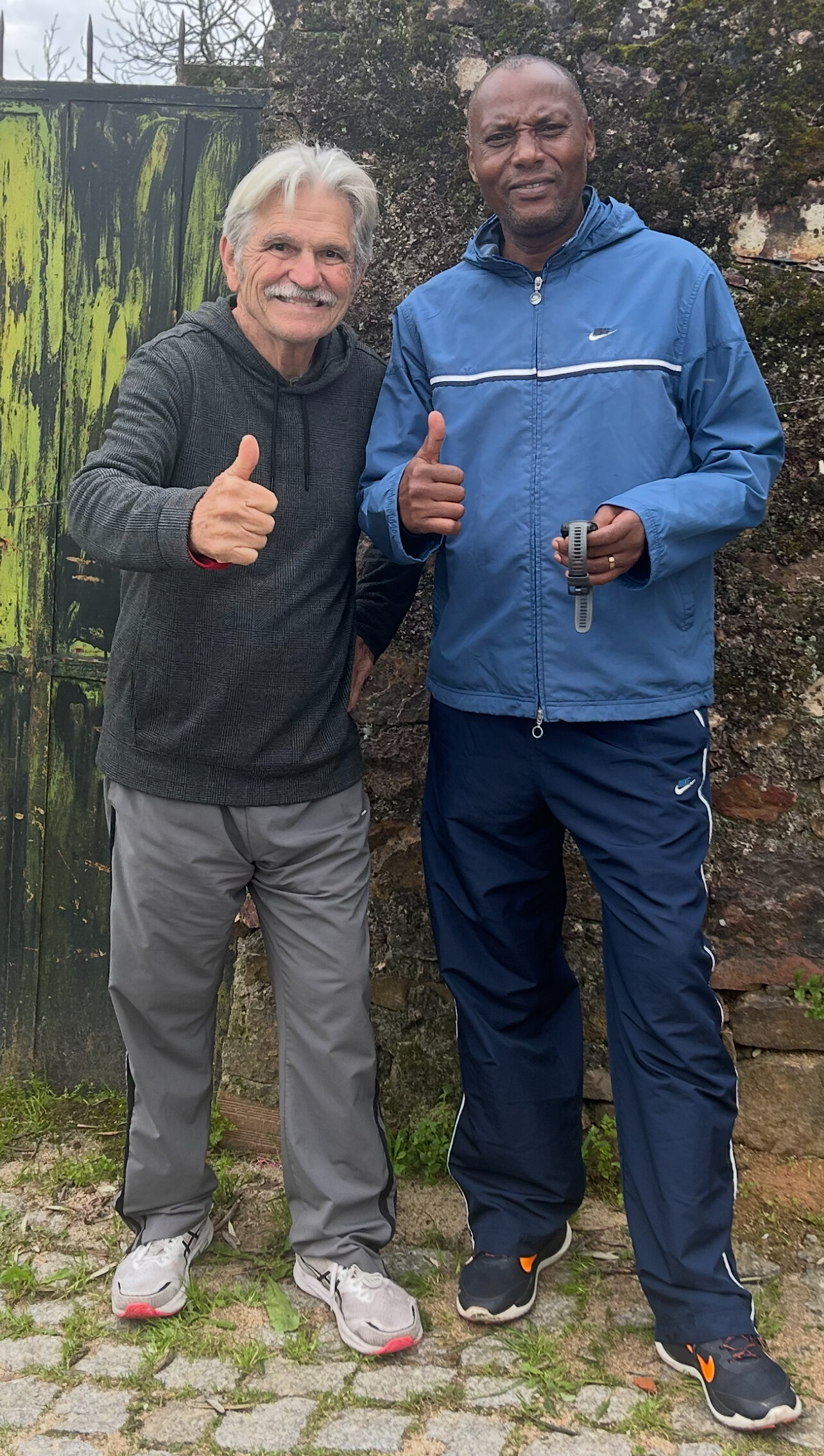
His training follows a simple but effective structure: one hard day followed by an easy day. The hard days vary and can include:
• Fartlek training—alternating between hard efforts and recovery paces over various distances
• Interval training on the track—structured repetitions such as 6 × 1,000m, 10 × 400m, or 4 × 2K at race pace
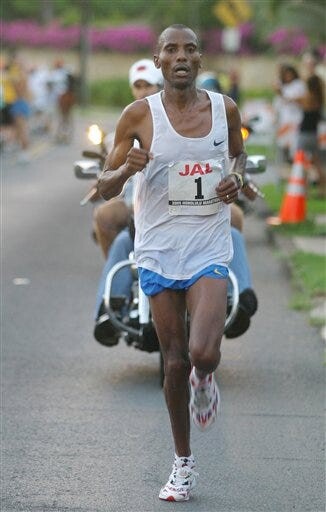
• Hill work—shorter, explosive hill sprints or longer sustained uphill efforts
• Tempo runs—steady-state efforts at or slightly above lactate threshold
On easy days, Muindi ensures that his runners focus on recovery, maintaining a relaxed effort to allow the body to adapt and rebuild.

He also incorporates a mix of workouts that have long been secrets of Kenyan distance running, including:
• Strength and form drills to improve efficiency and prevent injuries
• Diagonal runs—a drill that involves running across a grass field or from one corner of a track to the opposite corner. The effort is 100 to 120 meters, followed by a jog, then repeated ten times or more. This is often done after a long run or a few days before a major race to reinforce good form and maintain leg turnover without overstressing the body.
This structured approach has allowed many of his athletes to break through to the next level.
Bringing Kenyan Training to Portugal
Now, Muindi is bringing this train the Kenyan way experience to international guests at KATA Portugal, the academy’s new European location. Opened in 2024 at the historic Anderson Manor Retreat in central Portugal, KATA Portugal offers runners from around the world a chance to train under Kenyan coaches like Muindi without traveling all the way to East Africa.
As one of the lead coaches for KATA Portugal, Muindi provides the same level of world-class guidance that he has applied in his previous coaching experiences. Visitors can expect an immersive training week that closely models a Kenyan training camp—right down to the daily schedule and philosophy.
Runners joining KATA Portugal can look forward to personalized coaching from Muindi. He begins by evaluating each guest’s fitness and goals, then tailors the training accordingly. A day might start at dawn with an endurance run through the scenic trails around Monforte de Beira, where the retreat is located. Muindi will lead or cycle alongside, monitoring paces and offering tips on form. The morning session could be a long run or a hard workout, depending on the plan—for example, interval repeats on a nearby all-weather track or a fartlek on the rolling country roads.
His approach to guests is hands-on and encouraging. He runs some easy miles with less experienced runners, challenges the faster ones with appropriate paces, and creates an atmosphere where everyone, regardless of level, feels like part of the team.
In the afternoons, he conducts a second, lighter session—this could be an easy shakeout jog, mobility drills, or even a fun group run to explore the area.
Muindi also integrates supplemental training into the program:
• Core strength exercises
• Stretching routines
• Yoga sessions (the Portugal retreat has yoga and massage amenities on site)
All of this mirrors the components of training he used as an elite.
The Kenyan Approach to Recovery and Nutrition
Guests at KATA Portugal will quickly notice Muindi’s attention to recovery. Between runs, he stresses rest, proper hydration, and nutrition. In line with the Kenyan tradition, the meals at KATA Portugal are inspired by the Kenyan runner’s diet—simple, hearty, and rich in carbohydrates. Muindi often dines with the participants, informally sharing stories from his racing days and advice on topics like race strategy or injury prevention.
This personal touch is a huge part of what he brings to the table: you’re not just following a training schedule—you’re learning directly from someone who competed at the highest level.
Why Train with Muindi? A Champion’s Perspective
What truly sets Muindi apart as a coach at KATA Portugal is how his professional background shapes his philosophy in training others.
Having been a world-class marathoner, Muindi understands the dedication required to reach one’s potential. He approaches each runner as an individual, cognizant that everyone has their own journey.
Because he’s been through the highs and lows of competitive running—from winning major races to the grind of daily training—he can relate to the struggles his trainees face. This empathy makes him a patient and motivating coach.
Muindi’s own career was marked by consistency and longevity (he remained competitive for over two decades), and he emphasizes the same long-term approach to his trainees, preaching that improvement comes through gradual progress and consistent effort.
Under his guidance, runners at KATA Portugal gain a rare window into the mindset of a champion. Muindi teaches them to plan their races, listen to their bodies, and cultivate the confidence that comes from thorough preparation.
Coming Next in Part Three
Training is only part of the equation when it comes to running success. Nutrition and strategic race fueling play a major role in performance.
In Part Three, we will explore Muindi’s approach to diet, emphasizing why the most important meal happens two nights before a big race. His personal experience and insights will reveal how proper fueling can make or break a performance.
Stay tuned for the next installment as we dive into the nutrition strategies of elite Kenyan runners and how Muindi applies them to his coaching at KATA Portugal.
by Boris Baron
Login to leave a comment
Besides being a world class runner and now coach Coach Jimmy is a great guy with lots to say. We are happy to have him as part of our KATA team. - Bob Anderson 3/8 8:20 am |
Stretch Your Way to Stronger, Injury-Free Running
Flexibility is a key component of staying injury-free and running strong. It refers to how much your muscles and soft tissues can stretch, and incorporating the right type of stretching at the right time can make a significant difference in your performance and recovery. Whether you’re gearing up for a run or winding down afterward, understanding how to stretch properly can help you move more efficiently and feel better overall.
Why Flexibility Matters for Runners
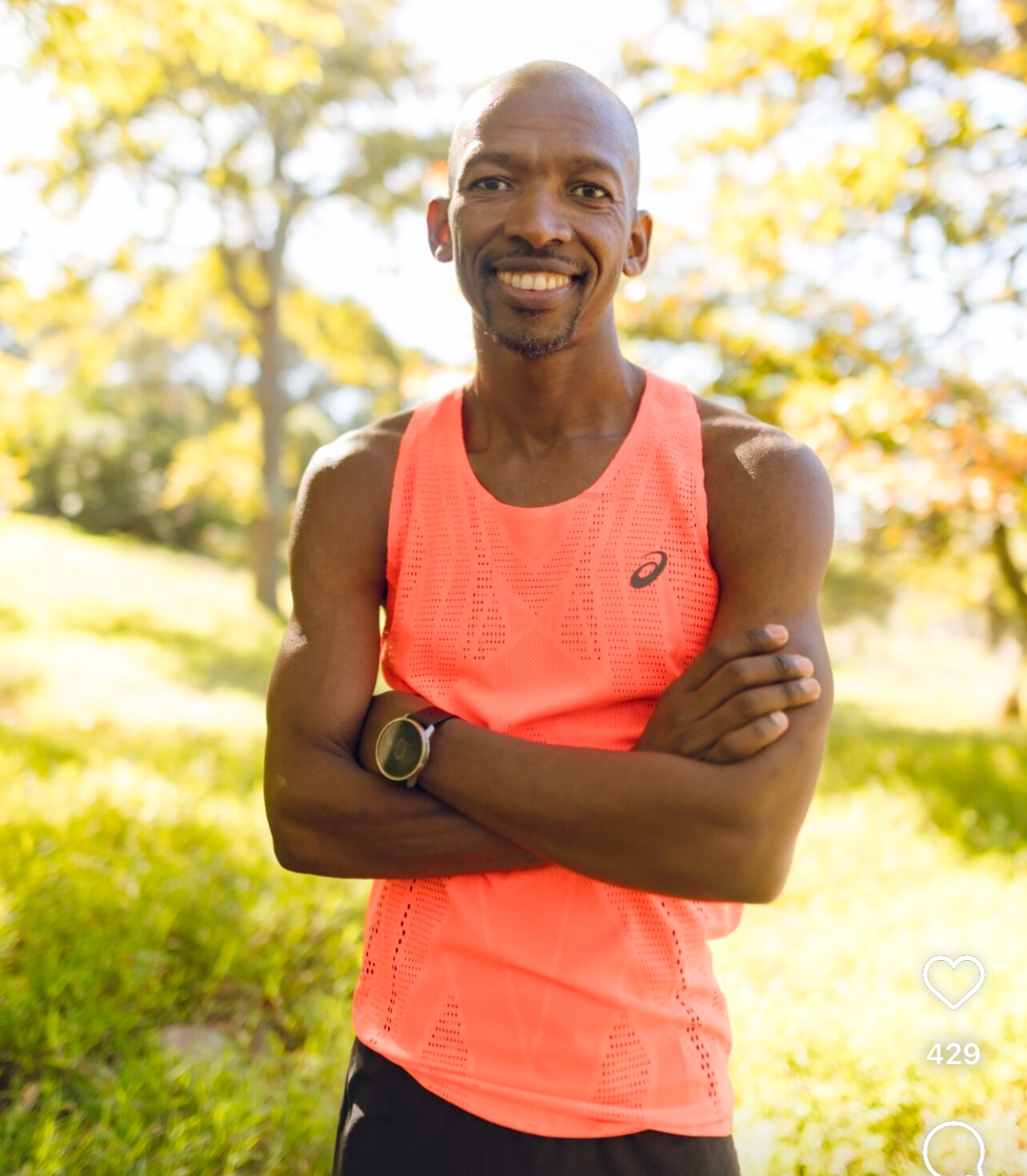
Running puts your muscles, tendons, and ligaments through repetitive stress, causing them to tighten over time. Without adequate flexibility, this tightness can lead to imbalances, inefficient running mechanics, and eventually, injuries. Stretching not only helps maintain the range of motion needed for an efficient stride but also improves circulation, enhances posture, and promotes quicker recovery.
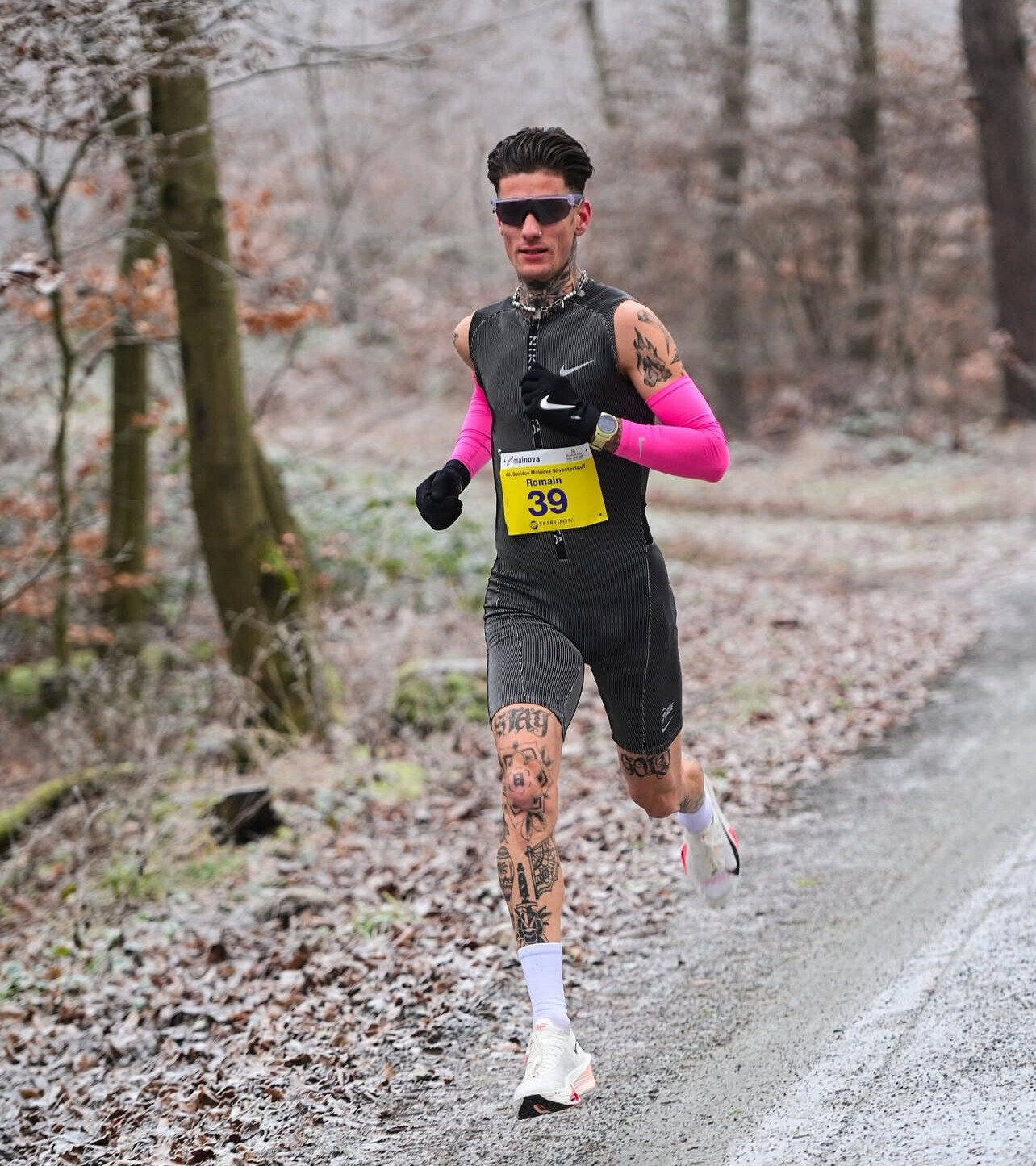
But not all stretching is created equal. There are two primary types—dynamic and static—each with a specific purpose depending on when you stretch.
Two Types of Stretching: When and Why to Use Them
Dynamic Stretching: Pre-Run Prep
Dynamic stretching involves continuous movement through a full range of motion, mimicking the activity you’re about to do. Think of it as “waking up” your muscles, increasing blood flow, and priming your body for action.
Why it matters:
• Improves circulation and muscle elasticity
• Enhances running mechanics and posture
• Reduces the risk of injury by preparing muscles for impTry these dynamic stretches before your next run:
1. Leg Swings:Stand next to a wall for balance and swing one leg forward and backward in a controlled motion. Do 10-15 swings per leg.
2. High Knees:March or jog in place, lifting your knees to hip height. Aim for 30 seconds.
3. Walking Lunges:Step forward into a lunge, keeping your front knee aligned with your ankle. Alternate sides for 10-12 reps.
Static Stretching: Post-Run Recovery
Static stretching involves holding a position for 30 to 90 seconds, allowing your muscles to relax and lengthen. Since static stretching can temporarily reduce power and muscle strength, it’s best done after your run, when your goal is recovery rather than performance.
Why it matters:
• Reduces muscle tightness
• Promotes relaxation and recovery
• Enhances long-term flexibility
Add these static stretches to your cool-down:
1. Hamstring Stretch:Sit with one leg extended, the other foot against your inner thigh. Reach for your toes and hold for 30-60 seconds per side.
2. Calf Stretch:Stand facing a wall with one foot forward and the other extended behind you. Press your heel into the ground and hold for 30 seconds per leg.
3. Seated Forward Fold:Sit with both legs extended and reach toward your toes, keeping your back straight. Hold for 30-60 seconds.
Building Flexibility into Your Routine
Incorporating stretching into your routine doesn’t require a lot of time, but consistency is key. Try these tips to make flexibility training a habit:
• Pre-run:Spend 5-10 minutes on dynamic stretches to activate your muscles.
• Post-run:Dedicate another 5-10 minutes for static stretching to cool down and relax.
• Off days:Consider yoga or Pilates for an extra flexibility boost.
The Takeaway: Stretch Smart, Run Strong
Stretching isn’t just an add-on—it’s a vital part of staying strong, balanced, and injury-free. By using dynamic stretches to prepare your body for movement and static stretches to aid recovery, you’ll be better equipped to enjoy every run and keep pushing toward your goals.
Make flexibility a non-negotiable part of your training, and your body will thank you—mile after mile.
by Boris Baron
Login to leave a comment
The Science of Longevity in Running: How Some Runners Stay Fast for Decades
Running is often thought of as a young person’s sport, but time and time again, we see athletes defying age, continuing to run and even race well into their 60s, 70s, and beyond. Some runners, like My Best Runs founder Bob Anderson, who started running in February 1962 and is still going strong today, prove that longevity in the sport isn’t just possible—it’s achievable with the right approach.
What allows some runners to maintain speed and endurance over the decades while others slow down? The answer lies in science, training adaptations, mindset, and lifestyle choices. This article explores how runners can stay competitive for life—and perhaps even improve with age.

The Science of Aging and Running Performance
Physiologically, runners experience certain changes as they age:
• VO2 max naturally declines at a rate of about 10% per decade after 40. However, regular training can slow this decline significantly.
• Muscle fibers shrink, and fast-twitch fibers deteriorate faster than slow-twitch fibers, impacting speed and power. Strength training and sprint workouts can help counteract this.
• Tendons lose elasticity, and cartilage wear increases, making injury prevention crucial.
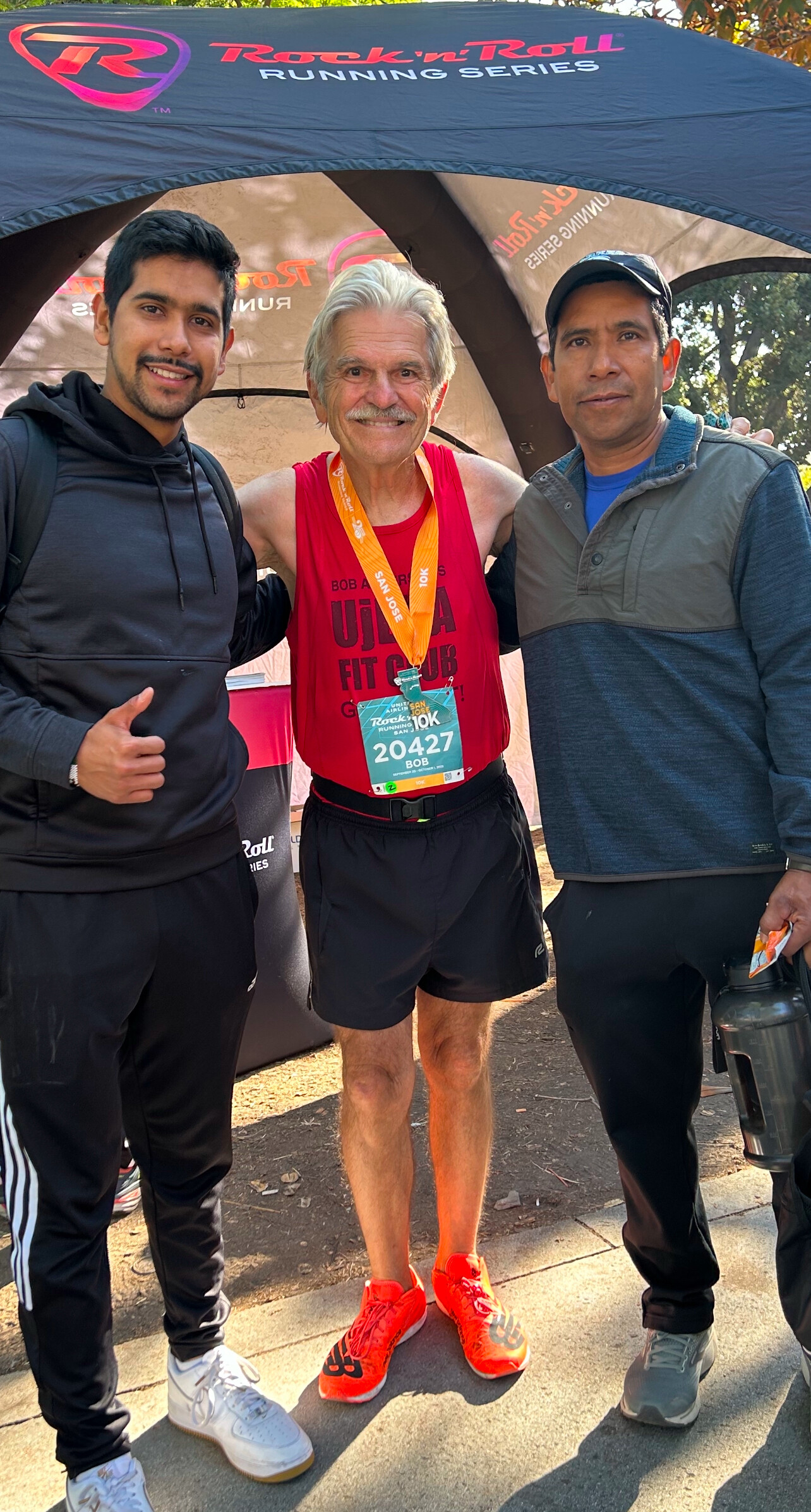
• The body takes longer to recover from hard workouts, making rest, nutrition, and cross-training essential for long-term success.
The good news is that lifelong runners often have stronger hearts, denser bones, and slower biological aging than non-runners. Regular endurance training can reduce the risk of cardiovascular disease, osteoporosis, and cognitive decline.
Training Smart: Adapting Workouts for Longevity
Many runners burn out or get injured because they don’t adjust their training as they age. Here’s how to train smart for decades.
Maintain Speed with Strides and Intervals
Fast-twitch muscle fibers decline faster than slow-twitch fibers, but incorporating short sprints, strides, and intervals helps retain speed. Even just six to eight 100-meter strides at the end of easy runs can keep the neuromuscular system sharp.
Prioritize Strength Training
Strength training two to three times per week can help counteract muscle loss, improve bone density, and prevent injuries. Key exercises include squats, lunges, core work, and hip mobility drills.
Adjust Recovery
Younger runners recover quickly, but for those over 50, rest and active recovery days become more important. Running every day might not be sustainable, but alternating hard workouts with cross-training, such as cycling, swimming, or hiking, can help maintain fitness without overuse injuries.
Keep Mileage Consistent
Aging runners who maintain a consistent but moderate mileage base tend to perform better long-term than those who dramatically reduce or increase mileage. The key is staying active year-round and avoiding long breaks that lead to muscle loss and decreased aerobic capacity.
Nutrition and Recovery: Fueling for the Long Run
Proper nutrition plays a major role in running longevity.
Focus on Anti-Inflammatory Foods
Chronic inflammation contributes to aging and joint pain. Long-term runners benefit from foods rich in omega-3s (salmon, walnuts), antioxidants (berries, leafy greens), and lean proteins (chicken, beans).
Stay Hydrated and Maintain Electrolyte Balance
As we age, our sense of thirst declines, so staying hydrated becomes more critical. Older runners are also more prone to electrolyte imbalances, making magnesium, sodium, and potassium intake vital.
Increase Protein Intake
After 50, the body needs more protein to maintain muscle mass. Aim for 1.2–1.6 grams of protein per kilogram of body weight daily, focusing on high-quality sources like eggs, lean meats, Greek yogurt, and plant-based proteins.
Mental Toughness and Staying Motivated
Longevity in running isn’t just about the body—it’s also about the mind. Many lifelong runners stay motivated by setting new goals, training with a group, and embracing the aging process rather than resisting it.
Bob Anderson, founder of My Best Runs, started running in February 1962 and continues to train and race today. His ability to sustain a high level of performance comes down to consistent training, smart adaptations, and a passion for the sport. His 6:59 per mile pace for 350 miles of racing (50 races totally 350.8 miles over one year) at age 64 is proof that age is just a number when you train right. More recently he ran 49:48 for 10k at age 76.
The Role of Cross-Training and Injury Prevention
Even the most dedicated runners face injuries. The key to longevity is knowing when to rest and when to cross-train.
Some of the best cross-training options for runners over 50 include cycling, swimming, pickleball, hiking, and yoga. Incorporating at least one non-running workout per week reduces injury risk and keeps running sustainable for the long haul.
Gene Dykes and Rosa Mota: Icons of Running Longevity
Bob Anderson is not alone in proving that age is just a number. Gene Dykes, one of the most remarkable masters runners in history, has shattered records in his 70s. At age 70, he famously ran a 2:54:23 marathon.
His secret? A high-mileage approach combined with interval training and a love for the sport that keeps him motivated year after year.
On the women's side, Rosa Mota, the legendary Portuguese marathoner and 1988 Olympic gold medalist, continues to inspire runners worldwide. Even in her 60s, she remains an active ambassador for the sport, showing that passion, consistency, and smart training allow runners to stay competitive for life.
In December 2024, at age 66, Rosa Mota set a new W65 10K world record by completing the San Silvestre Vallecana race in 38:23.
Both Dykes and Mota exemplify the idea that the body can continue to perform at a high level if treated right. Their stories, along with those of runners like Bob Anderson, prove that longevity in running is not just about genetics-it's about persistence, training adaptations, and maintaining the joy of ring.
Final Thoughts: Running for Life
Longevity in running isn’t about fighting age—it’s about embracing the journey, adapting intelligently, and staying passionate. The best runners understand that while paces may slow, the love of the sport grows deeper with time.
Whether you’ve been running since February 1962 like Bob Anderson or are just starting in your 50s or 60s, consistency, smart training, and joy in the process are the real secrets to running for life.
by Boras Baron
Login to leave a comment
Rosa Mota: Defying Age with a 38-Minute 10K World Record at 66
At 66 years old, Rosa Mota, Portugal’s marathon icon and former Olympic champion, continues to prove that greatness knows no age. Most recently, she stunned the world by setting a new age-group world record for the 10K, finishing in an astonishing time of 38:25.This achievement not only cements her status as a legendary athlete but also highlights her remarkable longevity in a sport dominated by younger competitors.
The record-breaking performance occurred during the San Silvestre Vallecana 10K race, where Mota finished with a time of 38:25, significantly improving her previous W65 world record of 38:45, set in Valencia almost a year prior.

Rosa Mota rose to international fame in the 1980s, dominating the marathon scene and becoming one of the greatest long-distance runners in history. Born in Porto in 1958, she grew up with a love for running and quickly emerged as a standout athlete.
Her career highlights include winning the marathon gold medal at the 1988 Seoul Olympics and bronze at the 1984 Los Angeles Olympics. She also won the inaugural women’s marathon at the European Championships in 1982, setting the tone for her incredible career. Rosa claimed victories in major marathons worldwide, including Boston, Chicago, and London, and her legacy includes a World Championship title in 1987.
Pushing the Limits at 66:
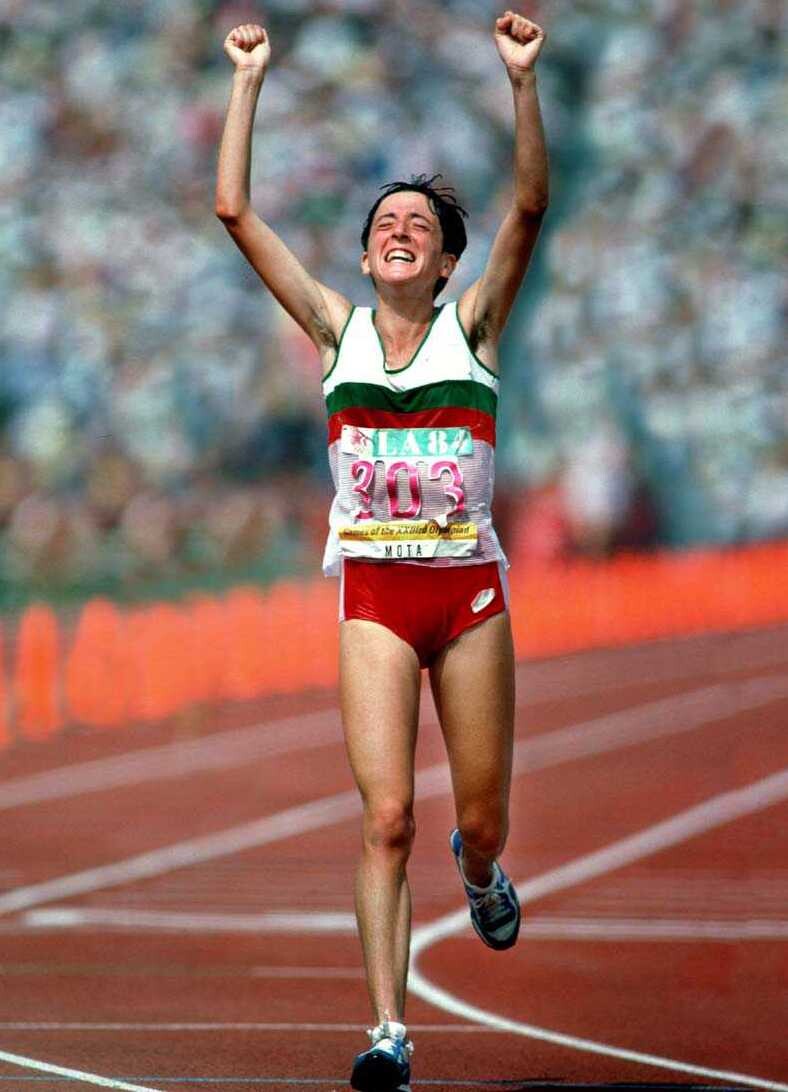
Rosa’s most recent feat is part of a series of record-breaking performances that have reignited her fame in the running world. Earlier this year, she set a W65 world record in the half marathon with a time of 1:25:52, followed by her stunning 10K record of 38:25. These times are exceptional not just for her age group but for athletes of any age, underscoring Rosa’s incredible dedication and talent.
Rosa attributes her success to a lifelong passion for running and disciplined training. “I never stopped loving this sport,” she said after her race. “I still wake up every day excited to run, to challenge myself, and to show others that age is not a limit—it’s an opportunity.”
The Secret Behind Rosa’s Success:
Rosa’s training has evolved over the years, focusing on smart, consistent workouts that prioritize recovery. She combines speedwork, long runs, and cross-training with strength exercises and yoga to maintain her agility and endurance. A balanced Mediterranean diet, rich in fruits, vegetables, and lean proteins, also contributes to her vitality.
“I listen to my body more now than I did in my younger days,” she explains. “Rest and recovery are just as important as the training itself.”
A Beacon of Inspiration:
Beyond her athletic achievements, Rosa Mota is a symbol of resilience and empowerment. She remains an active figure in the running community, advocating for health, fitness, and women’s participation in sports. Through her recent performances, she has inspired not only her peers but also younger generations of runners.
“I want people to know it’s never too late to dream big,” Rosa says. “Set goals, stay consistent, and believe in yourself. That’s how records are broken—on and off the track.”
Legacy of Greatness:
Rosa Mota’s 38-minute 10K record is more than just a number—it’s a testament to the power of determination, discipline, and a lifelong love for running. As she continues to push boundaries, she reminds us all that the human spirit can triumph over any obstacle, including the passage of time.
by Boris Baron
Login to leave a comment
Strong toes, strong stride: the running secret you're overlooking
When was the last time you thought about your toes? These tiny, often-neglected body parts play a massive role in your running performance. While debates about “the perfect shoe” rage on, many experts argue that what’s inside the shoe matters most. Could your toes be the secret to staying injury-free and running stronger?Toe strength equals running power
Your toes may seem insignificant, but they provide stability, balance and propulsion with every step. Strong toes help absorb impact and distribute the load across your foot, reducing strain on your ankles, knees and hips. Weak toes, on the other hand, can lead to instability and overuse injuries, like plantar fasciitis or Achilles tendinitis.Researchers have found that increasing toe strength improves foot arch support and running efficiency. The muscles in your toes, especially the flexor hallucis longus (the muscle under your big toe), act like springs, giving you extra power during push-off.Shoes are not a substitute for strength
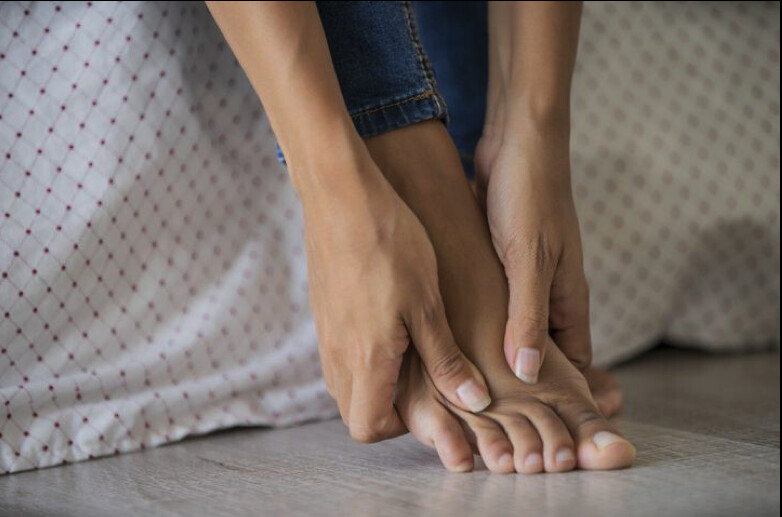
Modern running shoes are marvels of engineering, but they can’t make up for weak feet. In fact, some research suggests that overly-cushioned or restrictive footwear can limit natural foot movement and lead to underdeveloped muscles in your feet and toes. Think of it like this: relying on shoes without training your toes is like putting racing tires on a car with a weak engine.How to strengthen your toes
Want to tap into the hidden potential in your toes? Start with these simple exercises:Toe yoga: Lift your big toe while keeping the others down, then reverse it. This improves muscle co-ordination.
Towel scrunches: Place a towel on the floor and scrunch it with your toes to build strength.
Marble pickup: Use your toes to pick up small objects like marbles—which is surprisingly fun and effective!
Barefoot balance: Practice balancing on one foot in your bare feet to improve stability and strengthen intrinsic foot muscles.
Login to leave a comment
SHOULD YOU TRAIN WHEN YOU’RE SICK?
Sometimes your body will decide for you—but sometimes you need a little guidance
There’s no doubt about it—getting sick in the middle of a training block sucks. You may need to skip training runs, or even your goal race. Only you can decide whether you’re too sick to run, but there are some useful guidelines.
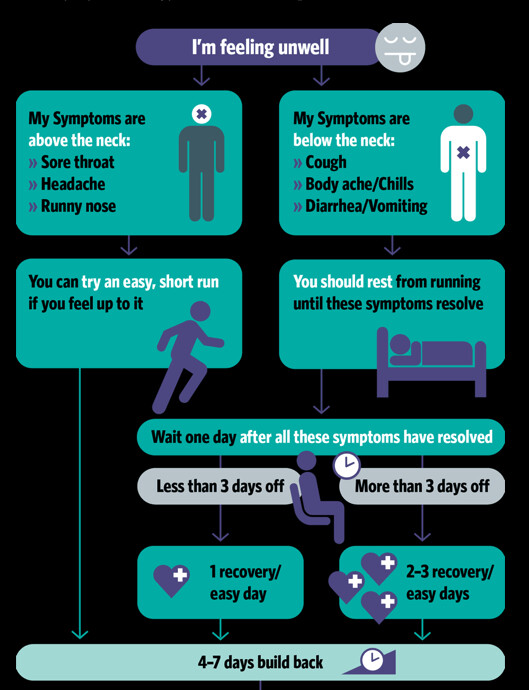
Dr. Rose Zacharias is an emergency medicine physician based in Orillia, Ont. She says it’s OK to run if you are in good health overall and you’ve been running for a while (and you don’t feel like you’re going to collapse if you start running). An experienced runner who’s feeling a bit under the weather could try a shorter, slower run, just to get some miles in, but “if you feel more fatigued or develop more pain and you continue to feel unwell, then it is time to rest,” she advises.
Zacharias adds that “new shortness of breath and/or new chest pain, or anything gastrointestinal, is a sign that you should skip the run. And if activity makes you feel worse, then it’s best to stop and rest up, or get an expert opinion.”
She points out that different illnesses will affect your cardiovascular and metabolic systems differently, and affect your ability to run in different
It also depends how important those runs are to your training. The first few runs in base season aren’t that critical, and skipping them while you take time to recover from illness are unlikely to affect your training once you resume running. However, being forced to miss a key workout a few weeks out from a race might be more detrimental to your performance, and could result in your having to re-evaluate your goal, possibly switching to a target race that’s later in the season.
When you’re ready to resume physical activity, it’s best to try walking or some gentle yoga before diving back into run training, and when you’re ready to run, keep the pace easy and conversational for the first couple of outings. Don’t feel bad if you need to take walk breaks. Remember that nutrition is an important part of training; if being sick prevented you from eating normally for a few days, your energy stores will be depleted.
A good rule of thumb is to allow two to three days of easy running for every day you were sick. Pushing too hard too soon could end up setting you back even further. Avoid high-intensity workouts for a couple of weeks, since these could further compromise your immune system.
It can be tempting to push too hard to catch up after taking time off due to illness, but coming back gradually will pay dividends in the long run.
Lauren Charlton is a competitive distance runner and future sports dietitian who’s passionate about keeping runners in the sport for the long game.
Login to leave a comment
For sure do not run with a high fever. About 14 years ago I woke up with a 103 degree fever. I had a 10k race that morning. I decided to run the 5k instead. I clocked 17:29 or so. But what mistake.. my running did not return to normal for like three months. When I would go out for a training run I had to stop only after a mile or so because I could not breath and my body just did not want to go. It was terrible. - Bob Anderson 12/15 7:24 am |
Test your mobility with this fun Internet challenge
The viral tissue box fitness challenge is sweeping social media. Can you do it?
Runners are usually praised for their mobility, but when was the last time you truly put your range of motion to the test? Enter the tissue box challenge–a viral trend sweeping social media. The premise is simple, yet deceptively difficult: stand on one leg, bend over and grab a tissue with your mouth—all without letting your extremities touch the ground.
Running demands a significant range of motion, particularly in the hips, knees and ankles, but if you’re not doing frequent mobility training in addition to your mileage, this challenge could humble you. If you can successfully complete the challenge, congratulations! Clearly, your mobility training is paying off, and your range of motion is top-notch. Keep up the great work—whatever you’re doing is working.
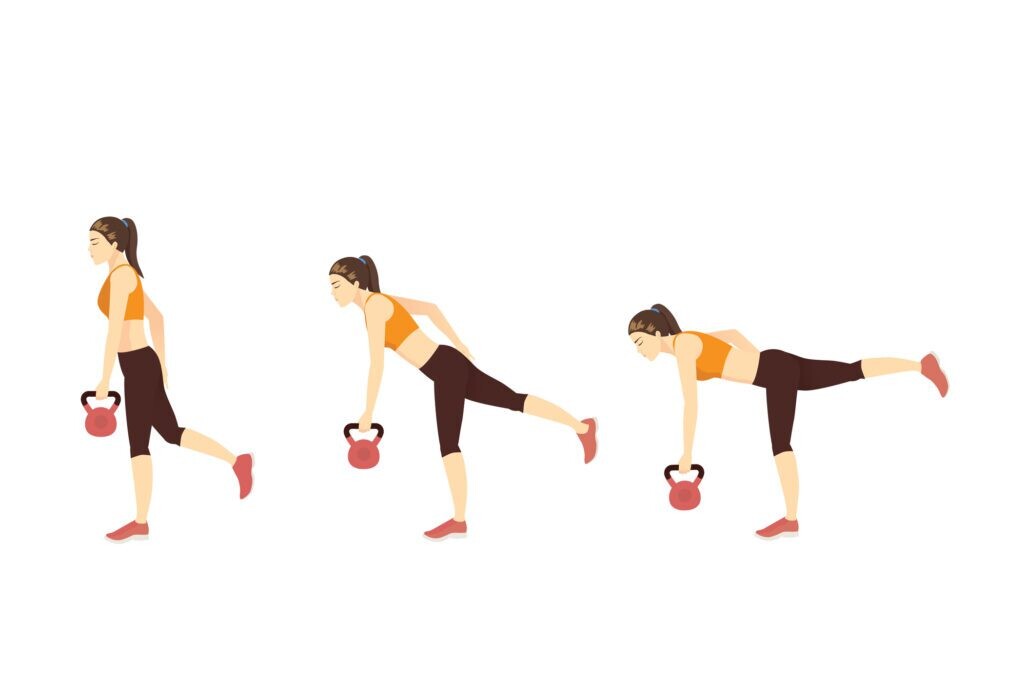
For those of us who didn’t stick the landing (myself included), don’t fuss. There are plenty of low-maintenance ways to improve your mobility. Adding one or two of these exercises to your weekly routine can help prevent injuries and build strength, even if you’re already a strong runner.
Yoga and Pilates
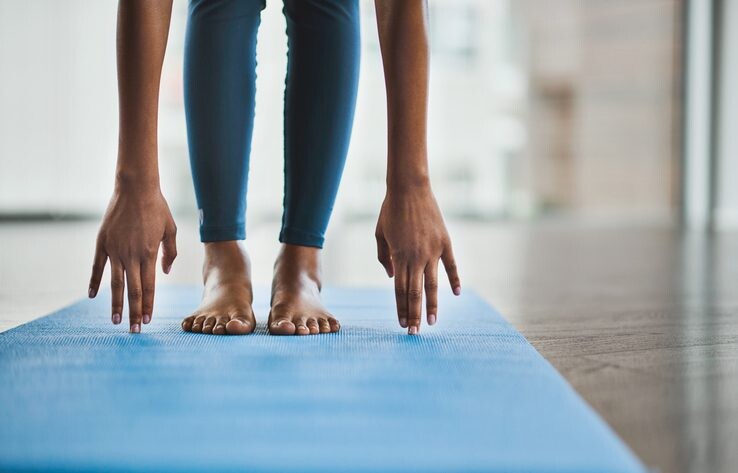
Both practices work on improving flexibility, balance and strength (three things needed for this challenge). You might be saying to yourself, “I don’t have time for that.” Try adding in one 20-minute session a week, and within a month, you’ll be able to see your progress.
Foam rolling
Foam rolling is like an old man yelling at a cloud: no one likes doing it, but regular use after runs and workouts helps relieve tight, sore muscles and improve blood circulation. To improve your mobility for this Internet challenge, focus on rolling your calves, hamstrings, quads and hip flexors.
Mobility drills
Adding mobility drills, such as 90/90 hip switches, ankle dorsiflexion stretches, or balance-focused exercises like single-leg deadlifts or Bulgarian split squats can target those problem areas and improve joint function while strengthening the muscles around your joints.
Whether you mastered the tissue box challenge or not, working on your mobility is always a win. Not only will it make you a better runner, but it’ll also improve your ability to move and do any activity. So, grab a tissue box and give it a shot—then use a few of these tips to keep improving!
by Marley Dickinson
Login to leave a comment
Does Yoga Count as Strength Training?
If you’ve ever been sore after a yoga class or felt your muscles aching while holding Warrior 2, you’re familiar with the strengthening benefits of yoga. Although many of us associate yoga with primarily increasing flexibility and calming one’s chaotic thoughts, yoga does build muscle. But how effective is it? Does yoga count as strength training?
Does Yoga Count as Strength Training?
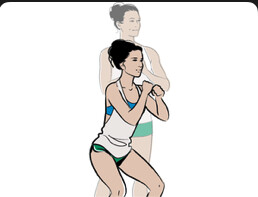
The short answer is, it depends.
According to the Centers for Disease Control and Prevention (CDC), adults should accumulate a minimum of 150 minutes of moderate-intensity aerobic exercise or 75 minutes of vigorous-intensity aerobic exercise per week plus at least two total-body strength training workouts per week. Strength training increases muscular strength and muscular endurance, which are two of the five components of health-related fitness.
Strength training, also known as resistance training, involves exercises that load your muscles. This not only builds muscle but increases bone density and helps stabilize joints to prevent injuries. Lifting weights or using resistance bands are two common options for strength training.
But they’re not necessarily the only options. Bodyweight training, in which you use your own weight as resistance, is another type of strength training. Some styles of yoga can be considered bodyweight training and can be ideal for anyone who either doesn’t have access to a gym or doesn’t care for or have time for traditional strength training exercises.
That said, there are two factors that largely influence the response to does yoga count as strength training.
1. Type of Yoga
Yoga is an extremely diverse practice with many different styles and ways to practice. Certain types of yoga and poses can strengthen muscles and potentially even build muscle.
2. Your Fitness Level
The other factor that plays a significant role in whether yoga functions as strengthening is your fitness level. Ultimately, it is more difficult to build muscle with yoga than it is with traditional resistance training using external implements such as dumbbells, barbells, kettlebells, resistance bands
In order to build muscle, you need to overload your muscles’ current capacity enough to induce some amount of damage to your muscle fibers. This microscopic damage triggers a process known as muscle protein synthesis, which repairs and rebuilds muscle and helps make your muscles stronger over time.
While it is possible to strengthen your muscles and potentially build muscle exclusively through bodyweight exercises, most people reach a plateau of body strength where some external resistance is necessary to continue strengthening and increasing muscle mass. In general, practicing yoga is not as effective as lifting weights.
However, anything that challenges you is strengthening your muscles. For example, chair yoga can be an efficient strength-training workout. Don’t compare yourself to others and meet your body where you’re at. Also, never push your body beyond your current fitness level or to the point of pain or extreme discomfort.
What Are the Best Types of Yoga for Strength Training?
Beginners often assume that classes for more experienced practitioners are inherently more difficult and better for strengthening than beginner classes. This isn’t necessarily true. These classes are often faster-paced and focus more on transitions between poses and less instruction from the teacher. This can increase the risk of injury for those who are still mastering the foundations and learning basic yoga poses. It can also shift the emphasis to the space in between the poses rather than the strengthening practice of holding the poses for a length of time.
It’s the style of yoga that plays a more important role in whether or not you will be strengthening your muscles or focusing on other aspects of fitness and health in your yoga class.
Some of the best types of yoga for muscle strength include:
Vinyasa yoga
Power yoga
Login to leave a comment
Yes, You Can Train for a Marathon Running Just 3 Days Per Week
Take notes from experts and runners who have found success with just three runs a week.
Finishing a marathon is a bucket-list item for many runners, not to mention it can seriously boost your confidence and your fitness. But with work, family, and other obligations filling up your calendar, it can be difficult to fit marathon training into your schedule... unless you have a three-day-a-week marathon training plan that makes it easier to get prepped for the starting line.
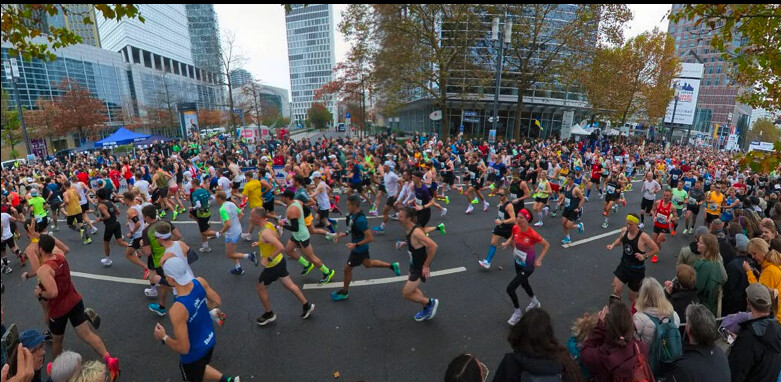
So before you write off marathon training as too time-consuming, consider this program for conquering your first or fastest 26.2. It’s the secret weapon for those of us who work odd shifts, have kids, travel often, or are injury-prone. No matter what stands in your way, your next PR is possible.
Does a 3-day-a-week marathon training plan actually work?
Yes! It turns out focusing on three key runs: a long run, a tempo run, and an interval workout each week with cross training in between provides you with all the opportunities to get faster, meet your mileage goals, and train injury-free. And research backs this up.
With a training plan backed by The Furman Institute of Running and Scientific Training (FIRST), any runner can conquer 26.2 miles by running just three days a week. Trust the three exercise science experts and avid runners who created this program about 20 years ago: Scott Murr, with a doctorate in exercise physiology, Bill Pierce, former chair of Furman’s Health and Exercise Science Department, and Furman exercise physiologist Ray Moss, Ph.D. (Murr currently teaches in the Health Science Department at Furman University in South Carolina, and has been for 25 years. Pierce and Moss have since retired.)
In 2005, these experts gathered eight women and nine men between the ages of 24 and 52 to test out the three-day-a-week plan for 16 weeks. The results showed that 12 out of the 14 runners who had previously run a marathon with alternative training plans set a new PR after the three-day-a-week marathon training plan.
The results suggest that training for a marathon with only three runs a week is not only possible, but could actually improve running performance and make you faster.
Almost two decades after creating this training plan, Murr and his former colleagues
You build a sustainable relationship with running
Life is all about balance, and running can naturally be part of the mix. But logging too many miles at once can lead to burnout, so it’s important to find other activities to supplement your marathon training.
Running three days each week provides you the freedom to enjoy other activities that you love on your days off from running, like cycling, lifting, or swimming.
It improves key performance metrics
Many runners swear by two training metrics to help them measure their improvement: VO2 max and lactate threshold. The three-day-a-week program can help you zero in on these metrics and improve them, making you a more efficient runner.
Your VO2 max is the measure of how efficiently your body takes in oxygen and converts it to energy for your muscles to use, according to Roberto Mandje, Olympian and senior advisor on engagement and coaching for New York Road Runners. The higher your VO2 max, the higher your endurance level, meaning you can run farther and longer, Mandje explains.
Your lactate threshold is the exercise intensity level you reach when lactate accumulates in the blood faster than you can remove it, leading
You’ll know if you’re meeting quality efforts by looking at your heart rate, paces, and/or RPE, so it may be helpful to keep a training log.
Heart rate is relatively easy to track, as most running watches give you an estimated heart rate, but keep in mind that your heart rate can be affected by temperature, hills, and hydration.
However, the most realistic way to monitor your progress, Murr says, is by tracking your pace. “If your 5K race time this weekend was faster than the 5K race you ran two months ago, that would indicate an improvement in running fitness,” he says.
Rate of perceived exertion (RPE) is also a reliable way to track progress, as it rates your effort on a scale of 1 to 10 with 10 being all-out. Murr explains that if you ran a five mile tempo run a month ago at a 8:15 pace and it felt like a 6 or 7, but running a five mile tempo at 8:15 pace now feels like a 5 or 6 on the same scale, you can be confident that your running fitness is progressing.
1. Interval Workout
Why it works: Intervals help
1. Swimming
Why it works: Swimming is a low-impact option for runners that can increase upper-body strength and endurance. Many runners struggle with ankle mobility, explains Murr, so the kicking in the pool can unlock some of that flexibility that you don’t typically get to achieve when you’re pounding the pavement.
How to do it: According to Murr, a reasonable goal for runners in the pool is to stay in the water for 30 minutes, doing as many laps as you can. But you can also mix in some harder efforts, like going for an RPE of 6 to 7 for two laps, with short rests in between of about 15 seconds, in order to up the intensity. Beginners don’t have to worry about intensity in the pool, Mandje says, and should instead focus on having the best form possible.
2. Cycling
Why it works: Mandje is a big fan of cycling for marathon runners, as it can be done outdoors or on an indoor trainer. He explains that cycling is non-weight bearing, low-impact exercise that’s easy on the joints. Cycling can also help reduce knee pain, according to a review and meta-analysis published in
Specific exercises that target running-specific movements include squats, step-ups, single-leg deadlifts, bent-over-rows, curl-to-press, bird dogs, clamshells, and single-leg glute bridges.
How many rest days should you take in a 3-day-a-week program?
Everyone should take at least one rest day a week, according to Mandje, even three-day-a-week runners. Rest days should consist of only light exercise, like walking, stretching, or yoga.
Murr recommends taking a rest day particularly before a long run to prepare for the high mileage you’ll tackle. But every runner is different. “For whichever key run a runner finds the most challenging, I would encourage them to take a rest day prior to that run so that they are rested,” he says.
Both Mandje and Murr agree that the three-day-a-week marathon training plan is based on the belief that runners should train hard, and recover harder, considering performance gains are made during the recovery period. “If you don't prioritize recovery, you're not going to make the gains,” says Mandje.
Login to leave a comment
Can running cure your hangover?
Many of us have been there: a fun night out turns into a rough morning, complete with a pounding headache, nausea and overwhelming fatigue. While there are countless supposed remedies, from greasy breakfasts to the infamous “hair of the dog,” a recent study suggests that regular exercise—especially vigorous activities like running—could help reduce the severity of hangover symptoms.
The science behind it
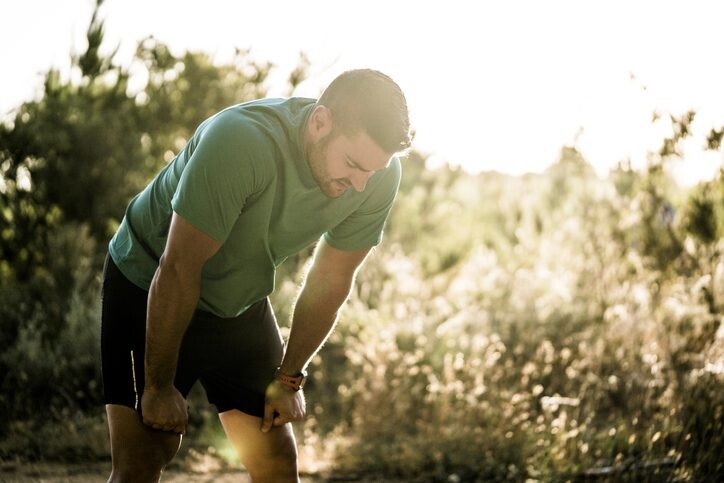
Published in the journal Addictive Behaviors, the study explored the relationship between physical activity and hangovers among 1,676 undergraduate students. All participants engaged in at least 30 minutes of moderate exercise per week and answered questions about their drinking habits, physical activity and hangover experiences.
The findings? Those who exercised more vigorously, such as through running, experienced less severe hangover symptoms. While the study only established a correlation, there are some interesting reasons why this might be the case.

Better metabolism, faster recovery
Exercise boosts metabolism, which helps the body process alcohol more efficiently. It also improves circulation, which could aid in flushing out acetaldehyde, a toxic byproduct of alcohol that contributes to hangover symptoms. This may explain why those who regularly engage in vigorous exercise report less intense hangovers.
Not a cure, but it helps
While running and regular exercise can make hangovers more bearable, it’s important to remember they aren’t a magic cure. The best way to avoid a hangover is to drink in moderation—or not at all. Recent research has shown that alcohol, once thought to have some health benefits in moderation, now offers no benefits and poses various health risks. However, if you do indulge, maintaining a regular exercise routine could make the morning after more manageable.
Exercise vs. working out hungover
One important note: while regular exercise seems to help with hangover symptoms, working out during a hangover can actually make things worse. The body is already dehydrated and stressed, so pushing yourself with a hard workout might only add to your discomfort. Instead, opt for light activities like walking or yoga to help boost your mood without adding strain.
The bottom line
While running won’t completely cure a hangover, it may reduce the severity of symptoms for those who maintain an active lifestyle. By boosting your metabolism, improving your sleep and reducing inflammation, regular exercise could help you bounce back faster after a night of drinking. But as always, the best way to avoid a hangover is to drink responsibly.
by Keeley Milne
Login to leave a comment
How to train for a marathon no matter how fit you are
If you’re planning a marathon, you’re on the road to becoming part of a select proportion of the global population – 0.01 per cent, to be exact. But that doesn’t mean running one is exclusive to the lycra-clad minority. With the right planning, training and dogged determination anyone can have a go. Here’s what you need to know if you’re gearing up to train for the race of your life.
Which marathon should I choose to run?
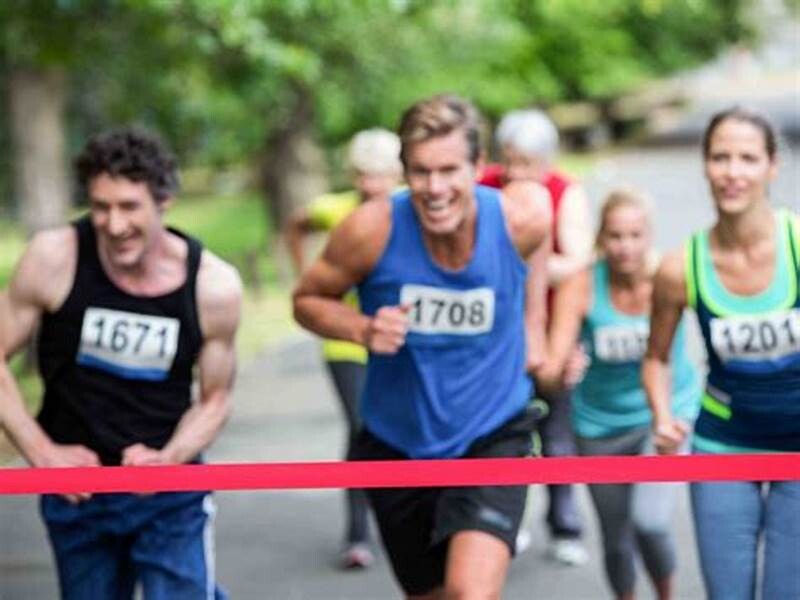
The London Marathon is special, with incredible atmospheric and historic appeal, but it’s notoriously tricky to get a place and is far from the only one to consider. All marathons are 26.2 miles, so if you’re a beginner, you might want to choose what seasoned runners call an “easy” marathon – one with a flat and paved course. While the Brighton Marathon is one of the most popular (and mostly flat) UK spring races, the Greater Manchester Marathon is known as the flattest and fastest UK option. The under-the-radar Abingdon Marathon is one of the oldest in the UK and also has a flat route – great for new runners and for those who are keen to beat their personal bests.
Around Europe, try the Berlin and Frankfurt marathons in Germany, or the Amsterdam Marathon in the Netherlands. More recently, the Valencia and Seville marathons in Spain have grown in appeal. For a great beginner list, visit coopah.com. It’s worth doing your research to ensure it’s a route you’ll enjoy (atmospheric, well populated, flat, historic… whatever piques your interest), as this will pay dividends when things get tough.

Training
How long does it take to train for a marathon?
“You need 16-to-18 weeks of training,” says Richard Pickering, a UK Athletics qualified endurance coach. “And if you’re starting from nothing, I think you need closer to six months.” This may sound like a long time to dedicate to one event but a structured plan will help you develop the strength, endurance and aerobic capacity to run longer distances. Not to mention work wonders for your overall health.
“Anyone can run a marathon if they are willing to put in the hard work,’ says Cory Wharton-Malcolm, Apple Fitness+ Trainer and author of All You Need Is Rhythm & Grit . “As long as you give yourself enough time and enough grace, you can accomplish anything.’
Ready to get running? Read on.
Five steps to preparing for a marathon
1. Follow a training plan and increase mileage gradually
“Even if it’s a simple plan, and that plan is to run X times per week or run X miles per week, it’s beneficial to have something guiding you,’ says Wharton-Malcolm. ‘It’s happened to me, without that guidance, you may overtrain causing yourself an injury that could have been avoided. And if you’re injured, you’re far less likely to fall in love with running.”
For authoritative plans online, see marathon event websites (try the Adidas Manchester Marathon or the TCS London Marathon websites) or from a chosen charity such as the British Heart Foundation. Most will consist of the key training sessions: speed work (spurts of fast running with stationary or active rest periods), tempo runs (running at a sustained “comfortably uncomfortable” pace), and long-distance slogs.
Most marathon plans will abide by the 10 per cent rule, in that they won’t increase the total run time or distance by more than 10 per cent each week – something that will reduce your risk of injury.
2. Practise long runs slowly
Long runs are your bread-and-butter sessions. They prepare your body to tolerate the distance by boosting endurance, and give you the strength to stay upright for hours. Intimidating as this sounds, the best pace for these runs is a joyously slow, conversational speed.
“People may think they need to do their marathon pace in long runs,” says Pickering, “but it’s good to run slowly because it educates the body to burn fat as fuel. This teaches it to use a bit of fat as well as glycogen when it goes faster on race day, and that extends your energy window so that you’re less likely to hit the ‘wall’.”
The caveat: running slowly means you’re going to be out for a while. With the average training plan peaking at 20 miles, you could be running for many hours. “When I did lots of long runs, I had a number of tools: listening to music, audio-guided runs, apps or audio books,” says Wharton-Malcom. “I used to run lots of routes, explore cities… You can also do long runs with friends or colleagues, or get a train somewhere and run back so it’s not the same boring route.”
3. Do regular speed work
Speed work may sound like the reserve of marathon aficionados, but it’s good for new long-distance runners too. “I think people misunderstand speed work,” says Wharton-Malcom. “The presumption is that the moment you add ‘speed’ to training, you have to run like Usain Bolt, but all ‘speed’ means is faster than the speed you’d normally be running. So if you go out for a 20-minute run, at the end of the first nine minutes, run a little faster for a minute, then at the end of the second nine minutes, run a little faster for a minute.”
Small injections of pace are a great way for novices to reap the benefits. “The idea is to find the sweet spot between ‘Ah, I can only hold on to this for 10 seconds’ and ‘I can hold on to this for 30-to-60 seconds’,” he adds.
Hill sprints are great for increasing speed. Try finding a loop with an incline that takes 30 seconds to ascend, then run it continuously for two to three lots of 10 minutes with a 90-second standing rest.
Interval work is also a speed-booster. Try three lots of three minutes at tempo pace with a 90-second standing rest. “The recovery [between intervals] is when you get your breath back and your body recirculates lactate [a by-product of intense exercise, which ultimately slows bodies down],” explains Pickering, “and this means you’re able to do more than you otherwise would.”
4. Run at marathon-pace sometimes
Every now and then, throw in some running at your chosen race pace. “You need to get used to a bit of marathon pace,” says Pickering, “but I wouldn’t put it into your programme religiously.”
Some runners like to practise marathon pace in a “build-up” race, typically a half-marathon. “It can give people confidence,” says Pickering. “Your half-marathon should be six-to-seven weeks prior to the main event, and have a strategy to ensure you’re not racing it because you need to treat it as a training run.”
5. Schedule in rest and recovery
Of course, no training plan is complete without some R&R. Rest days give your body a chance to adapt to the stresses you’ve put it through and can provide a mental break. “Active recovery” is a swanky term for taking lighter exercise such as an easy run, long walk, gentle swim, some yoga – crucial because you don’t want to do two hard sessions back-to-back. “A long run would count as a hard day, so if your long run is on Sunday, you could do an easy run such as 30-40 minutes at a conversational pace on a Monday, but don’t do anything fast until Tuesday,” says Pickering.
What about recovery tools?
Foam rollers, massage guns, ice baths – the list is long. Pickering says to keep it simple: “I would encourage foam rolling [relieving muscle tension by rolling over a foam tube] or sports massage, and they’re kind of the same thing.”
And Wharton-Malcom swears by the restorative power of a good rest: “From personal experience, sleep is our secret weapon and it’s so underrated. Getting your eight-hours-plus per night, taking power naps during the day… you can do so well with just sleeping a bit more.”
Race day
How to perform your best on race day – what to eat
“The marathon is going to be relying on carbohydrate loading [such as spaghetti, mashed potato, rice pudding], which should take place one-to-three days before an event,” explains performance nutritionist Matt Lovell. Other choices might include: root vegetables (carrots, beetroot), breads or low-fat yoghurts.
“On the day, the main goal is to keep your blood glucose as stable as possible by filling up any liver glycogen.” Which means eating a breakfast rich in slow-release carbohydrates, such as porridge, then taking on board isotonic drinks, like Lucozade Sport or coconut water, and energy gels roughly every 30-45 minutes.
How to stay focused
Even with the right fuel in your body, the going will get tough. But when you feel like you can’t do any more, there is surprisingly more in the tank than you realise.
“Sports scientists used to think we eat food, it turns into fuel within our body and, when we use it up, we stop and fall over with exhaustion,” says performance psychologist Dr Josephine Perry. “Then they did muscle biopsies to understand that, when we feel totally exhausted, we actually still have about 30 per cent energy left in the muscles.”
How do you tap into that magic 30 per cent? By staying motivated – and this ultimately comes down to finding a motivational mantra that reminds you of your goal and reason for running.
“Motivational mantras are incredibly personal – you can’t steal somebody else’s because it sounds good; it has to talk to you,’ explains Dr Perry, author of The Ten Pillars of Success. “Adults will often have their children as part of their motivational mantra – they want to make them proud, to be a good role model. If you’re doing it for a charity, it might be that.” Write your motivational mantra on your energy gel, drinks bottle or hand. “It doesn’t just need to come from you,” adds Dr Perry. “I love getting athletes’ friends and family to write messages to stick on their nutrition, so every time they take a gel out of their pocket, they’ve got a message from someone who loves them.” Perry is supporting the Threshold Sports’ Ultra 50:50 campaign, encouraging female participation in endurance running events.
Smile every mile, concludes Dr Perry: “Research shows that when you smile it reduces your perception of effort, so you’re basically tricking your brain into thinking that what you’re doing isn’t as difficult as it is.”
One thing is for sure, you’re going to be on a high for a while. “What happens for most people is they run the race and, for most of the race, they say ‘I’m never doing this again,’ says Wharton-Malcom. “Then the following morning, they think, ‘OK, what’s next?’”
What clothes should you wear for a marathon?
What you wear can also make a difference. Look for clothing made with moisture-wicking fabrics that will move sweat away from the skin, keeping you dry and comfortable. An anti-chafe stick such as Body Glide Anti-Chafe Balm is a worthy investment, or simply try some Vaseline, as it will stop any areas of the skin that might rub (under the arms, between the thighs) from getting irritated. Seamless running socks, like those from Smartwool, can also help to reduce rubbing and the risk of blisters.
Post-race recovery
What to eat and drink
Before you revel in your achievement, eat and drink something. Lovell says recovery fuel is vital: “Getting carbohydrates back into the body after a marathon is crucial. It’s a forgiving time for having lots of calories from carbohydrates and proteins, maybe as a recovery shake or a light meal such as a banana and a protein yoghurt.”
Have a drink of water with a hydration tablet or electrolyte powder to replenish fluid and electrolyte salts (magnesium, potassium, sodium) lost through sweat.
“You can have a glass of red later if you want, but your priority is to rehydrate with salts first, then focus on carbohydrate replenishment, then have some protein, and then other specialist items such as anti-inflammatories.” Choose anti-inflammatory compounds such as omega 3 and curcumin from turmeric, which you can get as a supplement, to help reduce excessive inflammation and allow for better muscle rebuilding.
Tart cherry juice – rich in antioxidants, anti-inflammatories and naturally occurring melatonin – could also be useful, with the latest research reporting that it can reduce muscle pain after a long-distance race and improve both sleep quantity and quality by five-to-six per cent. “And anything that improves blood flow such as beetroot juice, which is a good vasodilator, will help with endurance and recovery,” adds Lovell. Precision Hydration tablets are very good for heavy sweaters.
Any other other good products to help with recovery?
The post-run recovery market is a saturated one, but there are a few products worth trying. Magnesium – from lotions and bath flakes to oil sprays drinks and supplements – relaxes muscles and can prevent muscle cramps, as well as aiding recovery-boosting sleep.
Compression socks boost blood flow and therefore the removal of waste products from hardworking muscles, and have been shown to improve recovery when worn in the 48 hours after a marathon. Arnica has anti-inflammatory properties that can help speed up the healing process after a long run, and can be used as an arnica balm or soak.
by The Telegraph
Login to leave a comment
Have you tried this yoga-like remedy for enhancing athletic performance?
Whether you’re passionate about yoga, dealing with back pain, or looking to boost your athletic performance, the ELDOA technique is worth considering. This movement practice focuses on improving spine health by creating more space between joints, which helps reduce pressure and discomfort. Despite its complex name, ELDOA is simple to practice—requiring only a yoga mat and your own body, making it accessible anytime, anywhere. If Olympians and pro athletes rely on it for performance and recovery, why shouldn’t you give it a try?
How it works:
ELDOA is a French acronym that can be translated to Longitudinal (axis) Osteo-Articular Decoaptation.
There is a key distinction between yoga and ELDOA: yoga uses more fluid movements, and ELDOA uses fixed postures to target precise joints. The ELDOA technique focuses on the fascia, which is connective tissue that encases our muscles, muscle fibres and organs–basically holding us together. The technique puts tension in the lines of the fascia by elongating your spine to open spaces between bones to reduce pressure on the joint.
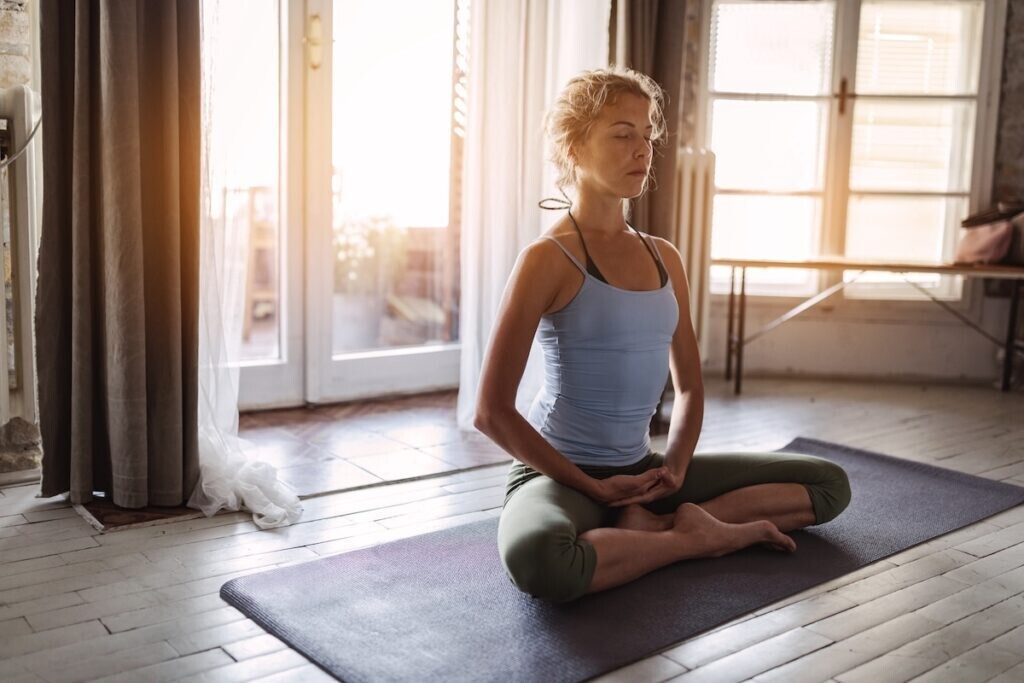
ELDOA is viewed as a proactive alternative to surgery, often used to decompress joints and alleviate pressure. This non-invasive movement technique is effective in relieving spinal disc pain, enhancing flexibility and reducing the likelihood of future injury.
How to do an ELDOA posture:
ELDOA postures definitely take some getting used to; the strange positions engage your whole body more than you’d expect, and require a lot of focus as you hold the pose. Over time, your ability to hold the positions and elongate your spine with the right intentions will improve.
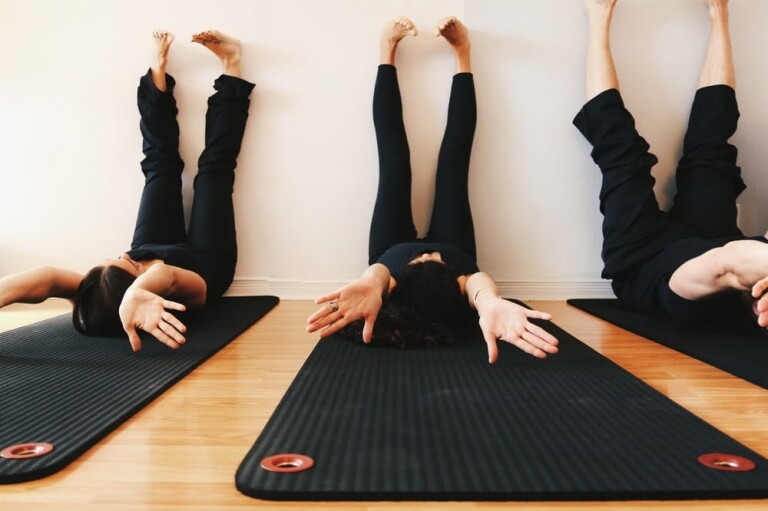
The above pose is the L2-L3 posture; it targets the fourth spacing in your lower spine, between your third and fourth lumbar vertebrae. This exercise must be performed seated on the floor, or on a slightly elevated surface if you can’t achieve the proper position.
Form a 90 degree angle with your legs, then internally rotate your legs.
Point your toes towards your chest (dorsiflexed).
Tuck you chin, straighten your spine and flatten your back.
Raise hands one at a time; externally rotate your arms so that your thumbs face back/out. Reach your palms upwards away from you.
Hold this posture for one minute. Actively focus on reaching your arms away, elongating your spine, turning your legs in and dorsiflexing your feet. Breathe throughout.
Many other ELDOA postures work to target other specific joints–there is even a position for the ribs that help with the function of your lungs. If your athletic therapist doesn’t have an ELDOA program to recommend, YouTube or online subscriptions can provide videos for you to follow along with to prompt you throughout various postures and keep you focused. It’s recommended to carry out the movements following a workout or before bed.
Other benefits:
Improved posture and healthier spinal discs
Increased range of motion
Improved athletic performance, joint mechanics, recovery, muscle tone and function
Relief of chronic pain
Increased circulation
Improved body awareness and overall wellbeing
by Cameron Ormond
Login to leave a comment
Three core-crushing yoga moves to help you cruise to a PB
Perfect for runners of all levels, these core-focused poses will strengthen and stabilize your body, helping you confidently hit your stride.
Runners often focus on improving mileage and speed work, neglecting a crucial aspect that can make a world of difference on race day: core strength. We have you covered with three simple yoga poses that will not only help in building a rock-solid core, but also promote better posture and breathing, critical for sustaining long runs and improving overall endurance.
While it’s easy to think that the legs do all the work, a strong core is the foundation that supports every stride, helping to improve balance, stability and overall efficiency. Incorporating core-focused yoga moves into your routine can help you build the strength and flexibility you need to stay injury-free and reach new personal bests.
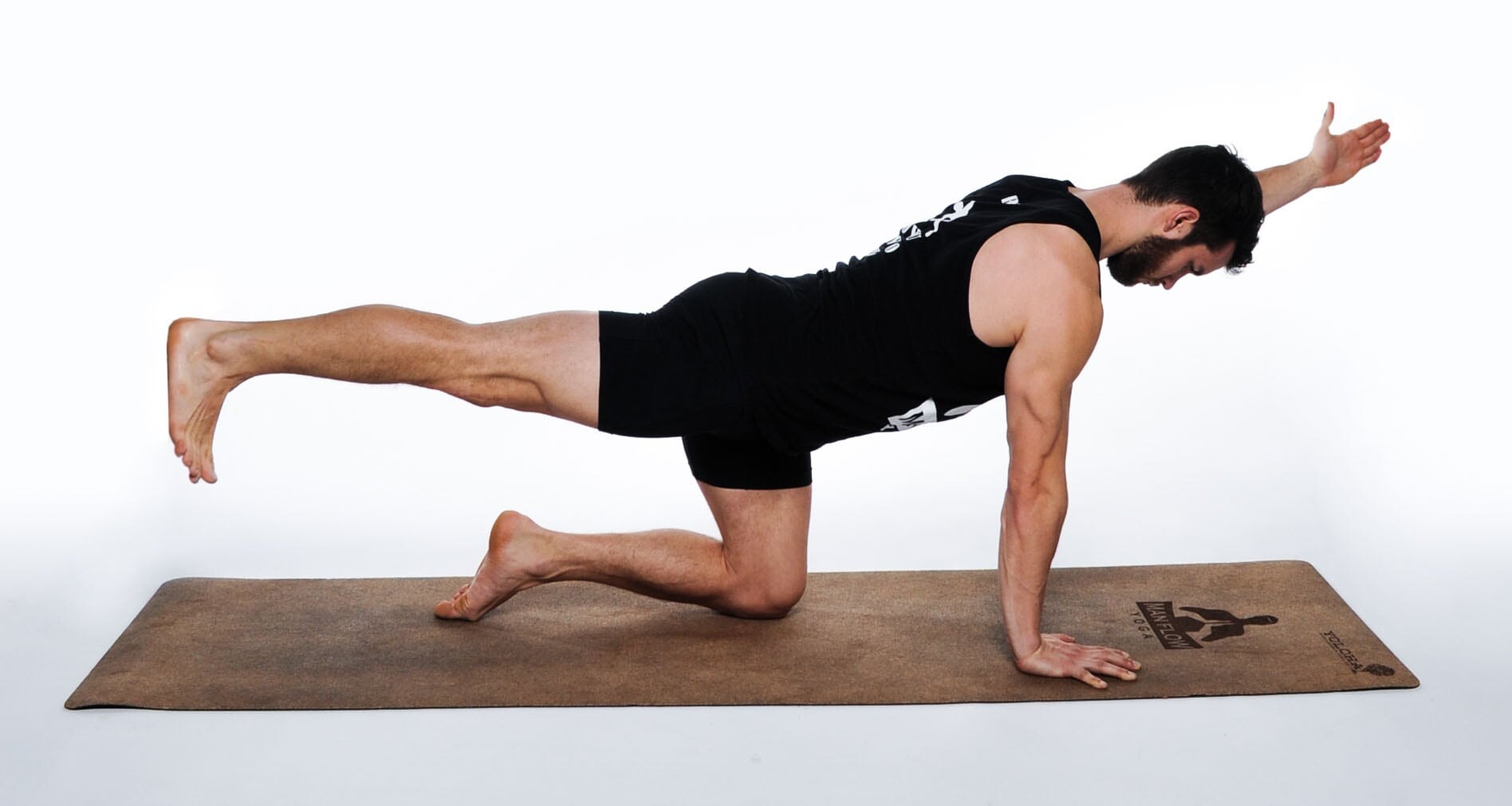
1.- Side plank
Plank pose and variations strengthen obliques and stabilizer muscles, essential for maintaining balance and keeping upright posture during those tough final miles.

Lie on your side with legs stacked, one on top of the other.
Place your elbow directly under your shoulder to prop your upper body up., with your forearm along the ground
Lift your hips off the ground, forming a straight line from head to feet and tightening your belly and glute muscles.
Hold for 10-30 seconds, then switch sides. If this move feels too challenging, try the move from your knees, keeping your hip on the floor.
2.- Boat pose
This pose engages the deep core muscles, improving posture and endurance.
Begin sitting on the floor with knees bent and feet flat. Place your hands behind your knees and lift your chest, engaging the back muscles as you inhale.
On an exhale, back slightly, lifting your feet off the ground so your shins are parallel to the floor.
Keep your hands where they are, or for an added challenge, extend your arms forward, being sure to keep your back straight. Squeeze your inner thighs together as you continue to press your chest upward.
Hold for 1o-30 seconds, then lower your legs. Repeat several times.
3.- Bird dog pose
Bird dog strengthens the core muscles, while also engaging the back and glutes, improving overall stability and balance, which are essential for maintaining good running form.
Begin on your hands and knees in a tabletop position, with your wrists directly under your shoulders and knees under your hips.
Engage your core and extend your right arm forward while simultaneously extending your left leg straight back.
Keep your hips square to the ground and avoid arching your back.
Hold the position for a few seconds while keeping your core tight and your body aligned.
Slowly return to the starting position and repeat on the opposite side (left arm and right leg); aim for five-12 repetitions on each side.
When incorporating yoga poses for strength, stay focused on maintaining form and activating key muscle groups rather than performing more repetitions or increasingly intense variations. Feel free to reduce the time or suggested repeats of each pose to what you can maintain without compromising form. These stretches are gentle enough to add to your routine after any training session, but remember to pay attention to what your body is signaling to you, and back off or adjust if you feel any pain or numbness.
by Keeley Milne
Login to leave a comment
Is six weeks enough time to kickstart your half-marathon training?
We get it—summer flies by in the blink of an eye. One minute you’re convinced by a friend to sign up for a fall half-marathon, and the next, you’re panicking because the race is less than six weeks away. While training for a half-marathon in six weeks is possible, there are some things to consider to avoid injury and make it to race day feeling confident. Here’s what you need to know to make the most of your six-week training window.
Assess your starting point
Typically, people preparing for a half-marathon give themselves 12-16 weeks of training before tackling the 21.1 km distance. More experienced runners, already with a solid base, may be able to prepare in six to eight weeks. If you’re already running a few times a week and can comfortably complete a 10K, you have a solid starting point. However, if you’re new to running or returning after a long break, six weeks will be challenging and could increase your risk of injury if you attempt to build mileage too quickly.
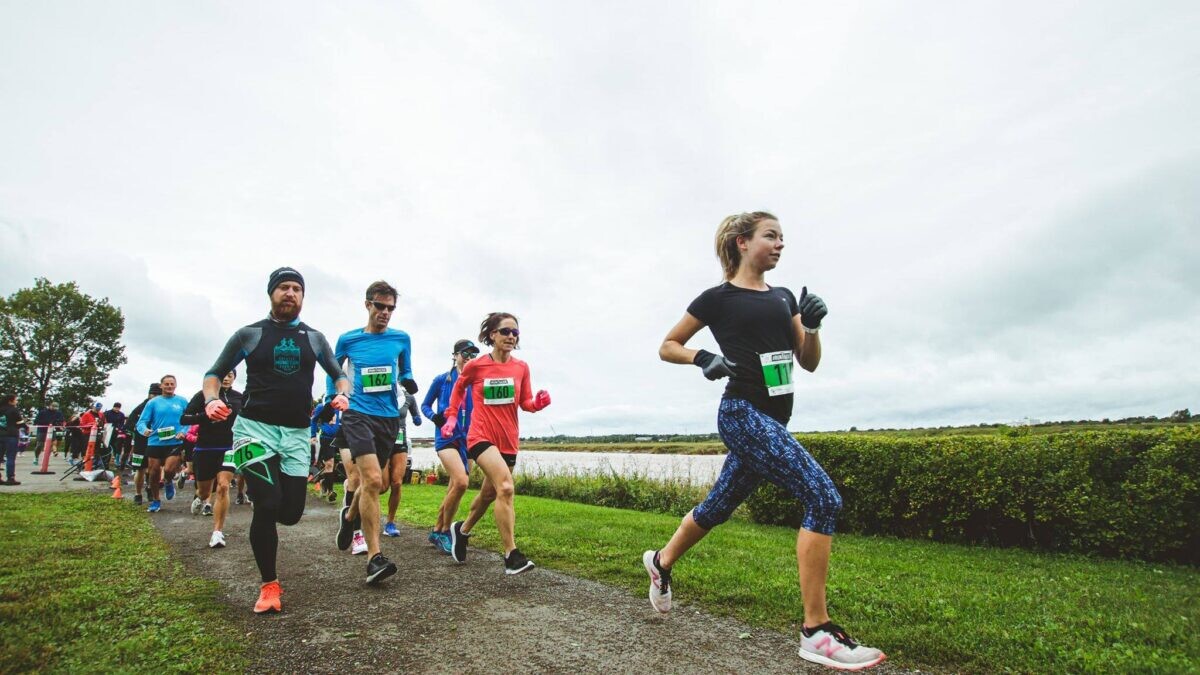
Follow the plan
If you’re starting from scratch, run three times a week for the first two weeks, with long runs of seven to eight kilometres. In weeks three and four, gradually increase your runs by a kilometre or two, and add a fourth run to your weekly training schedule. Your long runs during these weeks should be between 10 and 15 kilometres.
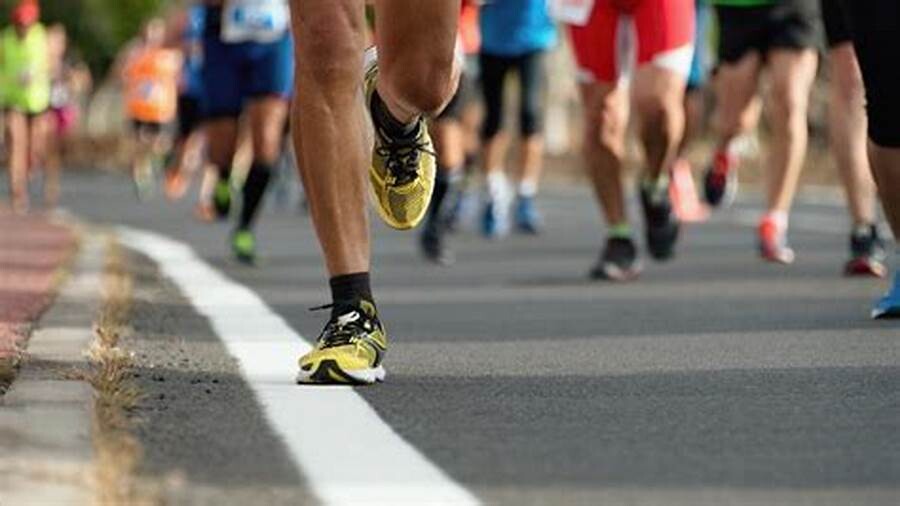
Weeks five and six are all about maintaining your fitness and staying healthy for race day. Your Week Five long run should be your longest—15-17 km—while keeping the other three runs short (five to eight kilometres), to avoid overtraining. In the sixth and final week, focus on proper rest and keeping your legs fresh for race day. Do two shorter runs leading up to the half-marathon and a light, three- to five-km shakeout run the day before the race.
Take care of your body
With such a tight training window, it’s crucial to listen to your body and maximize the effectiveness of each run. Incorporate rest days between runs to allow for proper recovery, and ensure you’re getting adequate sleep. Consider adding cross-training activities like swimming or cycling to maintain fitness without the impact of running on your rest days. Additionally, activities like stretching, foam rolling and yoga can all help keep your muscles loose and reduce the risk of injury.
Manage your expectations
A six-week training plan isn’t ideal, but it’s far better than going in unprepared and expecting a strong result. As with any skill or sport, the more you practise and train, the better prepared you’ll be for what lies ahead. It’s important to be realistic about your goals and avoid setting overly high expectations. This might not be the race where you run a personal best, but it can still be a rewarding experience. Focus on finishing strong and injury-free, rather than pushing for a specific time.
by Marley Dickinson
Login to leave a comment
This HIIT workout will boost your endurance and strength
How can you possibly fit in a strength workout after squeezing your daily mileage or endurance minutes into an already-busy schedule? HIIT (high intensity interval training) workouts are the perfect way to kill two birds with one stone; the exercises target various muscle groups that help provide stability and strength while running, while the intensity of the movements is very effective in getting that heart rate up. All you need is your yoga mat, so let’s get started.
The workout is a Tabata; it will be structured with eight sets of eight exercises, with 20 seconds of work and 10 seconds of rest. Each round will last four minutes; take one minute of rest between sets.
The exercise should be done with a very high effort–you’re only going for a short period. If you’re out of breath, breaking a sweat and looking forward to the rest interval, you’re doing it right. You’ll be done your full high-intensity workout in 40 minutes, and the excitement of it will make it fly by.
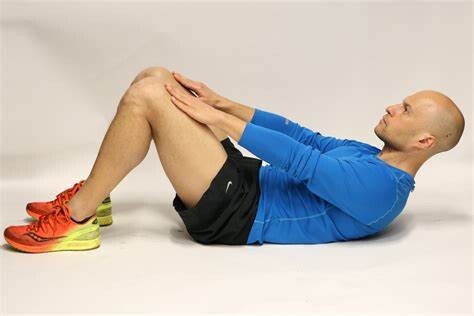
Exercise 1: jumping jacks
Begin with your feet slightly apart and your arms at your sides. Jump and widen your stance to be a bit wider than shoulder-width, while swinging your arms from your sides to straight above your head. Jump again to tuck everything back into the same starting position and repeat. Keep the movement quick and rigid, and try to engage your core.
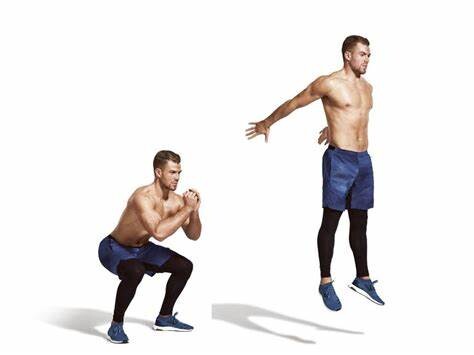
Exercise 2: plank walk-out to mountain climbers
Standing at the end of your yoga mat, bend forward so your hands are on the mat in front of you (bending your knees as little as possible), and walk your hands away from your feet until you are in a plank position. Do four mountain climbers (two per side), tucking your knee in toward your opposite shoulder while trying to keep your butt down. Keeping your core tight, walk your hands back toward your feet and stand up. Repeat.
Exercise 3: thigh-rub crunches
Lie on your back with your knees bent and feet on the floor, as if to do regular crunches, but rest your palms on your thighs. Slide your hands up your thighs toward your knees, applying pressure against your legs. Push harder with your arms to engage your core more, and lower back down at a controlled pace.
Exercise 4: air squat to jump squat
Begin standing with your feet shoulder-width apart. Complete a squat, stopping before your knees reach 90 degrees. Return to standing, tucking your pelvis at the top. Lower into another squat and do a jump squat, swinging your arms back to power you off the ground–extend your legs in the air if you can. Land with your knees slightly bent. Repeat the air squat-jump squat cycle.
Exercise 5: bear taps
Begin on your hands and knees, both shoulder-width apart. Tucking your shoes under your feet, lift your knees just slightly off the ground. Keeping your core rigid, alternate tapping your hands to the opposite shoulder. Try not to rotate your spine–pretend you have a cup of water on your back that you can’t tip over.
Exercise 6: quick switches
Find a slightly elevated surface, such as a box or a stair. Stand with one foot in front, on the higher surface, and one foot under you, on the floor. Jump to switch the positions of your feet, trying to extend your legs in the air. Continue alternating swiftly, tapping lightly.
Exercise 7: push-ups
You have three options for pushups: regular push-ups, knee push-ups or elevated-surface push-ups (so that your arms are elevated and your feet are on the floor; you should begin on a diagonal). Whatever variation is best for you, make sure you keep your core tight–as if your spine is a rigid board that cannot bend. Keep your elbows narrow, as close to the sides of your body as possible. Lower your body slowly, and power through the movement when pushing up.
Exercise 8: reverse lunges
Begin standing with your pelvis tucked beneath you. Step one leg back and lower your back knee until it almost reaches the floor. Your front knee should be directly above your front ankle. Push through your front leg to stand back up (do this controlled–don’t throw your weight forward) and switch legs to repeat.
Once you’ve completed your first set, take your one minute of rest, and repeat. Remember: having good form is more important than going fast. Be sure to hydrate and fuel well when you’re done.
by Cameron Ormond
Login to leave a comment
How to go from your couch to a 5K
Getting off the couch is the hardest part of running
Getting off your couch and out the door is the hardest part of running. The steps from there might seem overwhelming, especially if you’re running for the first time, but if you focus on taking things slowly and listening to your body, it’ll be easier than you think. Don’t hold yourself back just because it feels tough at first–set that 5K goal and work toward it, even if it means you start by walking. Here’s the best way to get into running to make it enjoyable, safe and rewarding.
Start short and easy
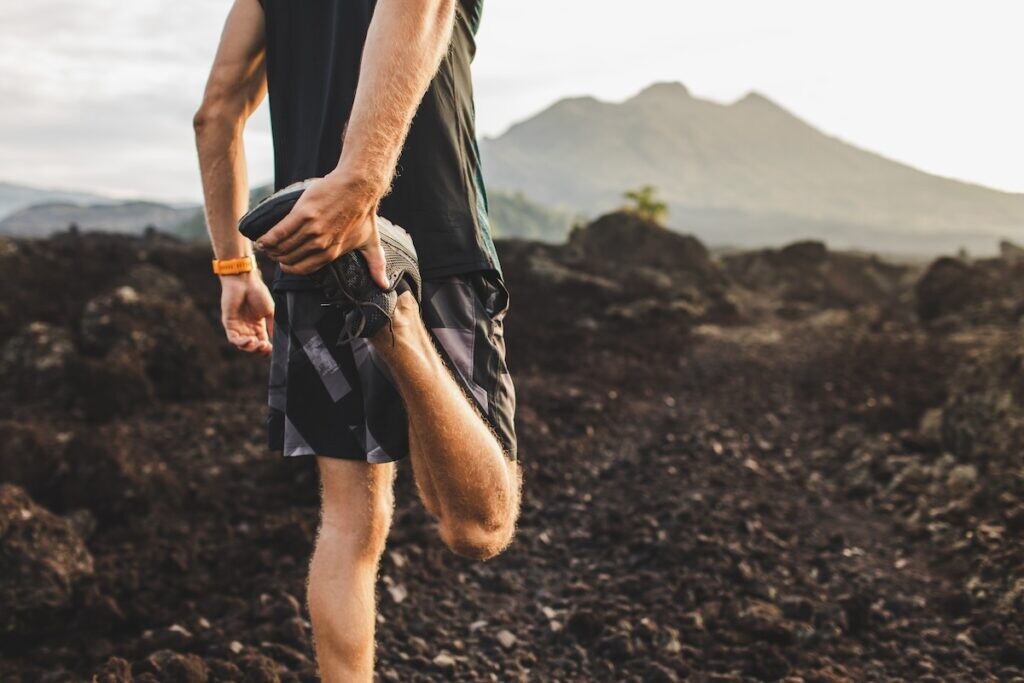
Warm up with a five-minute walk before starting your walk/run–one minute of running, then one minute of walking. Aim to repeat this cycle 10 times. Walk a five-minute cooldown, bringing your entire workout to 30 minutes. Try this three times a week (with at least one day off between runs), keeping it at a conversational pace; take breaks or walk for longer when you need to.
Increase a little each week

Increase your ratio of walking to running every other run (2:1, 3:1, 4:1, etc.), repeating until you reach 20 minutes of workout. Once you complete two 10 minute runs, shorten your warmup and cooldown to two minutes each, so you can continue increasing your runs without exceeding 30 minutes. After completing two sets of 15-minute run, one-minute walk, you can switch things up by trying to eliminate your walk interval and run for a full 2o minutes straight.
Once you feel comfortable running consistently without needing to walk, you can begin to increase your total run volume by 10 per cent each week. This may mean keeping two runs between 20 to 30 minutes, and building up one run as your designated weekly long run. You’ll be hitting that 5K mark before you know it.
Take care of your body
Set a goal to do strength training workouts on your non-run days to support your muscles and joints when you hit the road. Yoga, Pilates and bodyweight exercises are easy techniques to try without even leaving your house. Don’t forget to head to a specialty running shoe store to get new running shoes that are perfect your specific feet–this will make you feel even better when setting out to reach your 5K goal.
by Cameron Ormond
Login to leave a comment
Post-race blues: how to fight back
You’ve spent months training and preparing for your race–and then the big day comes along, flies by, and is gone before you know it. Now what? Going from intense feelings of anticipation building up to your major goal, to suddenly relaxing and wondering what your next step is, can feel like a massive letdown.
Even if you are ecstatic about your performance, you may still find yourself batting the post-competition blues.
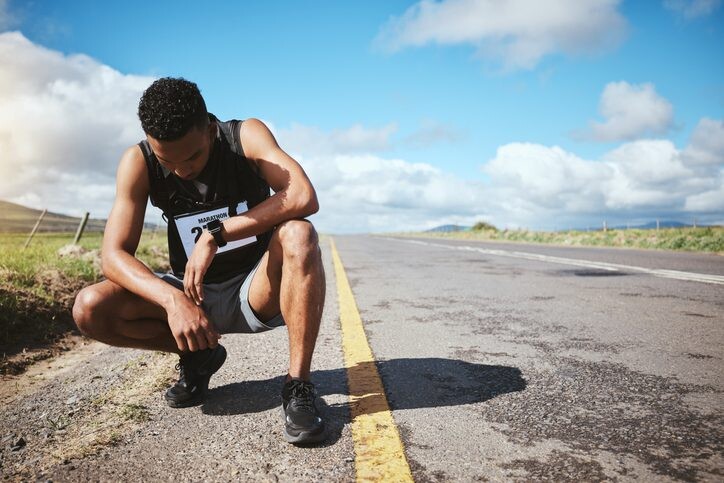
Try to remember that you are not alone. This is something even the most elite and experienced athletes struggle with. Especially in running, where so much mental resilience is required to push yourself, your mind and body can really take you on an emotional rollercoaster. Those rest days that follow competition to allow your body to recover physically, especially after a marathon, can be more mentally strenuous than you imagined. Post-race depression can be characterized by fatigue, lack of appetite and motivation, mood swings or insomnia, and being prepared for it is the best thing you can do.
Create a plan
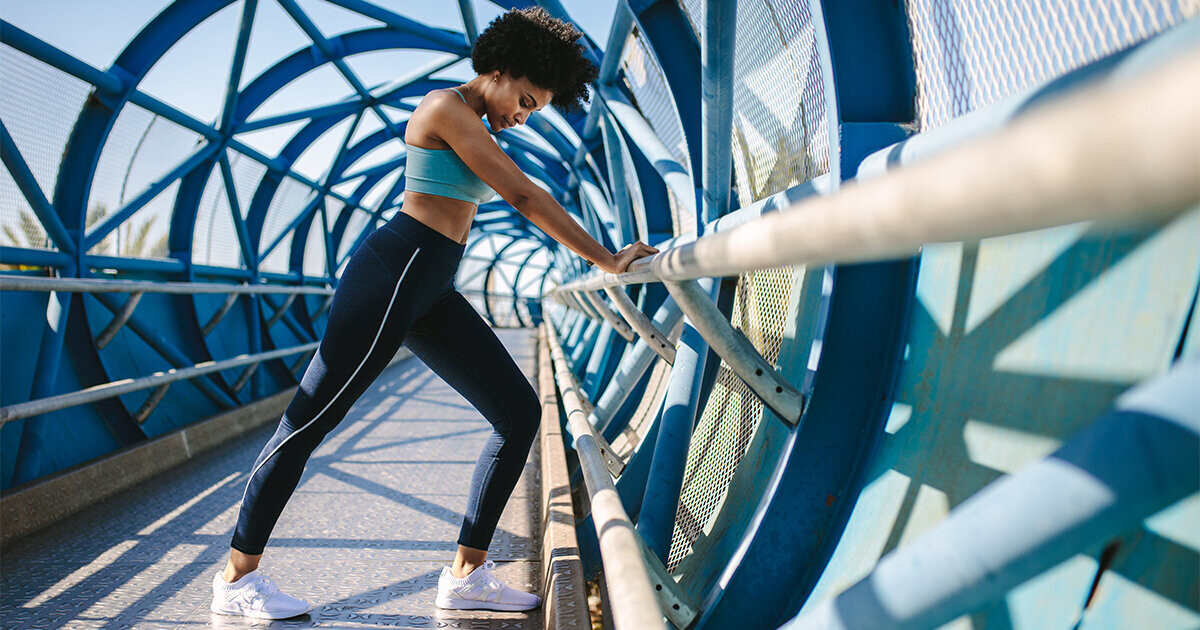
Making a plan ahead of time for your return to training will help you stay accountable, even if you aren’t working toward anything specific. Make sure to give yourself those rest days to allow yourself to recover and heal, but it doesn’t have to (and probably shouldn’t) entail lying around doing nothing. A light walk, bike ride, or signing up for a yoga class can all be good opportunities to get in some active recovery while being social–without the focus of gaining fitness.
Set a goal
What is the next thing you want to accomplish? If you review your big performance, think about what went right, and what didn’t. You can keep working to meet your original target, set the bar higher or switch gears to try a new distance. Committing to achieving this next goal will give you the feeling of purpose and motivate you again.
To top that: pre-emptively commit to that next step, and avoid staring at an empty calendar. Overthinking and criticizing your recent performance will just amplify that low you are already experiencing. Looking ahead to the next phase of your journey as a runner and not treating this achievement as the end goal will soften that post-race crash–leaving you feeling like yourself and ready to get back to work.
Stay busy
If your training has kept your calendar full during the past few months, fill it with something else to shift your focus during your recovery period. Aim to do something you have recently had to turn down since training took precedence. This might be heading to your local ice cream shop, spending the day at the beach or grabbing a drink with a friend.
Another tip: try not to take things too seriously. You are allowed to (and supposed to) have fun with your running journey. Once you feel more recovered, drag your friends out for a leisurely local race, or even just a fun jog.
Talk about it
Don’t struggle silently. If you are dealing with the blues, your training partner may be feeling the same way. Reaching out to friends and family will reassure you that you are supported and have a purpose, plus occupying your time and mind until you feel like yourself again.
by Cameron Ormond
Login to leave a comment
This Runner Learned the Importance of Easy Days After Trying to Train Hard for Too Long
“Running has made me a better thinker—I’m able to solve problems when I’m on a run, and often find new and creative solutions to or perspectives on something that’s bothering me."
I played sports (baseball, basketball, lacrosse) growing up, but running was always used as a form of punishment. I didn’t understand the people who “enjoyed” running or would willingly run. I also didn’t want anything to do with running because I was too scared to lose any of the muscle I worked so hard to put on. (I picked up weightlifting in college.)
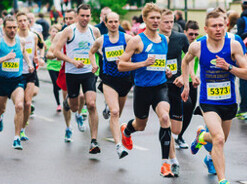
That’s when running became the perfect escape for me physically and mentally. Some of my best thoughts came from mid-afternoon runs around the suburbs of Irvine, California. While I realized that I wasn’t cut out for med school, I will say that my personal statement would have been a lot worse had I not gotten some creative inspiration on my runs.
When I first started running, I didn’t really know how to run—so I downloaded the first (good) app I could find—the Nike Run Club app. I really liked it because they had in-app coaches to help guide you through the run, plus tips on how to gauge my intensity proved helpful.
Prior to that, I would just run as fast as I could for three to four miles with zero periodization on a day-to-day or week-to-week basis. I didn’t do any races, but I did a self-imposed “5K every day” challenge in November 2020. The goal was to get faster by the end of November. I went out and ran a 5K every day at max effort, expecting to get faster by day three. Instead, I had a pretty big regression, so it wasn’t the best training method for me.
I think most beginners think that doing more of the same thing will get them to become better, when in reality periodization is what actually compounds progress the most. I thought I needed to be running at a high intensity daily. It took me two years until I realized that I only needed a few max effort sessions per week, and to simply focus on making my hard days hard and easy days easy.
I’ve also noticed that many former high school/college athletes get into running and their biggest Achilles’ heel is making easy days just as hard as hard days, and I totally get that. Running three miles at a 10-minute pace when I know I can be cooking some sub-seven-minute miles is not something my brain nor body were used to when I started.
In 2020, I decided to run an impromptu half marathon, which was my proudest running moment. To the Allen who had never hit double-digit mileage in one run, 13.1 miles was simply a mythological number.
For that run, I hadn’t followed any real training beforehand, nor did I have any gels or water (biggest mistake I made that day). It was just me, my phone, some AirPods, and my new bright orange Nike AlphaFlys. Needless to say, my first half marathon ended with me cramping and locking up outside of the Chipotle that was less than a mile from my house. I wouldn’t run more than 10 miles again until March 2022.
I almost entirely stopped running in April 2021 when I got back to the gym. However, running found me again when I signed up to participate in the Birthday Series’ 131-mile Relay Race from Montauk, New York to Times Square in June 2023. I ran 25 to 30 miles in the race. I went from running ten to 20 miles a week inconsistently (from March to May 2023) to 50-plus miles a week later that summer.
Most recently, this past April, I ran my first marathon—the Big Sur International Marathon. I was doing well and on target for a 3:15 marathon until my entire body started cramping at the end of mile 22 and my split went from a 7:30 pace to a 15-minute pace. I remember getting to a 1.5-mile enclave (from mile 23 to 24) and that was the longest 1.5 miles of my life.
Those miles were never ending, which was such a juxtaposition since the miles before it felt like they were just breezing by. I remember fully stopping and thinking to myself: “I might have to lie down in this bush,” because my legs were writhing in pain from the cramps.
At the peak of training for that marathon, I was running five days a week in Central Park and logging 50-plus miles on the rolling hills, but this still wasn’t enough to get me fully acclimated to the rolling hills of Big Sur!
But, I am definitely ready for more races in the future. I plan to run Big Sur in 2025, as I will be seeking some redemption, but I’d also like to do shorter races in between.
At this point in my life, I enjoy yoga, Pilates, running, powerlifting, and bodybuilding. Overall though, running has made me a better thinker—I’m able to solve problems when I’m on a run, and often find new and creative solutions to or perspectives on something that’s bothering me. For that, I’m grateful!
But then things changed when I didn’t have a chance to go to the gym in 2020, so I finally gave running a chance. I was also caught in the post-grad bubble of despair, and I wasn’t sure where my life was heading, so running seemed like a good way to pass the time.
My entire undergrad experience was defined by pre-med courses and a little more than 2,000 hours of sports medicine internship. Naturally, applying to graduate/medical schools was the obvious choice, but really I was applying because it was the only socially acceptable form of procrastination. (A pretty poor use of time considering some of the med school applications felt more like a job than the jobs I was working.)
During that time, I had lost two part-time jobs: demoing energy drinks at various gyms around Los Angeles and modeling. So, I was back living at home with no job, spending some 10 hours a day (wish I was kidding) on trying to craft the perfect personal statement for my med school application. I really just needed to do something for my body.
These tips have made my running journey a success:
1. Take it easy
I never liked running up until a few years ago, because I always equated “running” to “sprinting” because that was the punishment we had if we missed too many free throws in a game or missed a ground ball during lacrosse practice.
It was when I joined a run club a year ago that I realized running is not just sprinting, and can be an enjoyable, social activity with or without the presence of others.
2. Be okay with failure
You can do everything correctly during training and still not get the desired results. The benefit of running is that you can make mistakes without any major or lasting consequences. You can then try to apply that philosophy to other areas of your life.
3. Develop an athlete mentality
Whether or not you were an athlete growing up, the deal you make with yourself when you start running is that you become an athlete. If you want the opportunity to improve then you must start treating yourself with respect—like with good nutrition, rest, and health check-ups. Whether you want to run faster, further, more frequently, or just be able to start running at the drop of a hat, you need to give your body the respect it deserves, because running can quickly expose the holes in your health.
4. Invest in good shoes
Get a decent pair of shoes that can handle lots of mileage. Don’t get the most expensive shoe you see online thinking it will make you a better runner—because while it might feel that way, those effects are inflated.
5. Enlist support
Follow a program, an app, a coach, or find a running buddy. If none of those suit you, join a run club! Run clubs really help making running enjoyable with the added benefit of having built-in accountability. You likely know when and where the run is and all you have to do is show up. (One run club I like is Endorphins Running.)
6. Keep an open mind
If you are trying to better yourself and your health, keep an open mind when trying new things. If you think of your health more as a philosophy instead of a rigid set of rules, you will learn that you can start to take ideas from the things you enjoy and mold your own version of health that’s sustainable.
Allen’s Must-Have Gear
→ Normatec 3 Legs: I use these after every long run and occasionally before bed. It just feels really good to get your leg squeezed after a hard workout and it usually forces me to relax (which is great before bedtime).
→ Mito Red Light: I try my best to do everything I can to prevent injury. I’ll use my red light device at home on any areas that’ve been nagging me, as well as a few focus areas as a way to warm up. I typically do five minutes on each leg before a long run.
→ Hoka Mach 6: These have been my workhorse shoes the past few months (almost at 200 miles already on a pair). Love them for track workouts and long runs. They just get the job done.
Login to leave a comment
How to get back into speedwork after your half-marathon
Well, you’ve done it—you’ve completed a half-marathon! After a well-deserved few days or a week off, you’re probably already planning your next race. While it’s good to be enthusiastic, stepping back into speedwork after a half-marathon can be tricky. It’s crucial to ensure you’re doing the right workouts to avoid injury or overtraining.
Let your body recover
After running a half-marathon, it’s essential to give your body adequate time to recover. The amount of recovery time varies among runners, but at least one or two days off all exercise is recommended, regardless of whether you are a beginner or a seasoned veteran. For runners coming off their first half, it could take at least a week to fully recover. Pay attention to any lingering soreness or fatigue. If you’re still feeling sore or overly tired, extend your recovery period for a few more days.

Ease back into things
The easiest way to get injured is by overdoing an activity while your body is still sore. When it’s time to begin running again, start with a gradual re-introduction. Begin with short, easy runs, maybe every other day, and slowly increase the distance and intensity. This is the best and safest way to regain your fitness so you can resume your regular weekly programming. If you feel you’re losing fitness but aren’t ready to start running yet, activities like swimming, cycling, brisk walking or yoga can help you build strength and endurance while aiding in recovery.
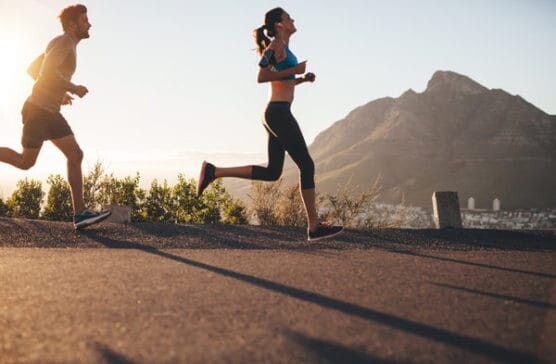
Before you begin your first couple of speed sessions post-race, you’ll want to have built your weekly mileage back up to around 40-50 per cent of your regular training load. For most runners, this can take two to four weeks. Doing this also builds up your aerobic endurance, providing a solid base for when you resume speedwork. After a week or so of running post-half-marathon, start incorporating strides into the end of your easy runs. Strides are short, controlled (20-30 seconds) bursts of speed that help re-introduce your legs to faster paces without the intensity of a full speed workout.
Start small
As tempting as it might be to immediately pick up where you left off with speed workouts, starting with shorter, interval-based sessions is the easiest and most effective way to re-introduce speedwork into your training. You can gradually increase the duration and intensity as you progress.
Here are some easy interval sessions to get your body acclimated to speedwork again.
five reps of 2 mins @ 10K pace with 90 seconds jog rest.
three reps of 1K @ half-marathon pace with two minutes rest
8-10 reps of 30 seconds on, 60 seconds jog.
by Marley Dickinson
Login to leave a comment
How to Reverse Taper to Build Your Mileage Back Up After a Race
Two run coaches offer details for between-race training.While training for a half marathon or marathon is anything but easy, following a well-designed program is pretty straightforward. You ramp up your mileage when the program says so, mix in speed work and intervals as instructed, and taper volume and intensity (sometimes begrudgingly) when the schedule dictates.
But, what happens after you check off that final “Race Day!” box on your calendar and float into the no man’s land between training programs? You’re tired and need to rest, but the idea of unstructured time off makes you antsy. Plus, your next race isn’t that far off. Following a “reverse taper” or “tapering up” allows you to bridge the space between events. The idea of the reverse taper is to gradually reintroduce running and increase volume while still prioritizing rest and recovery.
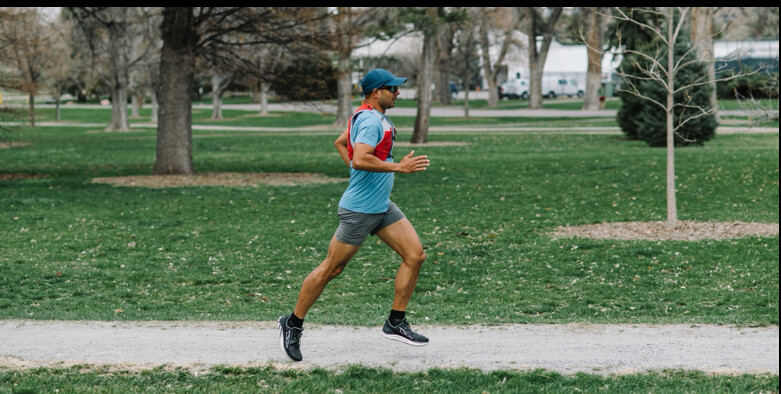
To better understand the logic behind tapering up, down, and in reverse, we spoke with Jessie Zapotechne, a coach with Adidas Runners in New York City and the founder of Girls Run NYC, and Raj Hathiramani, certified running coach at Mile High Run Club in New York City. Both are seasoned marathoners who have designed training programs and coached countless athletes through the ebbs and flows of race prep and recovery. Here’s what to know.
Understanding the Reverse Taper
The reverse taper is different from simply increasing volume to prepare for a race. When you’re in the midst of training and following a training plan, “weekly mileage increases are a gentle, rolling progression,” Hathiramani says. This approach compounds strength and endurance as the body adapts to new and increased training demands in order to reach a specific distance and pace.
Postrace, however, you’re working with a different baseline. “Racing wears down muscles, depletes glycogen, and suppresses your immune system,” Hathiramani says. Recovery—both physical and mental—should be your number-one priority.
“For longer races, this can include several days or a week of full rest before cross-training and resuming running, and for shorter or lower-effort races, you can focus on active recovery and cross-training with a quicker return to running,” Hathiramani says.
If you’re worried about losing all of the progress you made during training, don’t be. “Our fitness does not diminish as drastically as we think with an extended period of rest. Our bodies adapt to ‘defend’ our fitness level,” Hathiramani adds.
When you feel rested and ready to jump back in, you can start with some short, unstructured runs to see how you feel. (Don’t be afraid to shorten or bail on a workout if you’re feeling fatigued.)
Unlike a regular taper within training plans, there are fewer agreed upon rules about how to train without a specific goal or race plan. While you can use your previous training for guidance, Hathiramani emphasizes that this can be “tricky,” as the right approach depends upon your experience, training history, and distance of your last race.
“Generally, it’s fair to say after a rest period following a race, you can build back from the end of your base building phase,” he says. You don’t need to start at week one, but you also shouldn’t dive back into peak training.
Consider picking a week from the early-to-middle of the training plan as your reverse taper starting point. “It’s usually six to eight weeks into a [marathon] training cycle,” Hathiramani says.
6 Reverse Taper Tips
To taper up like a pro, and to avoid injuries and overtraining, consider the following tips and mistakes to avoid. 1. Progress Slow(er than Usual)
A weekly mileage increase of 10 to 20 percent is standard for most training plans, but remember that when you start a reverse taper, you’re not simply building mileage, you’re recovering. It’s okay to keep your volume the same from one week to the next or even reduce it, if needed.
2. Honor Rest Days
“A common mistake that I’ve seen athletes make is to skip a rest day because they are feeling good,” Zapotechne says. “This results in overtraining or feeling fatigued when it is time for them to continue on with the next planned workouts.”
If you crave movement on a rest day, consider an activity like restorative yoga or walking.
3. Don’t Dismiss Sharp or Persistent Pain
“Increased mileage will mean you are using more energy and thus need appropriate recovery, nutrition, and sleep. It is normal to feel more sore, tired, and hungry,” Hathiramani says. But anything more intense could signal injury. “A red flag is any sharp pain or persisting ache that gets worse when you run or is above a 4 out of 10 on a pain scale.” If you experience this kind of discomfort, see a doctor.
4. Keep Easy Runs Easy
“Easy runs coupled with intentional recovery sessions (e.g., stretching, mobility, preventative physical therapy, and sports massage) help achieve weekly mileage while letting your body regain strength after harder efforts,” Hathiramani says.
Use the talk test to keep your exertion easy and, if necessary, ignore your watch.
5. Don’t Overdo It With Interval Training
When you’re not yet on a training plan and are starting your reverse taper, Hathiramani suggests refraining from specialty runs, such as speed work. “For most runners, one interval training session a week is most effective to balance improving endurance with staying injury-free,” he says.
Save intervals, fartlek, and other speed runs for when you’re back on an official training plan.
6. Recover as Hard as You Train
“More mileage means more recovery and more sleep,” Hathiramani says. “Rest is important to maintain good mental health and optimal performance.” So, if you’re waking up before dawn to get in your morning run before the day starts, make sure you’re hitting the sack early, too.
A Refresher on the Traditional Taper
Reverse tapers and traditional tapers have equal importance. “Tapering,” or reducing your running volume and intensity in the days and weeks leading up to a race, is a very intentional race-prep strategy. Because whether or not you feel it (and you probably do feel it), your body has taken a hit, thanks to all those long runs, interval workouts, and tempo runs. “Tapering allows your body’s energy, strength, and health to return to optimal levels,” Hathiramani says.
Every taper looks a little different based on the type of race, the length and design of the training program, and how an athlete responds to training. “Most marathon plans call for a three-week taper and a 20 to 30 percent reduction in mileage each of those weeks, with little or no training faster than your race goal pace,” Hathiramani says.
A half marathon program may include just two weeks of tapering, and, if you’re training for a 10K, you might start cutting back a week to 10 days before race day.
During a training plan, after so many weeks of steadily accumulating more miles and tougher workouts, it can be surprisingly challenging to pump the breaks. “I feel I’m a better person in life when I’ve been able to go out and get my endorphins from running,” Zapotechne says. “Then taper time comes, and I have fewer runs, and they are shorter. This can often build up a lot of anxiety, and I’ve got energy now that does not have a place to be released.”
Here are a few tips to help round out your knowledge about the reverse and traditional taper:
1. Don’t Swap Running for Other Workouts
“In the past, I’ve made the mistake of deciding that, since I’m not running, I’ll go do that boxing class or other random workout that I’ve been meaning to do, and the result is then that I’m sore and I’ve overworked muscles that I was supposed to be resting,” Zapotechne says.
A taper isn’t the time to build muscle or experiment with different forms of exercise. If you feel like you have to do something, channel your energy toward active recovery practices, like mobility work, stretching, and meditation.
2. Don’t Try New Shoes (or Gear, Nutrition, or Routes)
The “nothing new on race day” adage should probably be amended to read, “Nothing new in the weeks leading up to race day.” By the time you get to a taper, you’ll likely have a formula that works for you—stick with it. Any adverse reactions to changes in your gear or habits (blisters and GI distress, anyone?) will rob you of quality recovery time.
3. Don’t Play “Catch-Up”
It’s normal for runners to miss an occasional workout on a training plan or feel like they didn’t work hard enough to prepare for a race. The taper period is not the time to play catch-up. “I coach athletes (and remind myself) that you cannot increase your fitness by doing more intense workouts the week before a race,” Zapotechne says. “You have to trust that what you have done is enough and that, ultimately, rest is your friend.”
by Runner’s World
Login to leave a comment
Three simple core exercises every runner should make time for
Every runner knows core strength is one of the foundations for success in their sport. From helping you to stay upright while running to protecting your spine, the benefits of a strong core extend beyond just helping prevent injury.
With a myriad of core workouts available on the web, it’s easy to get overwhelmed when deciding how to target this massive muscle group. We’ve compiled four simple, yet effective, workouts that you can fit in before or after your run in just a few extra minutes.
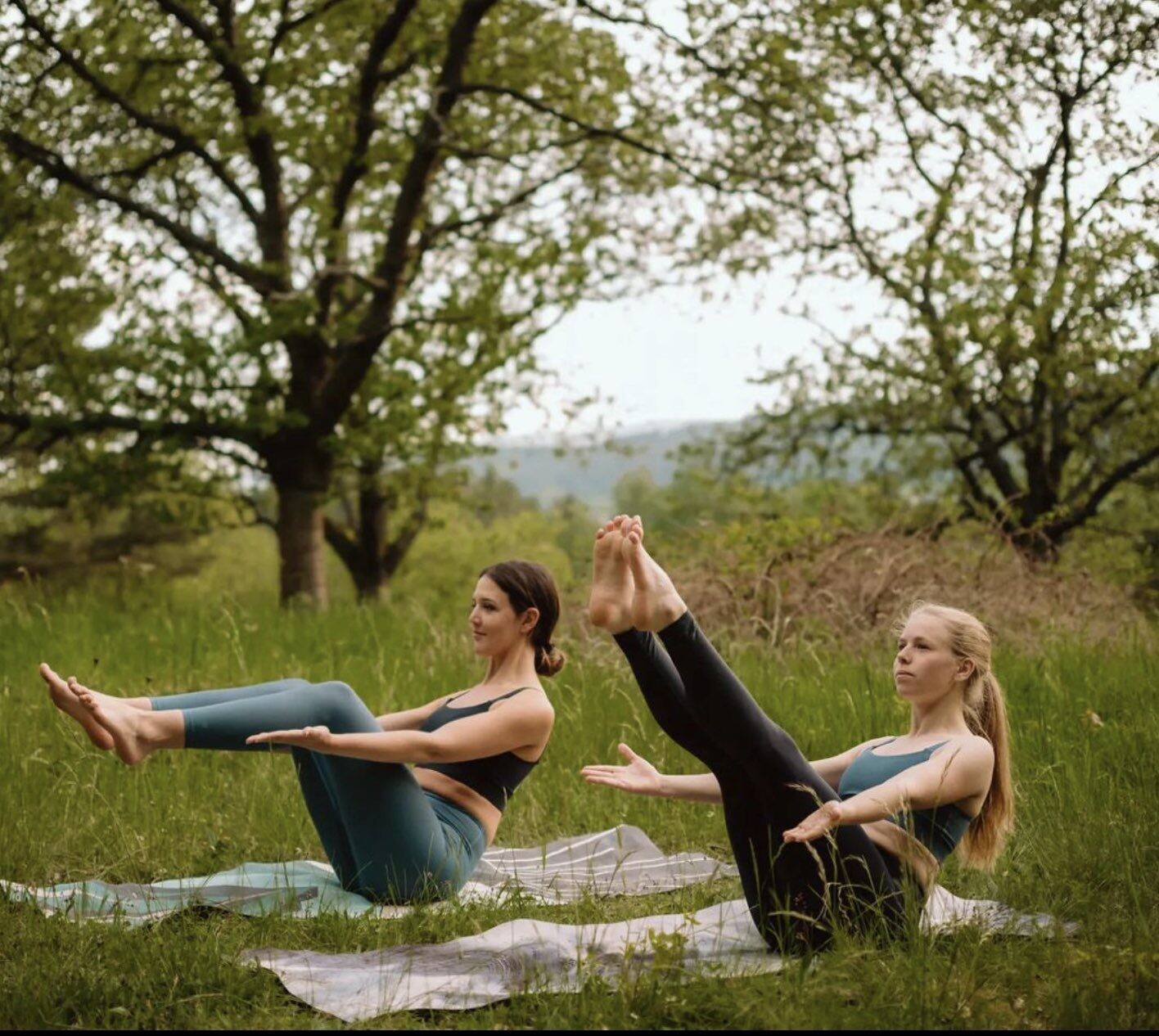
1.- Plank
There are many plank variations, and the beauty of this exercise is that it requires no equipment. High plank (arms extended) and low plank (on the forearms) are the simplest versions, but side plank allows you to target the smaller muscles in the core, such as the intercostals. Add in some movement like plank walk-ups, and you have several options to rotate into your routine, ensuring you don’t get bored. Increasing the duration of a plank hold is another way to make this increasingly more challenging as you progress.
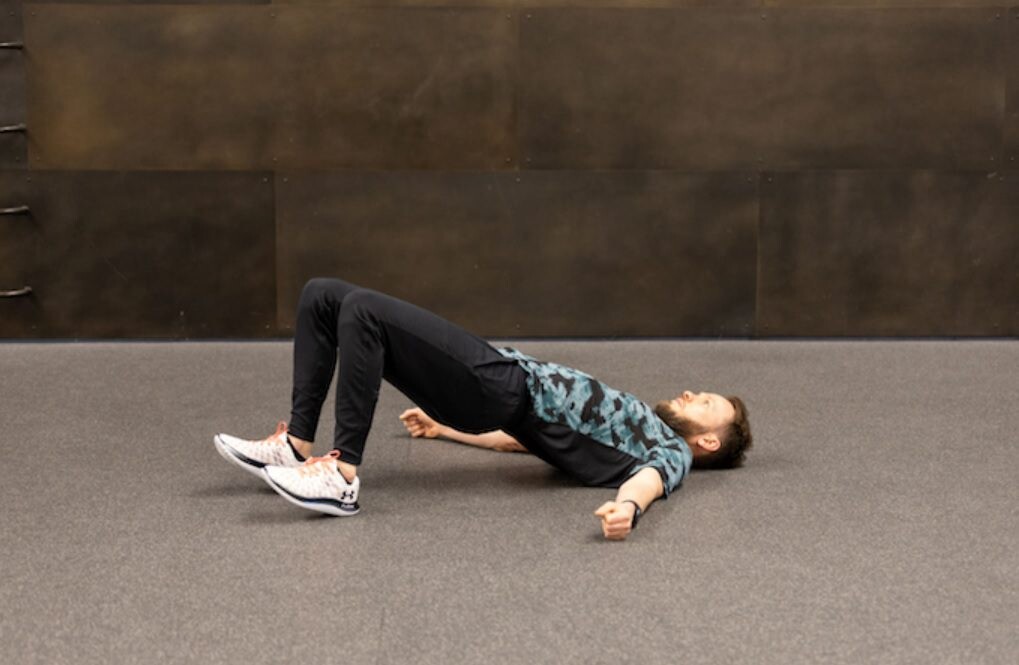
2.- Boat
Any runners familiar with yoga may recognize this one. Similar to the plank, boat pose can take several different variations that can increase or decrease its difficulty and target different areas of the core. You’ll feel a simple, still boat pose in your lower abdomen, but challenging yourself with some prayer twists brings the heat to the side abs, too. While in the posture, bring your hands to heart-centre and alternate touching one elbow on the ground at a time. Bicycle and simple crunches are another great option.
3.- Bridge
This one packs a lot of punch for how simple it is. In a successful bridge, runners will need to activate their glutes, another muscle group essential to injury prevention in running. As with the other two exercises, runners can keep this one simple or add single-leg movements to isolate the individual glutes and provide deeper strengthening.
Runners not currently doing extra core work will see the benefits with a few repetitions of these exercises weekly.
by Claire Haines
Login to leave a comment
Practicing yoga breathing can make you a faster runner, new study says
Recent research sheds light on an unexpected ally in the quest for improved running performance: yoga breathing techniques. According to a new study published in the International Journal of Exercise Science, integrating yoga breathing practices into a runner’s training regimen can lead to significant enhancements in overall performance.
Researchers discovered that incorporating specific breathing exercises derived from yoga can yield remarkable results. By harnessing the power of controlled breathing techniques, runners can tap into a deeper reservoir of oxygen, improve respiratory efficiency and enhance endurance capacity..
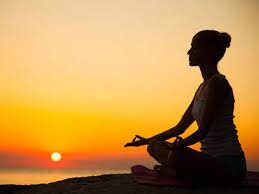
The study
The study had experienced runners of various fitness levels, both male and female, who were enlisted to explore the effects of three specific yoga breathing techniques: Dirgha (breath awareness), Kapalbhati, and Bhastrika (high-frequency yoga breathing). Over three weeks, participants received instruction in these techniques, while a control group received no instructions.
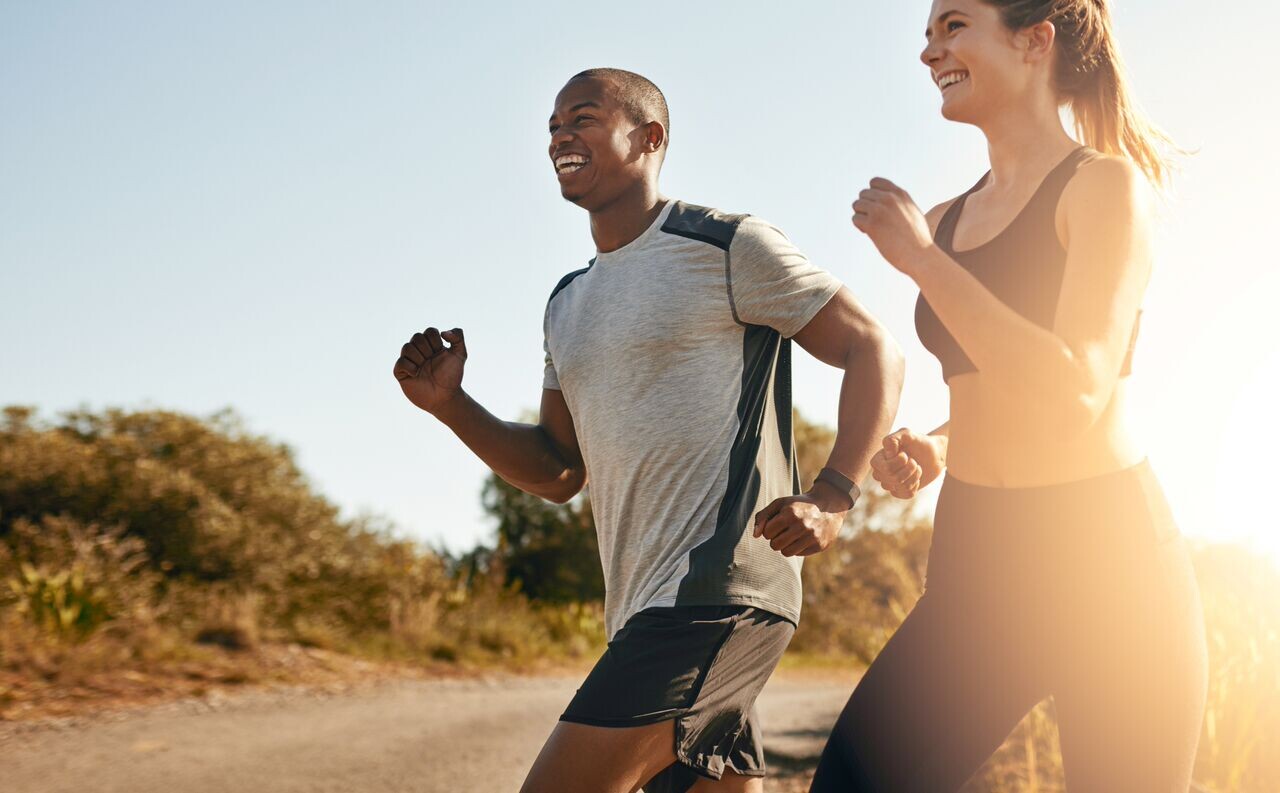
Before and after the instruction period, both groups underwent running tests on a laboratory treadmill, maintaining a prescribed rate of perceived exertion (RPE). Remarkably, after the yoga breathing instruction, participants demonstrated a significant improvement in running pace while maintaining the same RPE as before. In contrast, the control group showed no change in pace.
Pranayama to power performance
The concept of using yogic breathing isn’t entirely new—past studies have demonstrated the profound impact of pranayama, or yogic breath control, on respiratory muscle function. Through regular practice of pranayama techniques, runners can strengthen the diaphragm and intercostal muscles, leading to more efficient oxygen uptake and utilization during exercise. This translates into better aerobic capacity, reduced breathlessness and prolonged endurance during long-distance runs.
How to get started
Dirgha Pranayama (three-part breath)
Inhale deeply, filling your belly, ribcage and chest with air. Exhale slowly, releasing the breath from your chest, ribcage and belly. Repeat for several rounds, focusing on smooth, controlled breathing.
Kapalabhati
Sit with a straight spine and take a deep inhale. Exhale forcefully through your nose by quickly contracting your lower abdomen. Follow each exhale with a passive inhale. Repeat this rhythmic pattern for several cycles, maintaining focus on the breath.
by Keeley Milne
Login to leave a comment
Could Sound Therapy Improve Your Athletic Performance?
You might listen to pump-up music while running to help you churn out the miles. But tuning into another form of sound could offer the opposite effect. Sound therapy—also known as sound baths or sound healing sessions—work to bring you into a state of calm and relieve stress. Sound baths aren’t just for savasana in yoga class, either, as the acoustic notes can offer benefits for athletes.
Here’s everything you need to know about sound therapy and how it can help your mindset and your recovery

What is sound therapy?
While sound therapy in Western medicine is a newer practice, it’s grounded in a very long tradition. “Sound therapy is the practice of not only auditory, but also vibratory inputs to influence physiology,” says Nathan R. Handley, M.D. medical oncology and integrative medicine doctor at Jefferson Health in Philadelphia. Think of sounds like crystal bowls, chimes, light drumming, or gongs, all emitting different frequencies and working to create a relaxed mind and body experience.
Some Eastern philosophies hold that the universe arose from sound—like the “om” chanting sound. “One of the principles with Eastern medicine is that when someone is sick they can be nourished by the correct sound,” Handley says, because the specific vibrations help to bring the body back into a healthy state. Eastern medicine traditions have a deep appreciation of the mind-body connection, and an awareness that sound can quiet the mind and reduce stress, Handley explains.
Handley uses vibro acoustic therapy in his medical practice, which is the combination of audible sound and vibration to decrease stress and promote relaxation. Transducers—which emit vibrations—can also be embedded in soft furniture so that the healing is felt as well as heard, Handley adds. “Sound therapy is really interesting because in one form or another, it has really been part of traditional healing culture for thousands of years,” he says.
The premise of sound therapy is simple: Certain sounds are naturally meant to bring you into a state of calm, relaxation, and healing. “Sound is energy. Specific vibrations carry different energy. In Eastern medicine, different parts of the body are associated with specific energies, frequencies, and vibrations. Sound, then, is a vibrational force that can influence (and ideally harmonize) these energies,” Handley says.
What are the benefits of sound therapy?
1. Stress Relief and Improved Mood
Listening to relaxing, repetitive sounds can help your body calm down, relax, and relieve tension, and can help you focus on the present moment, says Michelle DiBlasi, D.O., chief of inpatient psychiatry at Tufts Medical Center in Boston.
In fact, research published in the Journal of Evidence-Based and Complementary Alternative Medicine in 2017 backs up the benefits of sound therapy for mood and stress. The study, which involved 62 men and women with an average age of about 50, found that following a Tibetan singing bowl meditation, participants reported reduced feelings of tension, anger, fatigue, and depressed mood.
DiBlasi explains that sound therapy may work to reduce stress and boost mood potentially by stimulating the vagal nerve. The vagal nerve carries signals between the brain, heart, and digestive system, and is responsible for triggering a parasympathetic response, or our “rest and digest” state. When we’re in a parasympathetic state, we experience a lower heart rate and relaxed breathing, which in turn, helps the mind relax, Diblasi explains.
2. Better Sleep Quality
You’re probably aware that a restful night’s sleep is important to feeling your best, and helping you perform better as a runner. It’s easy to fall into patterns that disrupt sleep quality, like scrolling on phones or watching TV before bed. But there’s promising research that sound therapy can help with sleep.
This is especially true for a particular kind of sound therapy known as binaural beats. The Sleep Foundation defines binaural beats as an auditory phenomenon that occurs when listening to two different frequencies at once. “The strategy with binaural beats is to create the perception of a specific frequency by presenting two slightly different frequencies to each ear,” Handley says.
These frequencies then influence your brain waves frequencies, which can lead to different effects, Handley explains. For example, “delta waves are associated with deep sleep; theta waves are associated with light sleep or deep relaxation; alpha waves are associated with a relaxed state, when the brain isn’t focused on anything in particular; beta waves occur during periods of alertness and engagement; and gamma waves are associated with learning, problem solving, and high-level cognition,” he says. Binaural beats tap into the frequencies of these brain waves (often delta waves) to help you find calm and sleep better.
A pilot study published in Digital Health in 2022, examining the sleep of 20 healthy participants, found that the practice of listening to 90 minutes of delta binaural beats had a positive effect on sleep quality, as shown by markers like the number of awakenings and sleep duration. Participants also reported increased sleep satisfaction after one week of listening to the binaural beats, as well as reduced anxiety and anger.
While there are a host of remedies on the market advertised to help you sleep, a good alternative to pill therapy might just be sound therapy. “I think anything like this where you’re doing something that’s relaxing your mind and body certainly gets you ready for sleep,” Diblasi says. “It’s a great exercise to do before bed.”
3. Pain Management and Recovery
“Sound baths and sound therapy are helpful for athletes because they can lead to the relaxation response which can be helpful for not only recovery, but also performance enhancement,” Handley adds.
Sound meditation can also have a positive impact on perceived levels of pain. According to research published in Journal of Evidence-Based and Complementary Alternative Medicine, participants who listened to singing bowls experienced a reduction in pain and tension after the therapy.
While the exact mechanism for this is unclear, researchers found that for many participants, mood improved while listening to the sound therapy, which could account for physiological changes in the body. In other words, when your mind relaxes, your body might follow suit.
4. Increased Heart Rate Variability
“There is increasing evidence that sound therapy can enhance heart rate variability (HRV),” Handley says. HRV is the variation in the intervals between heart beats and can signal your adaptability. A higher HRV can indicate better cardiovascular health, stress resilience, and enhanced athletic performance, he explains.
“Because HRV indicates increased parasympathetic activation, it is indicative of better recovery and preparedness for intense training sessions,” Handley adds.
A study published in Cureus in 2023, which involved 23 participants, found that the practice of humming—considered a form of sound therapy—increased heart rate variability. The study indicates that humming can create a unique pattern of the heart’s signal, which can potentially lower sympathetic activation (our stressful state) and increase the parasympathetic tone (our relaxed state).
What’s more, the study found that after taking part in the humming exercise, the practice increased breathing quality and consistency through increased HRV and lung function. Researchers found that the effects of humming continued to help even when the individual was not consciously doing the activity.
How to Get Started With Sound Therapy
In order to experience the benefits of sound therapy, DiBlasi recommends listening for 30 to 90 minutes, but if you have less time, it’s still worth a listen. “If you only have 10 minutes before you go to work, or before bedtime, that could still be helpful,” she says.
To get started with sound therapy, these five apps provide a relaxing experience. All you need to do is find a quiet, comfortable place to tune in and chill out.
1. Apple Fitness+ ($10/month or $79/year)
Beginning in 2024, Apple Fitness+ introduced a new meditation theme called Sound. While a trainer will start off the meditations, the five-, 10-, and 20-minute sessions allow you to focus in on calming tones and rhythms, with the help of gongs and singing bowls.
2. Binaural Beats App ($3/month)
This app is exclusively designed to offer binaural beats, which you should listen to with headphones to experience the different frequencies in each ear. The app allows you to select your focus, like sleep or stress relief.
3. Calm App (Sound Baths) ($14/month)
Users can select their focus from within the sound bath categories, including sleep, meditation, work, wisdom, and even sounds baths meant for children.
4. The Sound Bath App ($10/month)
Choose from various sound baths based on your mood and your needs. The app includes a library of more 100 options, plus eight-hour evening baths to last you through a good night’s sleep. Plus, you can tune into twice-weekly live-stream sessions, which also feature live chats with facilitators.
5. Third Ear (free for limited use or up to $10/month)
You can choose to listen to different sounds like gongs, bowls, chimes, mantras, or binaural beats. Free sound baths range from three to five minutes, while full use of the app offers 30- to 50-minute sessions.
Login to leave a comment
Bored, Injured, or Experiencing a Plateau? Here’s How to Shake Up Your Running
Plus, coach-approved ways to shake up your training. We’re all for having a set run schedule, considering the ease it can bring to your life. You don’t have to formulate workouts on the fly or do any guesswork over how to reach your goals—simply lace up and follow the plan.
But sometimes, too much structure can backfire, causing you to fall into a rut. And that can zap the joy out of running, transforming the activity you once loved into nothing but negativity.
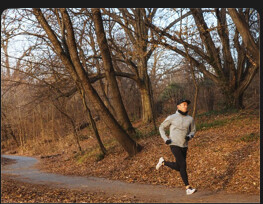
Fortunately, there are simple things you can do to bust out of a rut and get back into a happy running groove. First though, you have to identify that you’re in one.
With that in mind, we tapped two coaches to learn the signs of when you might want to switch up your run routine, and what those signs might indicate. Plus, exactly how to inject excitement back into your runs. Let this be the permission you need to try something new.
1. You Dread Working Out
It’s normal to feel less-than-chipper about an occasional workout, but if you find yourself outright dreading your runs more often than not, “it’s time to reassess,” Kaila DeRienzo, a South Carolina-based certified personal trainer and certified run coach tells Runner’s World.
The potential cause: A few things could lead to dreading workouts. One possible culprit: Your workouts are too challenging because you’ve set a goal that’s unrealistic for your current fitness level, Kai Ng, USATF- and RRCA-certified run coach in New Jersey and New York, tells Runner’s World. Runs and workouts that are too hard cause you to overtrain and ultimately loathe your workouts because all you’re really doing is just beating up your body.
Another potential cause: Other stressful factors in your life, such as a tough work schedule, or demanding caregiver responsibilities, or parenting duties, all of which can make it tough to devote as much time to running as your current training plan dictates, Ng says.
The fix: First, have an honest conversation with yourself to understand why you’re feeling amiss, DeRienzo suggests. By identifying the root cause of your malaise, you can take targeted steps to address it, she explains.
For example, if your dread is tied to a too-lofty goal, such as trying to run four days a week instead of aiming for a more manageable two days or aiming for a PR in a marathon instead of a half or 10K, then let yourself off the hook by lowering the bar. Though it’s great to dream big, it’s also important to be realistic. “Smaller wins are so, so important,” Ng says, as they help build confidence.
If you pinpoint other factors in your life that are making it tough to stick with your current plan, be honest about what you’re actually able to commit to right now and adjust your routine accordingly, Ng suggests. Maybe this isn’t the season to log 50 miles a week, or finally run a marathon. That’s okay. Not every training cycle needs to end with a PR.
Lastly, if you realize the sense of dread extends beyond running and into other areas of your life, you may be struggling with a mental health issue, such as depression. In this case, talk to a trained professional, DeRienzo says.
2. You’re Really Bored
People get into running for various reasons, but one common thread that inspires folks to stick with it is that it engages and challenges them. If you find that your sense of joy about running has evaporated—for example, workouts or races that once felt exciting are now ho-hum—that’s worth looking into.
The potential cause: You may not be challenged enough, Ng says. While all runners should regularly pencil in easy runs, only doing workouts that feel like a walk in the park can lead to boredom.
Alternatively, you may not be injecting enough variety into your routine. Perhaps you run the same route every. single. day. Or you carbon copy your workouts week after week. That level of monotony can also lead to boredom.
The fix: First, evaluate your fitness to get a solid sense of your current abilities in order to help figure out how to best challenge yourself.
“Whether it is a fitness test, a time trial, a race, get out there and see where you’re at and how you stack up,” Ng says. From there, level up your plan as needed. You might want to talk to a coach for some helpful guidance.
On the other hand, if you suspect your boredom is due to monotony, shake things up by exploring new running routes (Strava can be a great tool for this), joining a local run club (Ng suggests trying out a different one each week), or experimenting with different types of workouts. This could look like venturing out on trails if you’re typically a road runner or challenging yourself to run hills if you normally go flat.
Dabbling in forms of exercise outside of running, such as swimming, cycling, dance, and Pilates—really whatever tickles your fancy—can also help add variety and excitement to your schedule.
Finally, you can also reignite your spark with running by treating yourself to something novel, like a fresh pair of shoes, a snazzy new training outfit, or a fancy fitness tracker. “Getting something new always shakes things up,” says Ng.
3. You’re Dealing with Injuries
According to 2021 study published in the Journal of Health and Sport Science, 50 percent of runners experience some type of injury every year that prevents them from running for a period of time, and 25 percent of runners are injured at any given time. These injuries can range from shin splints to ankle and knee problems.
In other words: Almost every runner deals with injury at some point, but if ailments continuously crop up, that’s a surefire red flag your plan needs adjusting.
The potential cause: Chances are, you’re overtraining by either running too many miles, logging too many high-intensity runs, or not allowing your body enough recovery time in between sessions, Ng says.
The fix: It’s common sense, but it bears repeating: Don’t train through injury. Instead, scale back your running to allow your body time to heal. Seek help as needed from a physical therapist or coach to fully mend the issue and get their guidance on how to avoid future injuries.
Keep in mind that factors like poor sleep and inadequate nutrition can increase your odds of injury, so take an honest look at your overall lifestyle and make adjustments as needed.
4. Your Progress Has Stalled
If, despite consistent efforts, your performance in workouts and races has stagnated, then it’s high time to re-evaluate your current plan.
The potential cause: You may be overtraining or struggling with a nutrition issue, says Ng, both of which can sabotage performance because your body isn’t getting the recovery it needs. Or, quite possibly, you don’t have enough variety in your routine, DeRienzo says.
Over time, your body adapts to the work you demand, and if you don’t routinely challenge your body in novel ways, eventually you’ll stop seeing progress.
As the American Council on Exercise explains: “Doing the same exercise repeatedly could lead to a plateau where no more physiological changes occur.”
The fix: If you suspect you’re plateauing due to overtraining or nutrition problems, dial back your mileage and/or workout intensity and focus on eating frequent, well-balanced meals.
Also, inject other types of exercise into your schedule. “Move in different ways,” says Ng, explaining that most any type of cross-training movement—from strength training to skiing to swimming to yoga—is beneficial for runners. Because running is such a linear sport (you move in just one direction: forward), taking the time to build your strength and athleticism in other ways can ultimately make you a stronger, more resilient runner.
Now, if you realize your stagnation is due to an unchanging run routine, spice things up however you can: Add speed work, hit the hills, challenge yourself to run longer, or try new interval workouts. “Having something new and exciting to look forward to each day of the week is going to keep it mentally stimulating and also keep your body stimulated, too,” DeRienzo explains.
5. You Don’t Feel Confident in Your Workouts
If you don’t have a training plan, have low confidence in your program, or are unsure if the schedule you’re following is inching your toward your goals, it’s time to rethink your approach.
The potential cause: Choosing the right training plan for you and your goals can help you feel accomplished by checking off workouts one by one. Plus, it will give more structure to your training so you get the right mix of intensities within your workouts and the right amount of rest—rather than simply winging it. If you have a plan, but it’s too generalized and not personalized to you, says DeRienzo, it may also leave you feeling less than confident in your training. “What somebody else does is not going to be the most beneficial” for your situation, she explains.
The fix: Find the right training plan for you by determining your fitness level and your goals. (You can also use our quiz to point you in the right direction.)
If you're serious about becoming a better runner, you might also consider hiring a coach—even for just a few months—to get personalized guidance and a curated-for-you plan.
“There’s a myth that run coaching is super expensive,” says Derienzo. Truth is, “it’s a lot more affordable than personal training,” she says, noting that in her experiences, it’s realistic to find support for less than $100 per month. Search platforms like CoachUp, Training Peaks, and RunDoyen to connect with a pro.
6. You’re Missing Workouts
While skipping a run here and there is NBD, if you’re consistently bailing on workouts, then your run plan clearly isn’t working for you.
The potential cause: Life is probably too busy right now to sustain the level of running your plan requires, says Ng. Or, you may just need more rest. Either way, your current approach just isn’t appropriate for your schedule or fitness level.
The fix: Take a close look at your schedule and map out which days make the most sense to do which workouts, says Ng. For example, instead of attempting long runs on Sundays like everyone, you might realize Wednesdays are more ideal since you don’t have any work meetings then. Or, perhaps Friday becomes your new strength training day instead of Tuesday, since the gym is less crowded then, making it easier to get in and out.
Taking the time to rejigger your plan so that it actually makes sense with your schedule will increase your likelihood of sticking to it—and ultimately, seeing results.
Of course, if you’re missing workouts because you really feel like you need it (or you’re injured), then it’s best to scrap your plan entirely and allow yourself the downtime you need to heal.
Finally, if it’s your mental motivation that’s making you miss most of your planned runs, it’s probably time to take a break. “Get a breather and gather yourself,” says Ng. By putting distance between yourself and the sport, you can get a clearer picture of what you ultimately want to get out of running.
by Runner’s World
Login to leave a comment
Feeling Terrible Two Days After a Hard Run? There’s a Reason….and a Solution.
You felt fine a day after your long run—so why the heck are you slogging through your easy workout two days later?
Picture this scenario: You get through a tough workout on Sunday—whether it’s a tough round of 800-meter repeats or 16 miles at marathon pace—and, surprisingly, you feel fine afterwards.
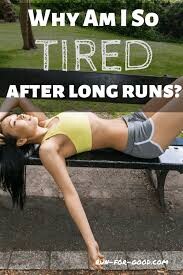
The next morning, you’re a little stiff, but nothing too serious. You take a day to rest, and then head back out on Tuesday for an easy run.
Then, boom. Your legs feel like they’re made of lead, you’re sore all over, and what’s supposed to be an easy run feels like you’re wading through molasses. What the heck happened?!
This is what Cory Smith, running coach and founder of Run Your Personal Best, calls “second-day syndrome.” The official term is delayed onset muscle soreness, or DOMS, but he likes to use second-day syndrome because it nails home the point that the ailment often happens two days after a hard workout, which a lot of people don’t expect.
Before getting to the bottom of why DOMS happens, let’s start with simple definitions. The American College of Sports Medicine defines DOMS as, “A sore, aching, painful feeling in the muscles after unfamiliar and unaccustomed intense exercise.” Basically, whenever you lift weights, run a tough workout, go rock climbing, or do an activity beyond your current level of fitness, you’re creating tiny tears in muscle tissue. In response, your body releases chemicals, lipids, alongside white blood cells like cytokines, macrophages, and neutrophils to quickly repair those muscles. This flurry of activity in localized areas of the body also initiates an inflammatory response. The muscle tears, rebuilding process, and inflammation creates that soreness and stiffness DOMS is recognized for.
“The soreness peaks anywhere from 24 to 48 hours after the initial stress, so it’s common for runners to feel fine the next morning and think they’re all good and recovered,” Smith says. “But then, on that second day, you might feel worse than you did yesterday.” This is because there’s a delay in delivery of blood flow to the muscle also called the “inflammatory cascade.” Think of muscle repair as a slow ramp-up process; sometimes it takes a few days to reach peak soreness.
Though it can be painful, annoying, and hindering, DOMS shouldn’t last long-term. In fact, it won’t be a recurring sensation.
“Eventually, through repeating the cycle of damaging and healing, you’ll grow stronger,” Smith says. “Your body is going to be accustomed to this stress and you’ll feel DOMS less and less.”
Depending on the severity of your workout and how often you repeat it, DOMS generally goes away in a few weeks. Your muscles heal, rebuild stronger, and eventually become accustomed to the intense exercise. Contrary to popular belief, just because that soreness goes away doesn’t mean you didn’t have a hard workout. Your body has just adapted and may require less recovery.
“If you’re not almost recovered from a normal workout on the third day, you probably went too hard,” Smith says. “Generally, it depends on the type of workout that you’re doing— some light temp work—you may only need a day in between and you’ll be recovered. Whereas if you’re doing hard 800s, you’ll probably need two full days to recover. For a long run at marathon pace, you might need three days.”
Since defining DOMS, research has traditionally been focused on muscle tissue damage. But a recent study published by the International Journal of Molecular Sciences has shown that connective tissue, like deep fascia, may be more involved than previously thought. Deep fascia is connective tissue surrounding muscles, and it facilitates movement between muscles and acts as a pathway for blood vessels.
Authors of the study believe that they’ve found evidence that proves further research and effort needs to be focused on the fascia, rather than just muscle tissue. This also means that runners may want to pay more attention to their fascia, as it doesn’t respond to conventional static stretching, rather multiple planes of stretching and mobility. It’s less about stretching individual muscles, but lengthening the connections made by the fascia.
There are several ways to target this connective tissue. One effective method is pedal during yoga: downward facing dog, the extended side angle pose, and the standing figure-four stretch.
There’s no fix-all method to preventing DOMS, but recovery protocols may dictate how severe or sustained your soreness will be. Smith recommends static stretching no more than six minutes after your run. It’s important to get those muscles stretched as quickly as possible after a run so they don’t tighten up. Tight muscles can prevent cells from expanding and bringing blood flow to the muscles. You need fresh blood and oxygen delivered to the worked out muscles, as it carries away the lactic acid buildup there. A massage gun can produce the same results.
“Movement is key! My go-to for runners is walking for 20 to 30 minutes after a hard workout, but an easy spin or recovery swim will also work,” says physical therapist and running coach Amy Parkerson-Mitchell.
The American Council on Exercise recommends drinking 7-10 ounces of water every 10-20 minutes during your run, and an additional 8 ounces within 30 minutes after. When you sweat, you lose water, which is important for oxygen delivery to the muscles. Plus, water acts as a sort of medium within the body to deliver nutrients like amino acids and electrolytes to damaged muscles.
You might be inclined to reach for an ice pack when you’re recovering from a long run, but Parkerson-Mitchell says that heat is key. In a study comparing heat and cold therapies for recovery, researchers found that applying heat directly after a workout produced less muscle damage. Ice, on the other hand, is great for when you’re in the midst of DOMS, rather than before it happens, because it eases swelling and numbs pain.
There are two types of heat therapy: dry heat in the form of heating pads, and moist heat in the form of steam towels or a hot bath. Both are effective, but the Orthopedic Institute of Pennsylvania says that moist heat works faster in changing the muscles temperature.
Amy Parkerson-Mitchell says warming up and cooling down is more important than people think, and skipping these steps can increase the time required for recovery from DOMS. Dynamic mobility exercises like walking high-kicks, knee-to-chest, and walking lunges are good for cold muscles prior to a run because you’re moving your joints through their full range of motion. One of the biggest mistakes you can make with DOMS is going too fast too soon after a hard workout.
“This is why, with my clients, we do two hard workouts a week,” Smith says. “Typically, I give two days for runners to recover from a difficult run. If you do too much too soon, that’s when you lead into stagnant performance and overtraining.”
But the too-often overlooked component of DOMS is the negative implications it has on your mindset. You might feel discouraged by how tough a run feels when you experience DOMS, especially after conquering a longer, tougher workout just a few days prior. Don’t fret or feel like you’re losing progress—remember that what you’re experiencing is completely normal, and something you can minimize for a sustainable, long-term running life.
by Outside Online
Login to leave a comment
Feeling Terrible Two Days After a Hard Run? There’s a Reason….and a Solution.
You felt fine a day after your long run—so why the heck are you slogging through your easy workout two days later?
Picture this scenario: You get through a tough workout on Sunday—whether it’s a tough round of 800-meter repeats or 16 miles at marathon pace—and, surprisingly, you feel fine afterwards.
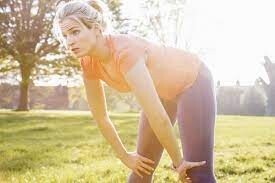
The next morning, you’re a little stiff, but nothing too serious. You take a day to rest, and then head back out on Tuesday for an easy run.
Then, boom. Your legs feel like they’re made of lead, you’re sore all over, and what’s supposed to be an easy run feels like you’re wading through molasses. What the heck happened?!
This is what Cory Smith, running coach and founder of Run Your Personal Best, calls “second-day syndrome.” The official term is delayed onset muscle soreness, or DOMS, but he likes to use second-day syndrome because it nails home the point that the ailment often happens two days after a hard workout, which a lot of people don’t expect.
Before getting to the bottom of why DOMS happens, let’s start with simple definitions. The American College of Sports Medicine defines DOMS as, “A sore, aching, painful feeling in the muscles after unfamiliar and unaccustomed intense exercise.” Basically, whenever you lift weights, run a tough workout, go rock climbing, or do an activity beyond your current level of fitness, you’re creating tiny tears in muscle tissue. In response, your body releases chemicals, lipids, alongside white blood cells like cytokines, macrophages, and neutrophils to quickly repair those muscles. This flurry of activity in localized areas of the body also initiates an inflammatory response. The muscle tears, rebuilding process, and inflammation creates that soreness and stiffness DOMS is recognized for.
“The soreness peaks anywhere from 24 to 48 hours after the initial stress, so it’s common for runners to feel fine the next morning and think they’re all good and recovered,” Smith says. “But then, on that second day, you might feel worse than you did yesterday.” This is because there’s a delay in delivery of blood flow to the muscle also called the “inflammatory cascade.” Think of muscle repair as a slow ramp-up process; sometimes it takes a few days to reach peak soreness.
Though it can be painful, annoying, and hindering, DOMS shouldn’t last long-term. In fact, it won’t be a recurring sensation.
“Eventually, through repeating the cycle of damaging and healing, you’ll grow stronger,” Smith says. “Your body is going to be accustomed to this stress and you’ll feel DOMS less and less.”
Depending on the severity of your workout and how often you repeat it, DOMS generally goes away in a few weeks. Your muscles heal, rebuild stronger, and eventually become accustomed to the intense exercise. Contrary to popular belief, just because that soreness goes away doesn’t mean you didn’t have a hard workout. Your body has just adapted and may require less recovery.
“If you’re not almost recovered from a normal workout on the third day, you probably went too hard,” Smith says. “Generally, it depends on the type of workout that you’re doing— some light temp work—you may only need a day in between and you’ll be recovered. Whereas if you’re doing hard 800s, you’ll probably need two full days to recover. For a long run at marathon pace, you might need three days.”
Since defining DOMS, research has traditionally been focused on muscle tissue damage. But a recent study published by the International Journal of Molecular Sciences has shown that connective tissue, like deep fascia, may be more involved than previously thought. Deep fascia is connective tissue surrounding muscles, and it facilitates movement between muscles and acts as a pathway for blood vessels.
Authors of the study believe that they’ve found evidence that proves further research and effort needs to be focused on the fascia, rather than just muscle tissue. This also means that runners may want to pay more attention to their fascia, as it doesn’t respond to conventional static stretching, rather multiple planes of stretching and mobility. It’s less about stretching individual muscles, but lengthening the connections made by the fascia.
There are several ways to target this connective tissue. One effective method is pedal during yoga: downward facing dog, the extended side angle pose, and the standing figure-four stretch.
There’s no fix-all method to preventing DOMS, but recovery protocols may dictate how severe or sustained your soreness will be. Smith recommends static stretching no more than six minutes after your run. It’s important to get those muscles stretched as quickly as possible after a run so they don’t tighten up. Tight muscles can prevent cells from expanding and bringing blood flow to the muscles. You need fresh blood and oxygen delivered to the worked out muscles, as it carries away the lactic acid buildup there. A massage gun can produce the same results.
“Movement is key! My go-to for runners is walking for 20 to 30 minutes after a hard workout, but an easy spin or recovery swim will also work,” says physical therapist and running coach Amy Parkerson-Mitchell.
The American Council on Exercise recommends drinking 7-10 ounces of water every 10-20 minutes during your run, and an additional 8 ounces within 30 minutes after. When you sweat, you lose water, which is important for oxygen delivery to the muscles. Plus, water acts as a sort of medium within the body to deliver nutrients like amino acids and electrolytes to damaged muscles.
You might be inclined to reach for an ice pack when you’re recovering from a long run, but Parkerson-Mitchell says that heat is key. In a study comparing heat and cold therapies for recovery, researchers found that applying heat directly after a workout produced less muscle damage. Ice, on the other hand, is great for when you’re in the midst of DOMS, rather than before it happens, because it eases swelling and numbs pain.
There are two types of heat therapy: dry heat in the form of heating pads, and moist heat in the form of steam towels or a hot bath. Both are effective, but the Orthopedic Institute of Pennsylvania says that moist heat works faster in changing the muscles temperature.
Amy Parkerson-Mitchell says warming up and cooling down is more important than people think, and skipping these steps can increase the time required for recovery from DOMS. Dynamic mobility exercises like walking high-kicks, knee-to-chest, and walking lunges are good for cold muscles prior to a run because you’re moving your joints through their full range of motion. One of the biggest mistakes you can make with DOMS is going too fast too soon after a hard workout.
“This is why, with my clients, we do two hard workouts a week,” Smith says. “Typically, I give two days for runners to recover from a difficult run. If you do too much too soon, that’s when you lead into stagnant performance and overtraining.”
But the too-often overlooked component of DOMS is the negative implications it has on your mindset. You might feel discouraged by how tough a run feels when you experience DOMS, especially after conquering a longer, tougher workout just a few days prior. Don’t fret or feel like you’re losing progress—remember that what you’re experiencing is completely normal, and something you can minimize for a sustainable, long-term running life.
by Outside Online
Login to leave a comment
Three things runners should focus on in winter
Whether you love it or hate it, the cooler months in North America bring unique challenges for runners. Getting out the door during dark mornings and evenings can feel tough. Approaching winter as a time to focus on building new strengths, like learning to run by effort rather than pace, navigating tough terrain like a mountain goat, and making recovery a superpower, can make lacing up more enticing. Know that you’ll emerge a stronger, more resilient athlete come spring, ready to nail new goals and rack up milestones.
1.- Embrace challenging terrain
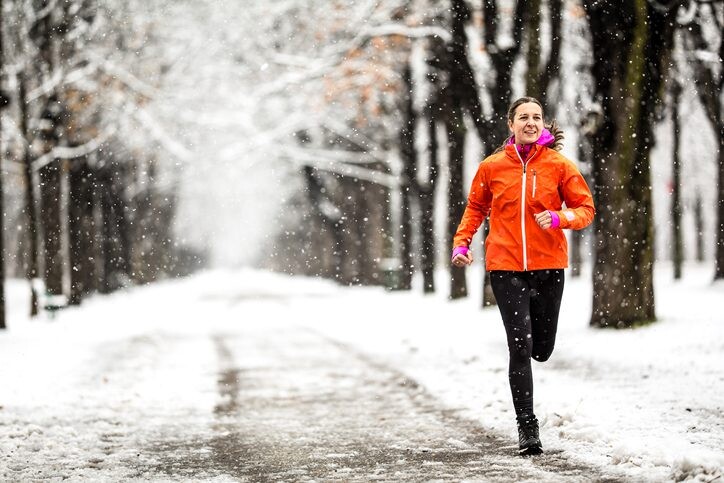
Winter brings a natural shift in running surfaces, from icy sidewalks to snowy trails. Diving right in and embracing this diversity challenges your muscles in new ways, and promotes overall strength and agility–perfect for speeding down technical trails in the summer or helping you maintain great biomechanics on the road when running on tired legs.
The uneven footing that snow, ice or mud involve engages stabilizing muscles, enhancing balance and co-ordination. Navigating tough terrain also reduces the risk of repetitive strain injuries by distributing the impact across various muscle groups. By adapting to changing surfaces, you’ll build resilience, setting the stage for improved performance when returning to smoother paths.
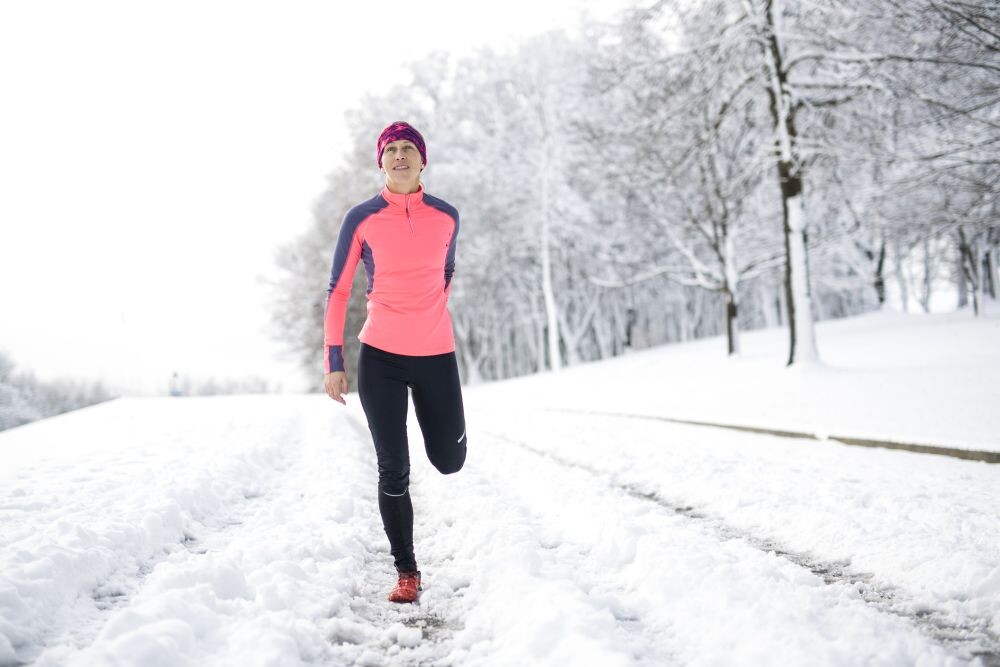
2.- Take recovery to the next level
The colder months provide the perfect opportunity to hone the skill of helping your body and mind bounce back from tough training. Winter running demands more from your body as you battle the cold, and work to keep your footing. Prioritizing recovery during this season can have lasting benefits for your overall well-being and running performance, and you’ll create new habits that will seem like second nature by the time shorts season arrives.
You’re probably tackling less mileage in the winter as you focus on building a base, and that frees up some time to devote to intentional recovery practices. Recovery involves more than simply resting (although that is important, and often neglected), and winter is the perfect time to dial in new recovery-related skills or to master of the tools already familiar to you. Test out new foam rolling techniques, hit a restorative yoga class or try soaking in a tub post-run: build on whatever you have found that works for you.
3.- Get comfortable with effort-based training
Running in the cold or dark often means slowing down, and if you’re used to running by pace and poring over your data, you may feel discouraged. Learning to run by effort is a very transferable skill–you’ll feel more comfortable tackling trails, doing hill training or adjusting for heat, once warmer weather arrives. Focus on workouts that use RPE, and get accustomed to what hard, moderate and easy pace feel like in your body. It may take an adjustment period, but you’ll reap the rewards year-round.
by Keeley Milne
Login to leave a comment
Two yoga exercises for strong toes
As a runner, you use your feet constantly, but you probably neglect them, too. Important but ignored, a runner’s feet may be jammed into ill-fitting shoes, stuck in damp, chafe-inducing socks, and left to blacken and bruise post-big-effort. But spending a few minutes a week caring for your digits can have them performing pain-free for decades to come.
Battered and beaten toes can cause painful running, and discomfort when not running. Mistreated toes may develop bunions and hammertoes, and proper toe strength and flexibility are necessary for effective push-off and propulsion. Try these simple exercises when watching TV or relaxing in the evening and you’ll be bouncing over roads and trails problem-free.
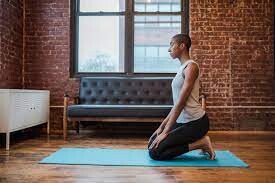
1.- Toe Stand (Padangusthasana)
Excellent for strengthening the toes and improving balance, toe stand may feel quite challenging and uncomfortable at first. It’s OK to ease into it with a very gradual approach, and start by holding the pose for only one or two seconds at a time.
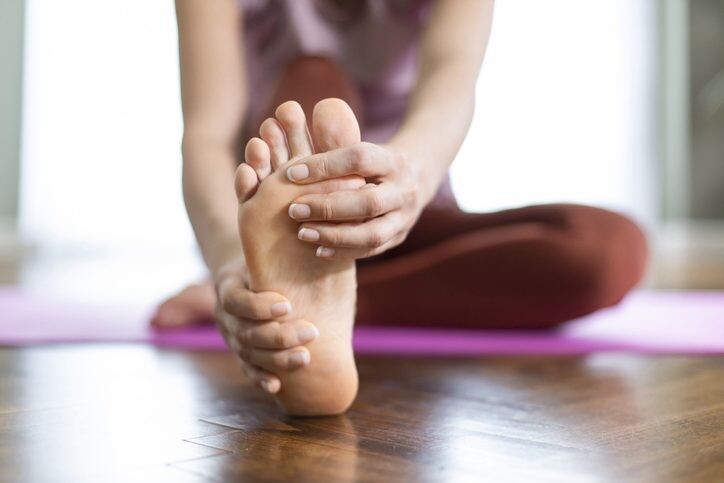
Stand with your feet hip-width apart, and bend forward to grip your big toes with your first two fingers and thumbs.
Keeping your back straight, slowly lift your heels off the ground, balancing on your toes.
Hold the position for several breaths, then release, working up to longer holds or more repetitions as you become stronger.
2.- Toe Squat (Vajrasana)
Toe squat relieves tension in the toes and the entire foot while giving it a nice stretch.
Kneel on the floor with your big toes touching and knees close together. Sit back on your heels, keeping your back and neck straight.
Hold this position for as long as comfortable, gradually increasing the duration as you gain flexibility and strength.
by Keeley Milne
Login to leave a comment
Does Running at Night Make for a Bad Night’s Sleep?
Experts offer advice for those struggling to fall asleep postrun.
Sometimes running at night just makes life easier, especially on busy days when it seems there isn’t nearly enough time to finish your to-do list. Also, evening runs are ideal for those who turn to exercise as a way to de-stress after a long day. But can running at night ruin your sleep? And therefore, does it make nighttime running counterintuitive to your overall training, considering sleep is crucial for recovery?
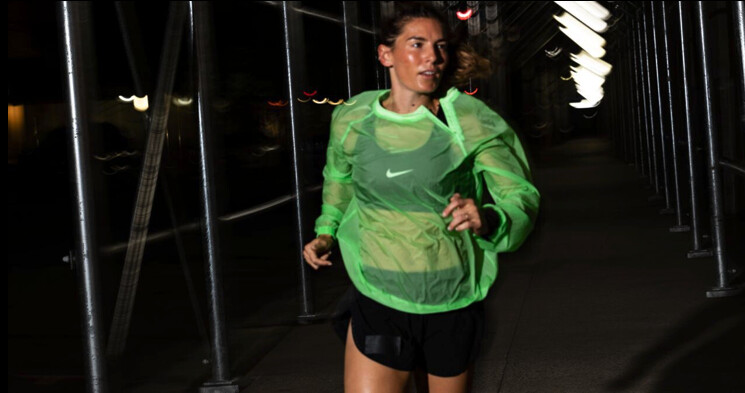
Like most conundrums runners contemplate, the answer depends on the runner. Here, we explain how running at night can affect your sleep and what to do if you feel like your nighttime run is worsening your sleep issues.
Does running at night make for a bad night’s sleep?
“In the past, the recommendation was, you really shouldn’t exercise in the evening at all,” Bob Wright, director of lifestyles education at Hilton Head Health tells Runner’s World.
Experts recommended this for two reasons: First, because exercise can increase endorphins, which can reduce sleepiness. Second, because exercise increases one’s core body temperature, which makes it hard to fall asleep, Wright explains.
However, a number of studies suggest the opposite, including a systematic review and meta-analysis published in Sports Medicine in 2019. This research greenlights exercise in the evening as long as you complete vigorous activities, like long runs or workouts, an hour before bedtime.
“For most people, at least mild or moderate exercise doesn’t seem to interfere with sleep very much,” says Scott Kutscher, clinical associate professor of sleep medicine at Stanford University. But it all depends on the person, he adds.
When we fall asleep, our melatonin levels start to rise, and our body temperatures begin to fall, both of which signal it’s time for bed, Kutscher explains. If you run before bed your core temperature will increase but once you stop, your sweat will help you cool down. This is a passive cooling effect that can actually help some runners fall asleep, he explains.
However, a rise in body temperature before bed can be counterproductive for runners who don’t cool off as easily. For this population, running before bed can make it harder to fall asleep. What’s more: If you’re aiming to re-hydrate and re-fuel postrun, that can also prolong bedtime, Kutcher adds.
In short, both experts agree running before bed will not ruin sleep for most. However, if you have difficulty falling asleep after an evening run, then you might want to reconsider your nighttime routine.
Tips to Help You Sleep Better After a Workout
If you have difficulty sleeping after a long evening run or workout, these tips can help you fall asleep, according to Kutscher and Wright.
1. Time It Right
Plan to stop running at least one hour before bedtime to allow yourself time to literally cool down, Wright says. Keep in mind, there’s no hard and fast rule, so you can use an hour as a benchmark and adjust it as needed.
2. Add Relaxation Practices
Incorporate less intense exercise into your cooldown routine to help you transition to sleep. Kutscher suggests adding stretches or yoga after a run to help you relax. During this time, you can also practice mindfulness and breathwork, which also aids sleep, he says.
Mind-body activities, including yoga or Tai Chi, can aid in falling asleep in general so they’re good options to add to your before-bed routine at any time, Wright adds.
If you noticed you do have trouble sleeping after an evening run, consider swapping your miles for less intense aerobic exercise. Holding off on your run until the morning can help regulate your sleep-wake cycle and improve sleep quality overall, as it provides natural light when you get out of bed (as long as you head outside), Wright adds.
3. Pay Attention to Pre and Postrun Routines
Be mindful of what you’re doing both right before and right after your evening run, because that’s what may disrupt your sleep more than running itself.
For example, consuming caffeinated products before or during a workout might make it harder to fall asleep. Also, if you don’t fuel after a sweat, hunger pangs can disrupt your zzzs.
If you need a snack after a run and before bed, Kutscher suggests eating foods rich in melatonin, magnesium, and potassium, like cherries or bananas. Keep in mind some people may need more food to replenish after a workout, not just a simple snack, so see what works best for you, keeping note of your nighttime habits so you can pinpoint how different techniques worked for your rest.
Login to leave a comment
Injured? Try these sports instead
Let’s face it–being injured sucks. What does a runner do when they can’t run? While most of us turn to cycling, pool running or swimming, there are other sports you can try if traditional cross-training methods just aren’t for you. What you’re able to do while you’re healing from an injury, of course, is very dependent on the nature of your injury, but the following suggestions might be good options for those who are looking to have a little fun in their unplanned off-season.
Hiking
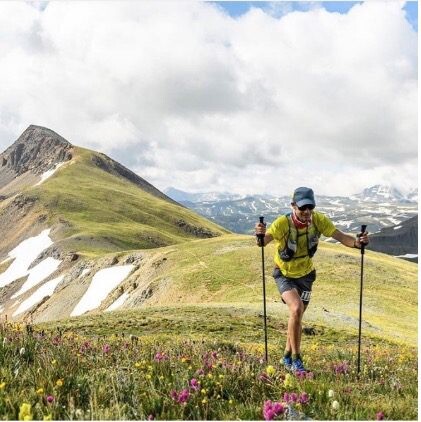
Take a walk, add some elevation change and nature, and you’ve got a hike! Many runners turn to walking while they’re injured, but if strolling around the neighbourhood doesn’t do it for you and you’re lucky enough to live in an area with trails (west coasters, we’re looking at you!) take advantage of it. The softer ground and constantly changing terrain will challenge your body in a different way, and if you’ve got mountains nearby, some steep climbs will help you return to running stronger.
Volleyball

Volleyball is a great option, because it doesn’t involve a lot of running. It may not help improve your running much, but since it’s played on teams, it’ll give you a chance to get out and socialize if it’s the camaraderie of your running group that you truly miss.
Pickleball
Tennis’s low-impact cousin has been taking the country by storm, and pickleball courts have been popping up in local parks everywhere. Pickleball requires much less running and lateral movement than tennis (which is likely not a great idea when you’re injured). It can be a lot of fun to play with a few friends, and serves as a great distraction while you take some time off from running.
Golf
Take a walk, add some sand traps and swing a stick around, and you’ve got golf! Forgo the cart and carry your bag, and suddenly you’ve also got a decent workout. Plus, it’s a great way to get outside for long periods, if it’s that fresh-air feeling that you miss when you’re on the sidelines.
Rock climbing
Want to improve your core strength while you’re out of the running game? Rock climbing is your answer. As a bonus, it’s also a good way to work on proprioception, which will have a positive effect on your running form when you return to your training.
Skiing
If you’re injured during the winter, why not use the weather to your advantage? Cross-country skiing, of course, will help you maintain (or even improve) your cardiovascular fitness without the impact of running, but alpine skiing can also improve your core and lower-body strength.
Yoga
OK, yoga isn’t exactly a sport, but it’s an excellent activity to do when you’re injured. It can improve your core strength, balance and proprioception, as well as teaching you how to control your breath and loosen tight muscles. And what runner doesn’t have tight muscles?
by Brittany Hambleton
Login to leave a comment
Three exercises to ease back pain in runners
A sore back can be a discouraging thing to face as a runner–while you’d love to get out and log some miles, recurrent back pain can be extremely limiting. The jury is out on what, exactly, gives runners achy backs, and it’s probably unique to each person. Maybe you had back issues before you began running, you’re struggling with running form, or you are facing some muscle imbalances.
A study published in Scientific American determined that runners with sore backs often had weaker deep core muscles. Whatever the cause of your pain, there are a few exercises you can do to become an all-around stronger, pain–free runner with a health, mobile spine.
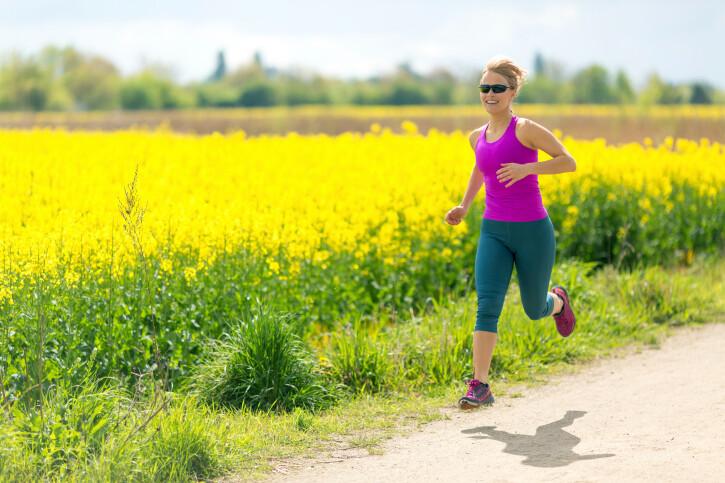
Glute Bridges
Glute bridges engage the glutes and hamstrings, which play a significant role in maintaining proper hip alignment (helping with both structural tolerance and great form) during running.
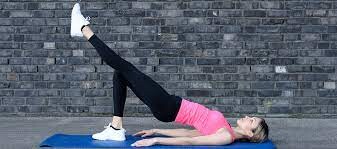
Lie on your back with your knees bent and feet flat on the floor. Lift your hips off the ground, squeezing your glutes at the top. Lower down and repeat for 12–15 reps, pausing at the top of the pose and holding your glute bridge for longer once you gain strength.
Planks
We all know and love planks (or we should!). Planks target the core muscles and helping to improve stability and support for the spine.
Start by holding a plank position on your forearms and toes, ensuring your body forms a straight line from head to heels. Hold for 20-30 seconds, gradually increasing the duration as you become more comfortable.
Cat-Cow Stretches
This yoga-inspired stretch helps to align the spine and mobilize it, while giving the back muscles a great stretch.
Start on your hands and knees and arch your back like a cat (rounding the spine), then drop your belly towards the floor while lifting your head and tailbone (cow pose). Repeat this movement for 8–10 rounds, pausing at each end of the stretch to take a few breaths or add some gentle side-to-side movement.
Even if you’re on board with adding these exercises to your pre or post-run routine, it is always a great idea to check in with a medical practitioner when you’re experiencing back pain, and important to do so if pain worsens or isn’t alleviated after a few days rest.
by Keeley Milne
Login to leave a comment
Is Overhydration More Dangerous than Dehydration?
Here's why you need to monitor your water intake
Being human is all about balance. We strive to find an ever-elusive equilibrium between work and life. We go to yoga classes in hopes of improving our physical steadiness. We eat an assortment of fruits and vegetables, but we also munch on chips and dip. And, from a physiological standpoint, our blood cells need balance, too.
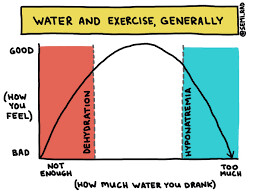
As athletes—especially ones who spend time outdoors during a heat wave—the ethos we usually hear is “hydrate, hydrate, hydrate.” However, a 2020 research article from Stanford University School of Medicine offers a different perspective. In the piece, the study’s lead author notes that overhydrating is actually more dangerous than being dehydrated.
One of the most important things to maintain balance in our blood cells is the sodium-to-water ratio, says Tamara Hew-Butler, associate professor of exercise and sport science at Wayne State University School of Medicine. When you’re dehydrated, you contain less water, causing your blood cells to shrink. However, when you drink some H2O, your cells recover quickly.
When you consume a lot of water (more than three liters in an hour), your sodium levels dip to abnormally low levels, taking you into dangerous territory. If the water count in your body is much higher than your sodium levels, you can develop hyponatremia—a dangerous result of overhydration. “If you drink too much water, all of your cells start to swell,” Hew-Butler says. “That becomes a problem in your brain, because your brain can only swell five to eight percent [beyond its normal size] before it runs out of space in the skull.”
It’s not something to be taken lightly. In some cases, hyponatremia can lead to death, Hew-Butler says. “The amount of water that leads to hyponatremia is different for everyone,” she adds. “It depends on the size of the person, the ambient temperature, and exercise intensity and duration.” However, if you need to quantify it, typically drinking about three liters of water within an hour can cause severe hyponatremia, potentially prompting a seizure, coma, or even death, Hew-Butler says.
Overhydration is a particularly large concern during the summer months. “The first thing that everybody tells you—and it’s not always wrong—is to drink lots of water,” Hew-Butler says. “But, when it’s hot out, more people die from overhydration than they do from dehydration.”
That’s because your blood cells actually retain water as a result of the heat, so you’re not quite as dehydrated as you may think.
This isn’t necessarily new information, Hew-Butler says. “The results of a 1999 study in the American Journal of Emergency Medicine support that hyponatremia is [generally] more common than heatstroke.” She adds that it’s the most common cause of serious illness in the Grand Canyon—more than heat exhaustion, grand mal seizures, nausea, and dizziness.
What should you do to achieve that balance of hydration? Drink to thirst, recommends Allen Lim, a sports physiologist and the founder of sports nutrition brand Skratch Labs. (So yes, that means skipping out on your emotional support water bottle.) However, even when you’re feeling parched, make sure to monitor your H2O intake.
“During exercise, the thirst mechanism will prioritize [sodium] balance over water balance,” Lim says. “As we lose sodium in our sweat, we will naturally drink less water to maintain sodium balance. Since there’s not as much sodium in the body, we don’t drink everything we lose, so we can keep the ratio of water to sodium the same.” Essentially, your body makes you thirsty when that sodium-to-water ratio is skewing high on sodium. And that’s when you should drink water.
You know that old saying, “Listen to your body?” That’s sage advice when it comes to hydration, especially when it’s hot out. “Drinking to thirst is important even though it can result in dehydration,” says Lim. “That dehydration is important to keep the sodium balance correct.”
by Outside Online
Login to leave a comment
Study suggests moderately active people can have a positive influence on their friends
Encouraging the general population to increase their physical activity levels has long been a frustrating challenge for public health officials, but new research has unveiled a potential new way to reach sedentary individuals: through their physically active friends. According to a study published in the journal Plos One, when sedentary individuals interacted with moderately active friends, they became more active themselves.The study
Researchers at Keene University in New Jersey used previous research analyzing how social interactions with peers can influence individual physical activity levels to develop a mathematical model to simulate how social interactions can shape a community’s physical activity levels over time. Their model showed that their physical activity levels dropped when people stopped socializing. We saw this play out in real-time during the COVID-19 pandemic when most of us were cut off from our peer groups.Their model also showed that when sedentary people interacted regularly with their moderately-active friends, they became more active over time. In other words, those of us who exercise regularly could have a positive impact on our less-active friends, encouraging them to move a little more.

It’s important to note that this study focused specifically on moderately active people. That’s not to say that those of us who are training for marathons or ultras can’t also have a positive impact on our sedentary friends, but a sedentary person may view a marathon runner as having an unattainable level of discipline or enthusiasm for activity, which may not motivate them to get started.How to encourage your sedentary friends to get active
Whether you’re training for a marathon or fitting a few 5Ks in between your busy schedule each week, you can help your sedentary friends warm up to the idea of a more active lifestyle. Here are a few tips to encourage them to get moving:Plan active get-togethers
Meeting your friend for a coffee? Get those coffees to go and invite them on a stroll. Planning a beach day? Bring a beach ball, a frisbee, or some other game that’ll get everyone on their feet. Invite your friends on weekend hikes, suggest signing up for a recreational sports team, or plan to play some backyard games at your next barbecue. Anything that gets people out of their chairs is a win.Try something new together
Your less-active friends may be intimidated to try going for a jog with you, so invite them to try an activity that you’re both novice at instead. Sign up for yoga classes, try a dance class, or sign up for golf lessons. If you’re both new at it, you’re both starting off on a somewhat even playing field.Talk about your running, but not too much
Sharing your running achievements or training plans with your friends can be motivational, but be careful not to over-do it. Your friends don’t want to hear about the splits from your last workout, and talking about your recent chaffing mishap will likely turn them off of the sport. When you talk about running, talk about how it helps you so they can see the potential benefits. “I was had a stressful day at work yesterday, but I went for a run and felt much better,” or “I tried a new route the other day and discovered a really cute neighbourhood that I’d never seen before!” are great ways to lean into the mental or emotional benefits of running.
by Running Magazine
Login to leave a comment
Pro-runner Allie Ostrander’s Five tips for avoiding injuries
Former American steeplechaser turned trail-elite Allie Ostrander shared her tips for runners to avoid injuries on social media recently, telling fans to consider it her “formal petition against running-related injuries.”
Ostrander announced her shift from track to trail in Feb. 2023 (along with her partnership with ultrarunning GOAT Kilian Jornet‘s brand NNormal) and is also a mental health and eating disorder awareness advocate.
Originally from Kenai, Alaska, Ostrander had a very successful NCAA career with Boise State University in Idaho, winning three straight NCAA titles in the 3,000m steeplechase. Her tips on avoiding injuries are excellent ones for all runners, whether they run on track, trail or roads.
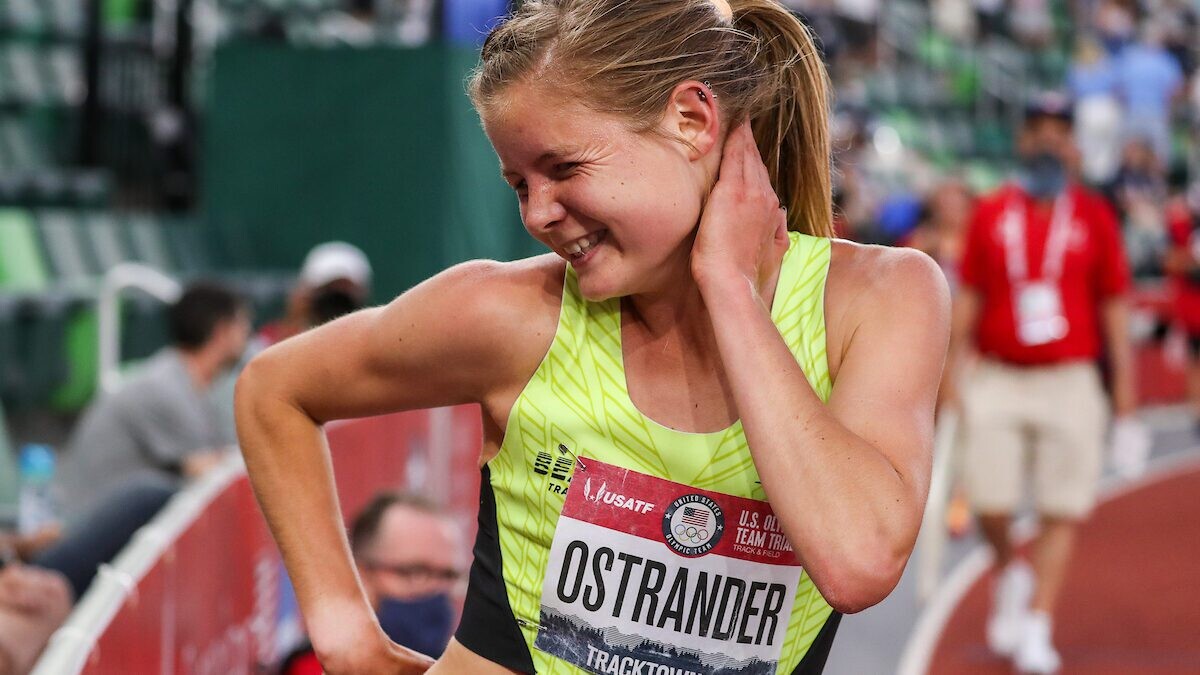
Here are Ostrander’s suggestions, along with some ideas to get you started.
Run more uphill miles
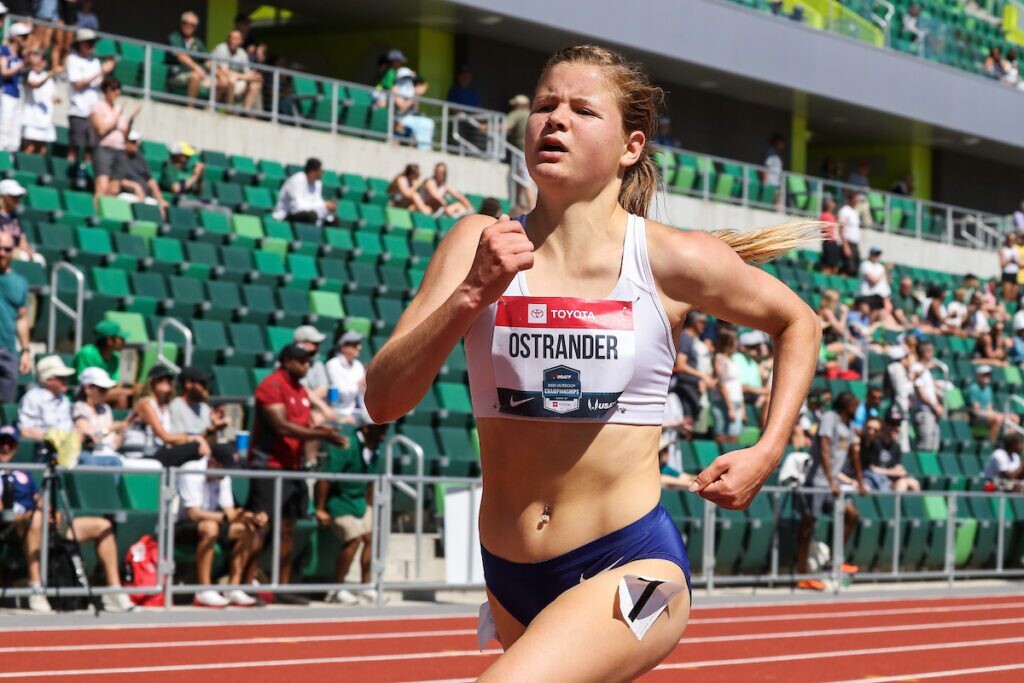
“Uphill running is lower impact and higher output, so you work harder,” shared Ostrander, “but it puts less stress on your bones.” She suggests running on the treadmill at a 3–5 percent grade, running up a long hill and getting a ride down, or doing hill repeats and walking downhill between reps.
Replace easy miles with cross training
“You don’t have to replace every easy run with a bike sesh because, let’s be honest, running is way more fun, but cross-training can be a great tool to get in some aerobic training without the impact,” Ostrander says. She suggests replacing 1–2 runs a week with a cross-training session and explains that she uses the formula of 10min of XT=1 mile running.
Try: a standing bike workout.
Don’t be afraid to strength train, lift heavy, and build muscle
Building muscle will make you a stronger runner, and you’ll be better equipped to power through hard training. “It can also correct imbalances and improve running economy,” says Ostrander.
Try: these at-home strength workouts with Canadian ultrarunner Jazmine Lowther.
Fuel
“Being in an energy deficit increases injury risk and decreases adaptation to training,” explains Ostrander. She recommends focusing on consistently giving your body the energy it needs.
Rest days are important
“Rest allows your body to absorb all the training,” Ostrander says. “Don’t wait until you feel overly tired or have some sort of pain to give yourself a day off.” It can be challenging to really allow ourselves to take the time off we need, and Ostrander suggests scheduling rest days into your training plan to keep it as much a priority as hard training.
Try: recovery day yoga to relax and unwind.
by Keeley Milne
Login to leave a comment
Why You Should Stop in the Middle of Your Run
The case for taking more than just a momentary water break
A few years ago, I was out on a run with a friend in New York. It was the first perfect day of the year—60 degrees, partly cloudy. The city seemed new again. As we jogged through the West Village, she suddenly came to a stop in front of a store window. “Let’s go in!” she said. I was baffled. But we’re in the middle of the run, I thought. How could we possibly interrupt this?

We spent a minute browsing the store and, guess what, the world didn’t end. I still got my run in. That day, my friend taught me a lesson that I try to remember whenever I’m taking my sport a little too seriously: One of the great joys of running is that you can go anywhere. Why wouldn’t you stop to enjoy all the stores, parks, cafes, and farmer’s markets along the way?
As runners, we care about the sport. We track our mileage, time, and progress—and fret when a goal outstrides us. And, yes, there’s a time and place for this structured take. Maybe we’re training for a marathon or trying to clock a speedy 5K. But as these long, lustrous days of summer roll on, I’m calling for a free-spirited approach to lacing up. What if we used our precious running hours to see our cities, towns, and neighborhoods on foot? What if we acted as a running tourist?
Summer is the perfect season to prioritize fun on your runs, says Jess Paris, a personal trainer and master tread instructor at SLT. “Heat and humidity can add extra stress and fatigue that makes it difficult to achieve pace or mileage goals,” she explains. “The summer is a great time to take some pressure off those running goals and just enjoy the movement.”
Lately, my boyfriend and I have been channeling this joie de running into our weekend mileage by sprinting to the ocean, jumping in, and jogging home. Sure, we’re a little wet on the way back, but who cares? (Need I repeat, it’s summer!) Paris has similar priorities. “I think it’s a great idea to use your runs as a travel tool to a fun destination or to explore a new place,” she says. “For example, there’s an ice cream shop in my town that I used to run to with a friend to enjoy a cone and hang around town for a bit before running back.”
Paris adds that the middle months of the year are also a great time to prioritize destination running—or taking a road trip and hitting the ground to scope out a new spot. “If you’re on vacation, check out some running routes ahead of time to explore the local area or attractions,” she says.” Just make sure you’re wearing the proper sneakers. For example, if you stumble across an unknown trail, you wouldn’t want to be caught wearing road shoes.
As you enjoy your summer of casual running, remember that you still need to rest. “Too much of anything is not good, even if you’re using running as a fun activity,” Paris says. “At the end of the day, it’s still exercise, movement, and exertion.” Balance out your efforts with plenty of stretching.
Move through dynamic stretches, such as side lunges, before you take your first step, and static stretches, like a forward fold, as you’re cooling down. “On the days when you’re not running, focus on a restorative or cross-training activity like yoga, pilates, or strength training,” Paris says. “All of those types of exercise will make you stronger and help you recover so that you can truly enjoy your fun runs injury-free.”
I’ve been a runner for eight years now, and I still love every part of it—the manic excitement of race day, jogging the sidewalks of my quiet California neighborhood before the world (or, OK, the West Coast) awakes, and the breathless, post-speed run high. It feels like it will never get old. But, to be honest, I think these wandering summer runs are my favorite. There’s something about them that lets you see your surroundings through fresh eyes. And, in this case, I get to see my own backyard anew.
As I was wrapping up writing this story, I couldn’t help myself. I turned to my boyfriend —who was working just five feet away—and said, “Hey, want to run to Venice and watch the skateboarders on the boardwalk?” Next thing I knew, we were lacing up our sneakers.
Ocean, lake, pond, pool—whatever H2O you have access to, make sure you use it to cool down at least once on today’s run.
Refuel with a mid-run snack from the farmer’s market. An incredible baker hangs out at my local spot, selling muffins, croissants, and scones. I love to grab one, digest for a few minutes in the sun, and then run home.
Let’s put an end to all the running window shopping, OK? I dare you to go in and actually poke around. If you’re stinky, just give everyone a wide berth and (of course) don’t try on any clothes.
Maybe you’ve lived in your city for years, but still haven’t visited the most famous landmark. Take this opportunity to run there, explore, then head home.
Parks are essential to the “run, lounge, repeat” lifecycle I love. Find a greenspace near you and make your way there on foot. Once there, lay down, people watch, or read a book on your phone.
by Outside Online
Login to leave a comment
Can Exercise Replace Your Antidepressant?
For centuries, we've known anecdotally that movement can improve your mood. Joggers often describe a euphoric runner's high, while swimmers recall an inner calm that lasts long after they leave the pool. In April, researchers published the strongest evidence to date showing that physical activity does more than induce these temporary feel-good effects; It can actually improve depression as effectively as medication or psychotherapy. The findings build on previous studies showing exercise can reduce anxiety, post-traumatic stress disorder, bipolar, and obsessive-compulsive disorder symptoms.
This mounting evidence doesn't suggest you should toss out your medication or skip your next therapy appointment in favor of exercise alone. But it does indicate physical activity could be a powerful first-line treatment for mental health disorders, especially when combined with other therapies.
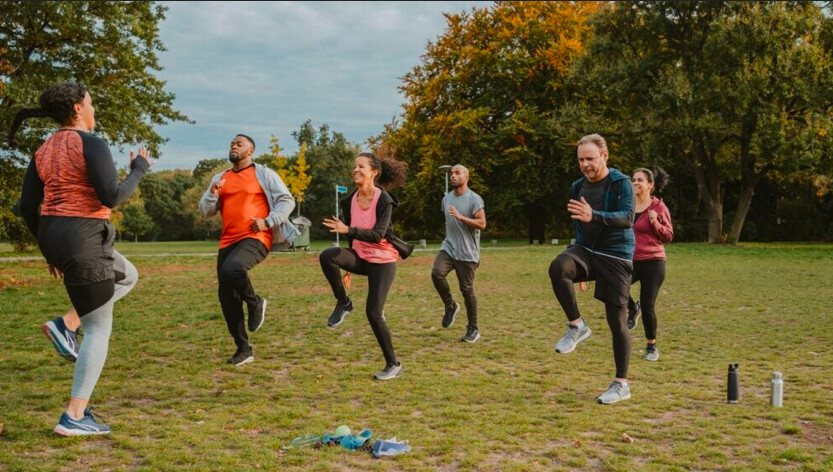
Based on the data, some experts see exercise as a safe, cheap antidepressant that could help the estimated one third of adults with mental illness who do not receive adequate treatment. And some clinicians are putting this concept into practice, doling out "exercise prescriptions" for mental health. These scripts give patients step-by-step instructions for physical activity recommendations, much like they would with antidepressants or behavioral therapy. But providers say that on the whole, the field has been slow to embrace exercise as medicine for mental illness, and "exercise prescriptions" remain the exception in clinical care, not the norm.
"Exercise is a good, underutilized tool to help with mental health conditions," Ivan Escobar Roldan, a psychiatrist in Florida who regularly writes "exercise prescriptions" for his patients and studies the use of exercise in clinical practice, says. He co-authored a study published in the Journal of Psychiatric Practice in 2021 showing that while many providers generally encourage patients to be active, they don't often give specific instructions due to a lack of training, education, or standardized clinical guidelines.
"Everyone says you should exercise more," Seattle-based clinical psychologist Julie Vieselmeyer says. "But patients always ask: What does that mean? Do I need to take an extra lap around the grocery store, or does that mean I have to go to a gym for three hours every day?"
Currently, mental health providers don't give the clearest answers to these questions.
A Mind in Movement
Exercise is as close to a miracle drug as we've got. Research shows it works as effectively as some prescription drugs in preventing and treating more than 26 different diseases.
When you start a workout, your pulse quickens and breathing deepens as your heart pumps oxygen-rich blood to your brain and muscles. Within a few minutes, you likely notice a lift in your mood as your brain releases "happy chemicals" like endorphins, dopamine, and serotonin (the same neurotransmitter targeted by antidepressants). The fleeting bliss of a runner's high results from a spike of endocannabinoids in the bloodstream-cannabis-like signaling molecules that are naturally produced in your body and induce feelings of calm.
After your strength or conditioning session wraps up, the positive effects don't stop. Over time, physical activity can increase levels of a protein called brain derived neurotrophic factor (BDNF), which leads to the creation of new neurons. More BDNF is correlated with reduced anxiety and depression, better focus, improved cognition, and sharper memory as you age.
When people exercise regularly, the brain's hippocampus-the area linked to memory and learning-has also been found to increase in volume. That's not all. With a regular workout routine, people often feel better, sleep better, eat better, and report improved relationships and work satisfaction. Exercising can burn off anxious energy as well as increase resilience to future stress. Eventually, it can even help people taper off medication and cut down on doctor's visits or medical treatments. People who start to exercise before or during middle age typically save between $824 to $1,874 annually on their health care costs after retirement.
"While medications may take a few weeks to work, you see benefits right away with exercise," Escobar Roldan says. "It's not only going to help with anxiety, depression, and many other mental health conditions, but also with patients' overall health and other chronic conditions."
Getting moving can be tough initially. Despite the upsides, less than a quarter of U.S. adults do enough aerobic exercise or strength training to meet the national physical activity guidelines. But once people get going, exercise's instant gratification often kicks off a beneficial feedback loop, Vieselmeyer says.
"When we're making healthy choices, that ends up affecting how we think about ourselves, our self-confidence, and our energy levels-things affect our emotions positively and lead to behavior change," she says. Working out isn't just about quelling anxiety, depression, or negative emotions, but fostering positive ones too.
Matthew Ellison, a late-twenties investment banker based in New York City, has experienced these benefits firsthand. Ellison has a history of anxiety and recently dealt with a bout of depression tied to work stress. With the support of his therapist, Ellison made going to the gym a daily priority. He says the routine pulled him through this period and has become a non-negotiable practice to maintain his mental health.
"Being able to clear my mind, in the morning or late at night, has honestly been the greatest thing for my mental health," Ellison says. "It's the foundation for my mental well-being."
Barriers to Entry
For more than 20 years, Vieselmeyer has been interested in exercise as medicine, and says that amid recent studies, she is seeing more acceptance of the topic across the field. But even with a robust body of evidence, providers still struggle to convert these research breakthroughs into targeted exercise prescriptions.
That's because there's little formal training or education on the topic. Some clinicians are concerned about their patients' health status and worry that exercise might lead to injury or cause a heart attack. Others simply don't have the time to discuss exercise in depth.
Many providers recommend 150 minutes (or 2.5 hours) of physical activity per week-guidelines from the U.S. Department of Health and Human Services-but are hesitant to give concrete instructions beyond that. The American Psychological Association's most recent clinical practice guidelines on depression don't mention exercise as treatment.
In his own practice, Escobar Roldan uses resources like this prescription form created by Exercise is Medicine, a global initiative coordinated by the American College of Sports Medicine. The organization also provides a handy action guide to help providers prescribe the right "dose" of physical activity for more than 40 chronic conditions, including mental health disorders. Exercise is Medicine maintains a referral program for health professionals to connect patients with qualified exercise professionals. Some insurance companies also subsidize training programs or gym memberships, or even reimburse health and fitness expenses. But these programs aren't yet commonly used in the mental health arena. "You need a lot of mounting evidence to see a paradigm shift or clinical practice change," says Escobar Roldan. "With more awareness, we're moving towards that, but we aren't there yet."
To get patients moving, Vieselmeyer and Sarah England, a clinical psychologist based in New York, don't use strict "prescriptions." Instead, they draw on techniques from cognitive behavioral therapy, one of the most evidence-based forms of therapy. The psychologists use motivational interviewing to explore the root causes of behavior and barriers to exercise. They also target behavioral activation, which uses behavioral shifts like physical activity to influence people's emotional state.
"If clients are severely depressed and unable to do their laundry, I'm not going to suggest running two miles," England, who helps patients set "SMART" goals that are specific, measurable, achievable, relevant, and time-bound, says. "We have to behaviorally activate them first, in smaller steps, like walking around the block."
A Happiness Workout
Ellison managed to establish a regular workout routine with only vague encouragement from his therapist. But for many others dealing with mental health issues, symptoms like fatigue or lack of motivation preclude their ability to exercise regularly.
"When somebody is really depressed, it's hard to put the running shoes on and get out the door, even if they know that's going to make them feel a whole lot better," Vieselmeyer says. Sometimes the easiest entry point might be medication or seeing a therapist, and then progressing to exercise, she says.
Much of the evidence behind the antidepressant and anti-anxiety effects of exercise is based on people with mild to moderate cases of mental illness. A few small studies suggest that structured workout treatments can help patients with serious mental illness in inpatient settings. But on its own, exercise is unlikely to alleviate serious mental illness, experts say.
A major reason why mental health providers have been slow to embrace exercise as treatment is because researchers haven't nailed down the exact "dose and effect" like they would with a prescription drug. More research is needed to determine which type of exercise works best, how much is needed, and who it can benefit mentally.
Based on what we know so far, the most effective exercise prescription includes physical activity that is:
Moderate to Vigorous
Escobar Roldan suggests people bring their heart rate up to the point where they are a little bit out of breath. Gardening, walking, dancing, hiking, running, or cycling can all ease symptoms of anxiety and depression.
Enjoyable
Most studies point to aerobic exercise as a way to boost your mood, but evidence shows strength or resistance training works too. It's more about getting people moving doing something they enjoy, rather than finding the "perfect" exercise, Vieselmeyer says.
Social
Group exercise sessions, from bootcamp to yoga, can be especially effective. People appear to gain more benefit when supervised by trained health and exercise professionals. There's also the extra opportunity to connect with others, which pays dividends on our mental health.
Doable
Vieselmeyer recommends starting small. No triathlon or two-a-days involved. It's more about working out consistently, not calculating the perfect ratio of Crossfit to Pilates.
"Whatever prescriptions are made going forward need to fit with people's lives, or they're just not going to do them," Vieselmeyer says. "There are already enough barriers for people to exercise."
Ultimately, physical activity isn't a silver bullet for mental health-and more intense movement isn't always the best strategy, especially for fitness fanatics who already train hard. "A good long run is not enough to process through your history of trauma," Vieselmeyer says. If exercise alone was the panacea to our mental health crisis, we wouldn't see any mental health difficulties in professional athletes, England notes.
The right exercise prescription comes down to each person's level of physical and mental fitness. "I certainly hope no one is hesitating to prescribe exercise on top of other evidence-based treatments," Vieselmeyer says. "I would rather give patients more tools than fewer, and then see where their interest lies."
by Trail Runner Magazine
Login to leave a comment
Can Exercise Replace Your Antidepressant?
Some doctors are now prescribing physical activity for mental health. Here's why.
For centuries, we’ve known anecdotally that movement can improve your mood. Joggers often describe a euphoric runner’s high, while swimmers recall an inner calm that lasts long after they leave the pool. In April, researchers published the strongest evidence to date showing that physical activity does more than induce these temporary feel-good effects; It can actually improve depression as effectively as medication or psychotherapy. The findings build on previous studies showing exercise can reduce anxiety, post-traumatic stress disorder, bipolar, and obsessive-compulsive disorder symptoms.
This mounting evidence doesn’t suggest you should toss out your medication or skip your next therapy appointment in favor of exercise alone. But it does indicate physical activity could be a powerful first-line treatment for mental health disorders, especially when combined with other therapies.
Based on the data, some experts see exercise as a safe, cheap antidepressant that could help the estimated one third of adults with mental illness who do not receive adequate treatment. And some clinicians are putting this concept into practice, doling out “exercise prescriptions” for mental health. These scripts give patients step-by-step instructions for physical activity recommendations, much like they would with antidepressants or behavioral therapy. But providers say that on the whole, the field has been slow to embrace exercise as medicine for mental illness, and “exercise prescriptions” remain the exception in clinical care, not the norm.
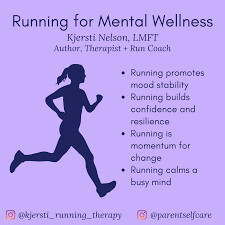
“Exercise is a good, underutilized tool to help with mental health conditions,” Ivan Escobar Roldan, a psychiatrist in Florida who regularly writes “exercise prescriptions” for his patients and studies the use of exercise in clinical practice, says. He co-authored a study published in the Journal of Psychiatric Practice in 2021 showing that while many providers generally encourage patients to be active, they don’t often give specific instructions due to a lack of training, education, or standardized clinical guidelines.
“Everyone says you should exercise more,” Seattle-based clinical psychologist Julie Vieselmeyer says. “But patients always ask: What does that mean? Do I need to take an extra lap around the grocery store, or does that mean I have to go to a gym for three hours every day?”
Currently, mental health providers don’t give the clearest answers to these questions.
Exercise is as close to a miracle drug as we’ve got. Research shows it works as effectively as some prescription drugs in preventing and treating more than 26 different diseases.
When you start a workout, your pulse quickens and breathing deepens as your heart pumps oxygen-rich blood to your brain and muscles. Within a few minutes, you likely notice a lift in your mood as your brain releases “happy chemicals” like endorphins, dopamine, and serotonin (the same neurotransmitter targeted by antidepressants). The fleeting bliss of a runner’s high results from a spike of endocannabinoids in the bloodstream—cannabis-like signaling molecules that are naturally produced in your body and induce feelings of calm.
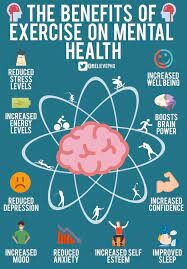
After your strength or conditioning session wraps up, the positive effects don’t stop. Over time, physical activity can increase levels of a protein called brain derived neurotrophic factor (BDNF), which leads to the creation of new neurons. More BDNF is correlated with reduced anxiety and depression, better focus, improved cognition, and sharper memory as you age.
When people exercise regularly, the brain’s hippocampus—the area linked to memory and learning—has also been found to increase in volume. That’s not all. With a regular workout routine, people often feel better, sleep better, eat better, and report improved relationships and work satisfaction. Exercising can burn off anxious energy as well as increase resilience to future stress. Eventually, it can even help people taper off medication and cut down on doctor’s visits or medical treatments. People who start to exercise before or during middle age typically save between $824 to $1,874 annually on their health care costs after retirement.
“While medications may take a few weeks to work, you see benefits right away with exercise,” Escobar Roldan says. “It’s not only going to help with anxiety, depression, and many other mental health conditions, but also with patients’ overall health and other chronic conditions.”
Getting moving can be tough initially. Despite the upsides, less than a quarter of U.S. adults do enough aerobic exercise or strength training to meet the national physical activity guidelines. But once people get going, exercise’s instant gratification often kicks off a beneficial feedback loop, Vieselmeyer says.
“When we’re making healthy choices, that ends up affecting how we think about ourselves, our self-confidence, and our energy levels—things affect our emotions positively and lead to behavior change,” she says. Working out isn’t just about quelling anxiety, depression, or negative emotions, but fostering positive ones too.
Matthew Ellison, a late-twenties investment banker based in New York City, has experienced these benefits firsthand. Ellison has a history of anxiety and recently dealt with a bout of depression tied to work stress. With the support of his therapist, Ellison made going to the gym a daily priority. He says the routine pulled him through this period and has become a non-negotiable practice to maintain his mental health.
“Being able to clear my mind, in the morning or late at night, has honestly been the greatest thing for my mental health,” Ellison says. “It’s the foundation for my mental well-being.”
For more than 20 years, Vieselmeyer has been interested in exercise as medicine, and says that amid recent studies, she is seeing more acceptance of the topic across the field. But even with a robust body of evidence, providers still struggle to convert these research breakthroughs into targeted exercise prescriptions.
That’s because there’s little formal training or education on the topic. Some clinicians are concerned about their patients’ health status and worry that exercise might lead to injury or cause a heart attack. Others simply don’t have the time to discuss exercise in depth.
Many providers recommend 150 minutes (or 2.5 hours) of physical activity per week—guidelines from the U.S. Department of Health and Human Services—but are hesitant to give concrete instructions beyond that. The American Psychological Association’s most recent clinical practice guidelines on depression don’t mention exercise as treatment.
In his own practice, Escobar Roldan uses resources like this prescription form created by Exercise is Medicine, a global initiative coordinated by the American College of Sports Medicine. The organization also provides a handy action guide to help providers prescribe the right “dose” of physical activity for more than 40 chronic conditions, including mental health disorders. Exercise is Medicine maintains a referral program for health professionals to connect patients with qualified exercise professionals. Some insurance companies also subsidize training programs or gym memberships, or even reimburse health and fitness expenses. But these programs aren’t yet commonly used in the mental health arena. “You need a lot of mounting evidence to see a paradigm shift or clinical practice change,” says Escobar Roldan. “With more awareness, we’re moving towards that, but we aren’t there yet.”
To get patients moving, Vieselmeyer and Sarah England, a clinical psychologist based in New York, don’t use strict “prescriptions.” Instead, they draw on techniques from cognitive behavioral therapy, one of the most evidence-based forms of therapy. The psychologists use motivational interviewing to explore the root causes of behavior and barriers to exercise. They also target behavioral activation, which uses behavioral shifts like physical activity to influence people’s emotional state.
“If clients are severely depressed and unable to do their laundry, I’m not going to suggest running two miles,” England, who helps patients set “SMART” goals that are specific, measurable, achievable, relevant, and time-bound, says. “We have to behaviorally activate them first, in smaller steps, like walking around the block.”
Ellison managed to establish a regular workout routine with only vague encouragement from his therapist. But for many others dealing with mental health issues, symptoms like fatigue or lack of motivation preclude their ability to exercise regularly.
“When somebody is really depressed, it’s hard to put the running shoes on and get out the door, even if they know that’s going to make them feel a whole lot better,” Vieselmeyer says. Sometimes the easiest entry point might be medication or seeing a therapist, and then progressing to exercise, she says.
Much of the evidence behind the antidepressant and anti-anxiety effects of exercise is based on people with mild to moderate cases of mental illness. A few small studies suggest that structured workout treatments can help patients with serious mental illness in inpatient settings. But on its own, exercise is unlikely to alleviate serious mental illness, experts say.
A major reason why mental health providers have been slow to embrace exercise as treatment is because researchers haven’t nailed down the exact “dose and effect” like they would with a prescription drug. More research is needed to determine which type of exercise works best, how much is needed, and who it can benefit mentally.
Based on what we know so far, the most effective exercise prescription includes physical activity that is:
Escobar Roldan suggests people bring their heart rate up to the point where they are a little bit out of breath. Gardening, walking, dancing, hiking, running, or cycling can all ease symptoms of anxiety and depression.
Most studies point to aerobic exercise as a way to boost your mood, but evidence shows strength or resistance training works too. It’s more about getting people moving doing something they enjoy, rather than finding the “perfect” exercise, Vieselmeyer says.
Group exercise sessions, from bootcamp to yoga, can be especially effective. People appear to gain more benefit when supervised by trained health and exercise professionals. There’s also the extra opportunity to connect with others, which pays dividends on our mental health.
Vieselmeyer recommends starting small. No triathlon or two-a-days involved. It’s more about working out consistently, not calculating the perfect ratio of Crossfit to Pilates.
“Whatever prescriptions are made going forward need to fit with people’s lives, or they’re just not going to do them,” Vieselmeyer says. “There are already enough barriers for people to exercise.”
Ultimately, physical activity isn’t a silver bullet for mental health—and more intense movement isn’t always the best strategy, especially for fitness fanatics who already train hard. “A good long run is not enough to process through your history of trauma,” Vieselmeyer says. If exercise alone was the panacea to our mental health crisis, we wouldn’t see any mental health difficulties in professional athletes, England notes.
The right exercise prescription comes down to each person’s level of physical and mental fitness. “I certainly hope no one is hesitating to prescribe exercise on top of other evidence-based treatments,” Vieselmeyer says. “I would rather give patients more tools than fewer, and then see where their interest lies.”
by Outside Online
Login to leave a comment
This Groom Literally Ran to the Altar Last Weekend
He ran a marathon from his family’s lake house to the wedding venue—and then said “I do.”
People deal with pre-ceremony jitters and mark the occasion of their wedding in myriad ways. Sometimes that entails a shot of whiskey, taking a long walk, or practicing yoga. For one Chicago man, running a marathon to his wedding venue last weekend was just the ticket.

On Thursday, before saying “I do,” Chicago runner Simon Tanzman laced up a pair of black New Balance trainers and completed his “Running to the Altar” marathon, hoofing it from his family’s lake house to his wedding venue, the Morris Estate in Sawyer, Michigan. In a video interview with ABC 57 just 24 hours before the wedding, Tanzman told the local news station how he got the idea to tackle this nuptial run. “So this started because about a year ago I decided to just randomly see about how far was it from our cabin in Sawyer, Michigan to the wedding venue, and it was 21 miles—almost a marathon, but 5 miles short,” he said. “Probably a stupid idea, but I was like, ‘Hey babe, what would you think?’ ‘Whatever you want, babe.’ And here we are.”
Holly Hurston fully supports her husband’s running goals. She said, “He just really loves to challenge himself, and any kind of goal he can attain … he’s not crazy.”
By the time the festivities began late Saturday afternoon, the groom was all cleaned up and dressed to the nines in a light gray suit with purple accents, dancing up a storm with his bride. You’d never know he’d just pulled off such a daunting athletic feat.
Tanzman started running as a hobby a few years ago to get in shape and says he fell in love with the sport. Including his run to the altar, he’s run five marathons, three official races, and two solo, self-created challenges. The first of those runs, taken up early in the pandemic when most races and events were canceled or virtual, was one Hurston created for him, called the “Hippity Hoppity Holly Half.”
She made a custom race T-shirt for Tanzman, and had him run a path along Lake Michigan, waiting for him along the course with water, Gatorade, and snacks, “just always being there for him, showing my support and love for him,” she said.
“I couldn’t have done it without her driving around the course,” said Tanzman.
That kind of mutual love and support surely bodes well for the couple’s marriage, and is sure to give the newlywed wings at Tanzman’s next race, October’s Chicago Marathon
by Runner’s World
Login to leave a comment
Runners: use yoga and meditation to improve their mental game
JN Yoga and meditation are powerful practices that can enhance a runner’s focus and mental toughness during a race. Anyone who’s tried tackling a 5K PB or reached a marathon finish line knows just how important mental resilience is to performance. By incorporating yoga and meditation into your routine, you can cultivate a calm and focused mind, improve your ability to cope with discomfort and reduce the effects of nerves on race day.
Runner and yoga instructor Katherine Moore explains that the practice of deep breathing while moving through challenging yoga postures teaches runners how to remain calm during difficult workouts and races.
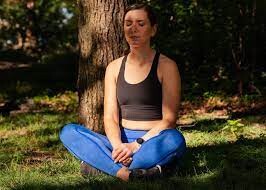
“When you get into challenging poses, it’s not easy. You have to relax your mind, deepen your breath and stay calm,” she says. “There’s always a point in a race when your brain says ‘Get me out of here, I’m done!’ If you can get comfortable in the discomfort, you can start to move through that.”
Not convinced? Here are four ways yoga and meditation can improve your mental toughness on race day.
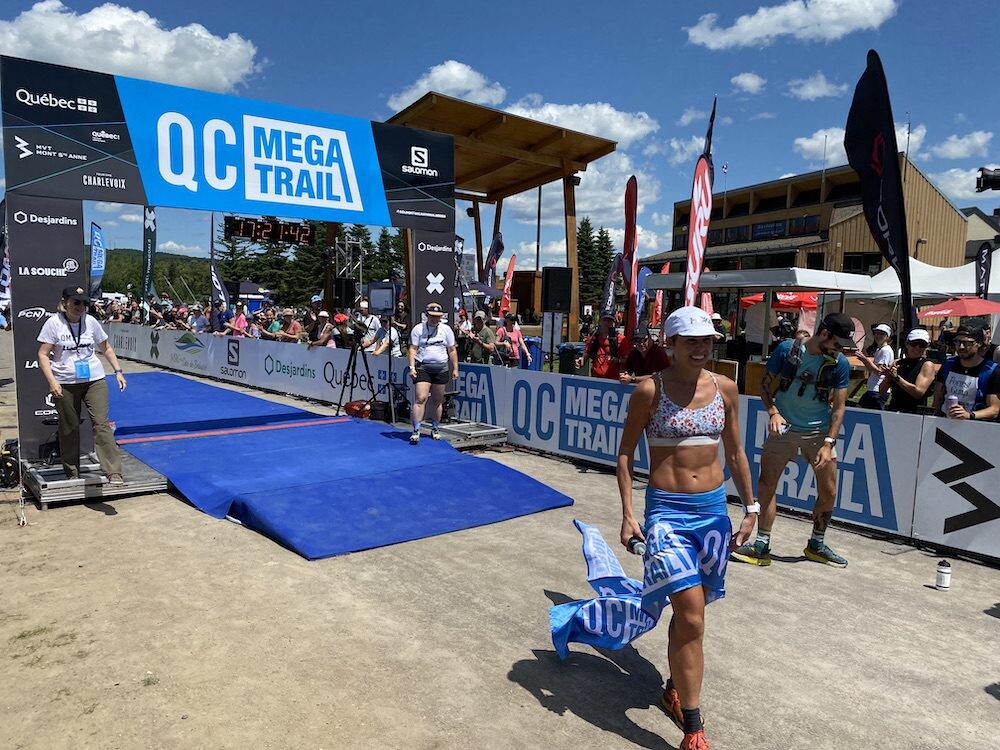
Cultivating mental focus
Yoga and meditation promote mindfulness, which is the practice of bringing one’s attention to the present moment. By practising mindfulness, runners learn to focus on their breath, body sensations, and thoughts without judgment. This heightened awareness helps runners stay present during a race, preventing their minds from wandering and enabling them to concentrate on their performance and strategy.
Managing discomfort
Pushing through intense efforts during a run or race is just as mentally challenging as it is physically challenging. Yoga and meditation teach runners to develop a better relationship with discomfort. Through breathing exercises and body awareness techniques, runners can learn to observe sensations of discomfort without becoming overwhelmed or consumed by them. This mental resilience allows runners to endure physical challenges with a greater sense of calm and control.
Stress reduction
Many runners struggle with pre-race jitters and anxiety. Yoga and meditation are well-known for their stress-reducing benefits. These practices activate the relaxation response in the body, which helps reduce stress hormones and promotes a sense of calm and well-being. By incorporating regular yoga and meditation sessions into your training, you can mitigate race-related stress and approach races with a clearer and more focused mindset.
Visualization and positive affirmations
Yoga and meditation provide an ideal platform for runners to visualize their race success and cultivate positive affirmations. During meditation, you can visualize yourself crossing the finish line strong, overcoming challenges and achieving your goals. Positive affirmations, such as repeating motivational statements, can help boost self-belief and mental toughness, empowering runners to stay determined and focused even in the face of adversity.
Incorporating yoga and meditation into your training routine is beneficial for physical performance and mental well-being. By cultivating focus, managing discomfort, reducing stress and visualizing success, these practices provide you with valuable tools to improve your mental toughness in workouts and races.
Meet Katherine Moore
Moore got into running when she was 18, after moving to Vancouver, and ran her first marathon in New York City in 2005. She progressed in the sport, eventually running a 2:47 marathon, crossing the finish line of the 2010 Toronto Waterfront Marathon as the first Canadian female. Having been a yoga instructor for several years already, Moore eventually combined her two passions and created the KM Run Club in Vancouver, where runners meet for workouts and yoga classes.
To learn more about Moore, her run club, and her yoga teaching, head to her website at runningintoyoga.ca or check out her YouTube channel for daily yoga and pilates workouts.
by Brittany Hambleton
Login to leave a comment
Yoga by the Numbers: The Stats on Yoga and Mental Health
32 studies reviewed and analyzed by the British Journal of Sports Medicine demonstrated that people who regularly engaged in physically active yoga were likely to have fewer depressive symptoms than those who used other types of interventions. Yoga types included in the study were hatha, vinyasa, SVYASA, Kundalini, and Kripalu. Sessions were weekly and lasted between 20 and 90 minutes.
Try this Easy Hatha Practice

1. Begin in Sukhasana (Easy Pose).
2. After a few breaths, bring your right arm overhead and stretch into a sidebend. Repeat on the other side.
3. Next, reach both arms out in front of you and come into Paschimottanasana (Seated Forward Bend). For a deeper stretch, straighten both legs out into a V shape.
4. Next, place your left arm on your left leg and bring your right arm over your head to stretch into a sidebend.
5. Repeat on the other side.
6. Finish in Baddha Konasana (Bound Angle Pose).
by Yoga Journal
Login to leave a comment
Five Recovery Foods That Pro Athletes Can’t Get Enough Of
The best athletes don’t just train hard—they also recover smart. And a big part of effective recovery is the post-workout meal.
A good after-exercise nutrition plan can help an athlete replace the energy they burned during a workout, repair and rebuild muscles, and provide the fuel they need to crush their next training session, according to Jordan Hill, a Colorado-based registered dietitian and certified specialist in sports dietetics with Top Nutrition Coaching. The resulting gains can be significant.


Just ask Lea Davison. When the two-time Olympic mountain biker worked with a nutritionist some 10 years ago to dial in her post-workout fueling plan, she “really noticed the difference,” describing a reduction in rabid hunger and a feeling of being “stronger all around.”
When curating a post-workout snack or meal, folks should look for two main things: carbs and protein, says Hill. Carbs help reduce inflammation, boost immunity, and stimulate the release of insulin, a muscle-building hormone that also helps refill your body’s glycogen stores (your muscles energy source). Protein helps refill your glycogen stores as well, and also halts muscle breakdown and promotes the growth of new muscle, Hill explains. Moreover, when combined, carbs and protein reduce cortisol, a hormone that causes muscle breakdown.
Athletes should consider foods rich in antioxidants like fruits and vegetables, and omega-3s like nuts, seeds, and fish, as they tamp down inflammation and further assist in the recovery process, Hill explains. It’s also important to keep in mind hydration and electrolyte replenishment, especially sodium and potassium.
When it comes to carbs and protein, the amount you consume matters. After an intense workout, look for a three-to-one ratio of carbs to protein, or closer to a two-to-one ratio if your goal is weight loss, says Hill. You can calculate your target amount of protein in grams by dividing your bodyweight in kilograms in half. Then, multiple that figure by two or three to get your carbohydrate value in grams, Hill explains.For example, with the three-to-one ratio, someone who weighs 150 pounds (68 kilograms) would have a target protein goal of 30 to 35 grams and a target carbohydrate goal of 90 to 105 grams. Keep in mind this guidance applies only to intense workouts—the type that leave you sweaty, tired, and potentially sore the next day. Following a gentler workout—say, a yoga session or quick 20-minute strength routine—these specific ratios aren’t as important, says Hill, who recommends folks in those scenarios just follow their general eating patterns for the day.
Last tip: Pay attention to timing. Women should aim to eat their protein amount within 30 minutes of a workout. That’s because certain hormone fluctuations that occur in women post training can accelerate muscle breakdown, explains Hill, and getting in protein quickly can help combat that. Women can eat their carbs alongside the protein, or eat the carbs separately up to two hours after the workout. The guidance is a little less strict for men: so long as they eat both the protein and carbs within two hours of exercising, they’ll reap the benefits.
Need some inspiration for your next post workout meal? We tapped two-time Olympic mountain biker Davison and four other elite athletes to learn what they typically feast on after a tough training session.Pro snowboarder and Olympic silver medalist Julia Marino usually gravitates towards a smoothie with a mixture of frozen fruit, coconut milk, yogurt, and protein powder. “It’s not too heavy,” says Marino of her go-to snack. “When I’m done working out and pretty warm, I’m craving something light and colder that’s easily digestible.”
Meagan Martin, a pro climber and American Ninja Warrior women’s champion, is also a fan of the post workout smoothie. Her concoction often features a mix of frozen fruits and veggies (like banana, pineapple, blueberries and spinach), along with cinnamon, chia seeds, almond milk, almond butter, and sometimes whey protein. “I have this after any workout,” says Martin. “Whether it’s a climbing session or a cardio workout, it’s just the thing my body needs.”
Hill, the nutritionist, endorses these types of smoothies as a great way to get antioxidants, hydration, and protein following a workout. Just be sure to pay attention to portion sizes to ensure you’re hitting a good ratio of carbs to protein, she advises.
During cold months, Davison frequently refuels with a fruit smoothie, similar to the ones described above. But after a long ride on hot days, she favors a DIY slushie: She blends a scoop of unflavored protein powder with lemonade and frozen, locally-picked strawberries.“It’s easy to drink,” she says, adding that the tartness of the lemonade helps counterbalance the sweet chews, bars, and gummies she consumes during her ride. If her workout concludes at home, she’ll quickly whip this up within the 30-minute recovery window, or, if she’s ending a ride at a trailhead, she’ll make it in advance and stash it in a Yeti cooler so it stays chilled.
This concoction, says Hill, offers “great hydration” and electrolytes in addition to protein. The strawberries and lemonade (so long as it’s sugared) provide carbs, she adds. If you’re making this at home, Hill recommends monitoring the portion size to ensure the carb to protein ratio is sufficient.Adidas-sponsored athlete Chris Nikic, who in October became the first person with Down syndrome to finish the Ironman World Championship, is a Chipotle devotee. The 23-year-old athlete’s favorite food is rice, and every day for lunch he orders a heaping burrito bowl with all the fixings: brown and white rice, brown and black beans, chicken, veggies, corn, cheese, and guacamole. The end result is “a four-pound bowl,” says Nikic, who is currently training for the Tokyo Marathon and notes the meal tastes best after a run.
Nikic’s go-to is a “great option,” says Hill. It provides protein, lots of carbs—including both easy-to-digest simple carbs from the white rice and satiating fiber-rich carbs from the brown rice—as well as antioxidants from the veggies.
When it comes to post exercise fueling, Dylan Bowman is a creature of habit. For years now, the professional trail runner has consumed the same recovery meal pretty much every day. He’ll scramble two eggs with greens and onions and then “liberally” butter two pieces of bread. Sometimes, he adds avocado if he’s feeling extra hungry. “I love it because it’s simple and quick,” Bowman explains. “I can get it in quickly and get the recovery process started before I begin the work day.”
This meal hits the big components, says Hill: protein with the eggs, healthy fat with the avocado, and carbohydrates with the toast. If you need more calories depending on the intensity of your workout, Hill recommends either increasing the portion sizes or pairing the meal alongside something else, like oatmeal with berries and honey.When Davison is craving “real” food (i.e. something she can chew, not just sip) she whips up eggs fried over medium with toast, or concocts egg tacos with cheddar cheese, salsa, scrambled eggs, and corn tortillas. “Eggs are my go-to for lunch mostly,” she says.
The breakfast taco option is really similar to Bowman’s staple and provides carbs from the tortillas plus protein from the eggs. The salsa adds antioxidants. Depending on the intensity of the workout, Hill might recommend adding extra carbs to properly refuel—things like orange juice, chocolate milk, or a small cup of fruit.
by Outside
Login to leave a comment
How to get back into running after a long break
Dusting off your running shoes after a break can be intimidating. If an injury, pregnancy or busy work schedule got in the way of your passion for running, you may wonder if you’re now too out of shape. Will your body even remember how to run a certain pace? Or will your legs feel weak and wobbly? And how many times do you have to pound pavement or hop on a treadmill before it feels fun again?
The good news is that your muscles retain a memory of their former strength, which can make it easier to bounce back than if you were starting from scratch. If you were sidelined for only two or three weeks, you may not even notice a significant change in your running performance, especially if you remained physically active during your time off.
If it has been longer, you may not want to rush back to several-mile runs. Mix running with walking, take time building up strength in unused muscles, and use a few tricks to motivate and reward yourself.
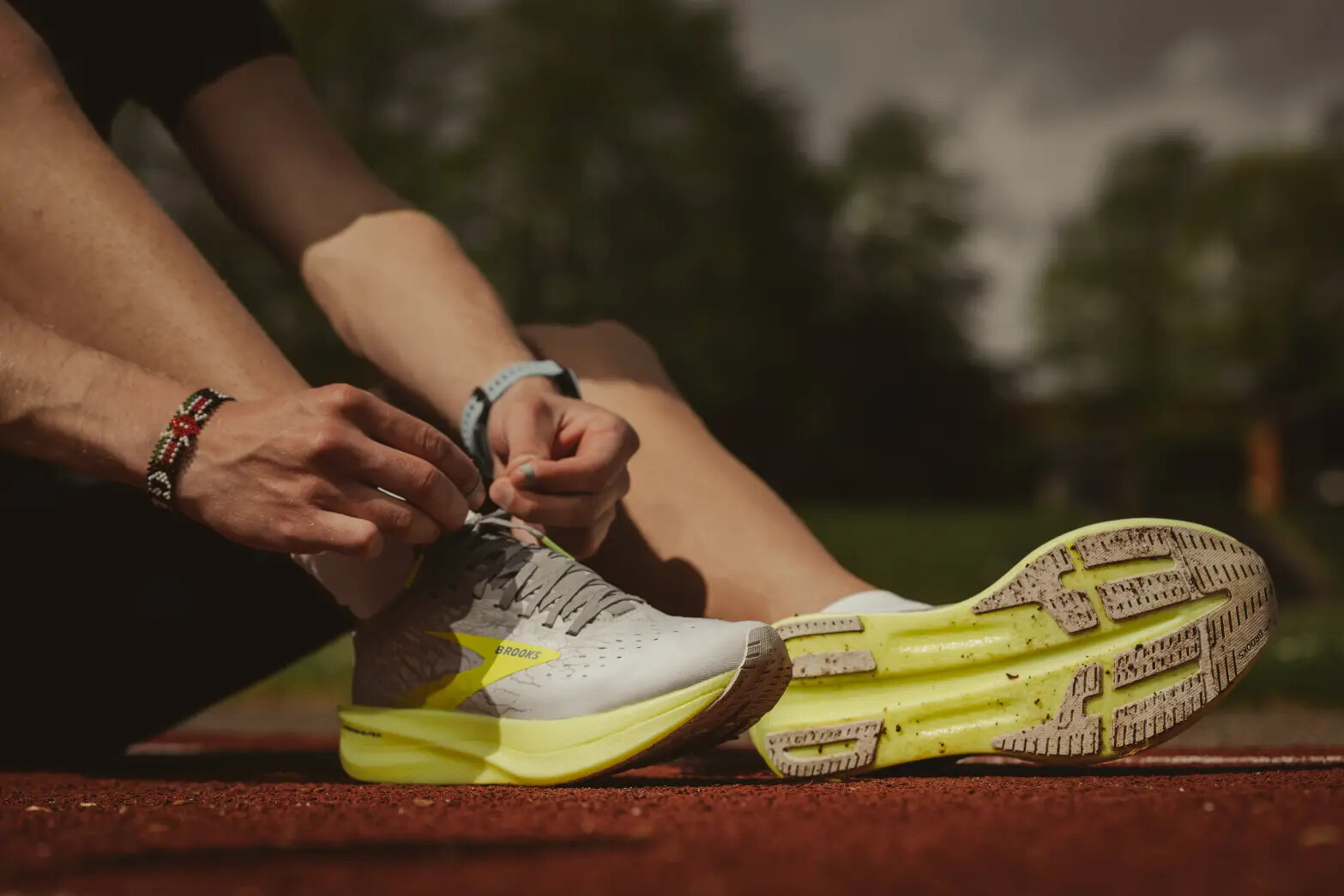
It can take about two months for a new behavior to become automatic. Once it does, it also becomes less taxing. But until then, you want to minimize the potential for injury and frustration. Use these expert-backed tips to get past the annoying retraining period so you can hit the open road with passion.
Ease into a routine.

You are more likely to stick with a running habit if you start with small goals. That may mean holding yourself back a bit, both in terms of pace and distance. “Slow and steady wins the race,” said Karena Wu, a physical therapist and owner of ActiveCare Physical Therapy in New York City. Slow down until you can pass the talk test, which means carrying on a conversation while running.
Try to do two to three short, easy runs per week. You could also follow a couch to 5K training plan designed for beginner runners and those who are returning after a long break. Alternatively, you may use a strategy that incorporates walking breaks into your runs.
Whichever plan you pick, be sure it has elements of strength training, stretching and resting. The point is to stay consistent and remember that you are using this time to recondition the muscles, tendons, ligaments and connective tissues in your legs, Dr. Wu said.
Build in immediate rewards.
You may think you can muscle through the first few weeks or months of running, but research suggests that motivation alone is not always enough. Pairing small, immediate rewards to a task — like watching Netflix while on the treadmill or treating yourself to an Epsom salt bath after a long trail run — can make it easier and more enjoyable to continue doing these activities.
“People repeat behaviors that they enjoy,” said Wendy Wood, a research psychologist at the University of Southern California and the author of “Good Habits, Bad Habits.” “If you hate running to begin with, there’s probably not much you can do to motivate yourself to repeat it.”
Short-term rewards can carry you through the days when your motivation is lagging. And they may even accelerate the formation of your new running habit.
Research shows that you can also get psychological rewards from running with a group of friends, affirmations from a coach or listening to your favorite music. Some studies have shown that people who listen to music are able to run faster, perform better and feel less exhausted.
Start strength training.
Strength training helps prepare your body for running again and can keep you injury free for the long haul. Many physical therapists and running experts even recommend strength training a few weeks before returning to running to build up muscle strength, increase flexibility and improve overall biomechanics.
“I think a lot of people use running to get in shape, but I would really recommend getting in shape to get back to running,” said Irene Davis, an expert on the biomechanics of running at the University of South Florida.
Runners tend to be weak in their feet and ankles, as well as their hips and glutes, Dr. Davis said. To strengthen these areas, try weight lifting, yoga, calisthenics or plyometrics at least two days per week.
Dr. Davis and Dr. Wu recommended exercises that train multiple muscles at the same time, like single and double leg calf raises, lateral band walks (or monster walks), planks, lunges, squats and step-ups.
Stretch.
A well-designed warm-up can also get your blood flowing and prepare your muscles for running. Dr. Wu and Dr. Davis recommended dynamic stretches, in which you move your joints and muscles through full ranges of motion, mimicking the movement you’re about to perform without holding them in place. For runners, they are often the same exercises used in strength training, like lunges and squats, as well as butt kicks and high knees.
Research has offered mixed and often contradicting results regarding the benefits of cooling down after a workout. But many athletes and physical therapists, including Dr. Wu, recommend static stretches, in which you hold a position for a period of time, after a run. She also recommended bringing your knee to your chest, pulling your ankle toward your glutes, leaning against a wall to stretch your calves or going into a deep lunge and moving your hips in a circle. Experiment with stretching and see if it makes you feel more flexible or helps you regain energy for the next run.
Get enough rest.
Just because your body remembers how to do a five-minute mile doesn’t mean your muscles and joints are ready for the toll running can take. While you are rebuilding stamina and strength during runs, you’re also breaking your body down in many ways, like opening microscopic tears in your muscles. Taking at least one day off a week will help avoid injury and let you come back stronger, allowing your body time to recover.
During each run, your body also depletes its stores of glycogen, a type of carbohydrate saved in the muscles and liver. Resting and refueling helps replenish these reserves so that you can use them as energy when you run again.
Remind yourself that you are making progress throughout the whole process. Running is an invigorating way to exercise with the breeze in your hair and the ground at your feet. So dust off those shoes and head out the door.
by Knvul Sheikh
Login to leave a comment


